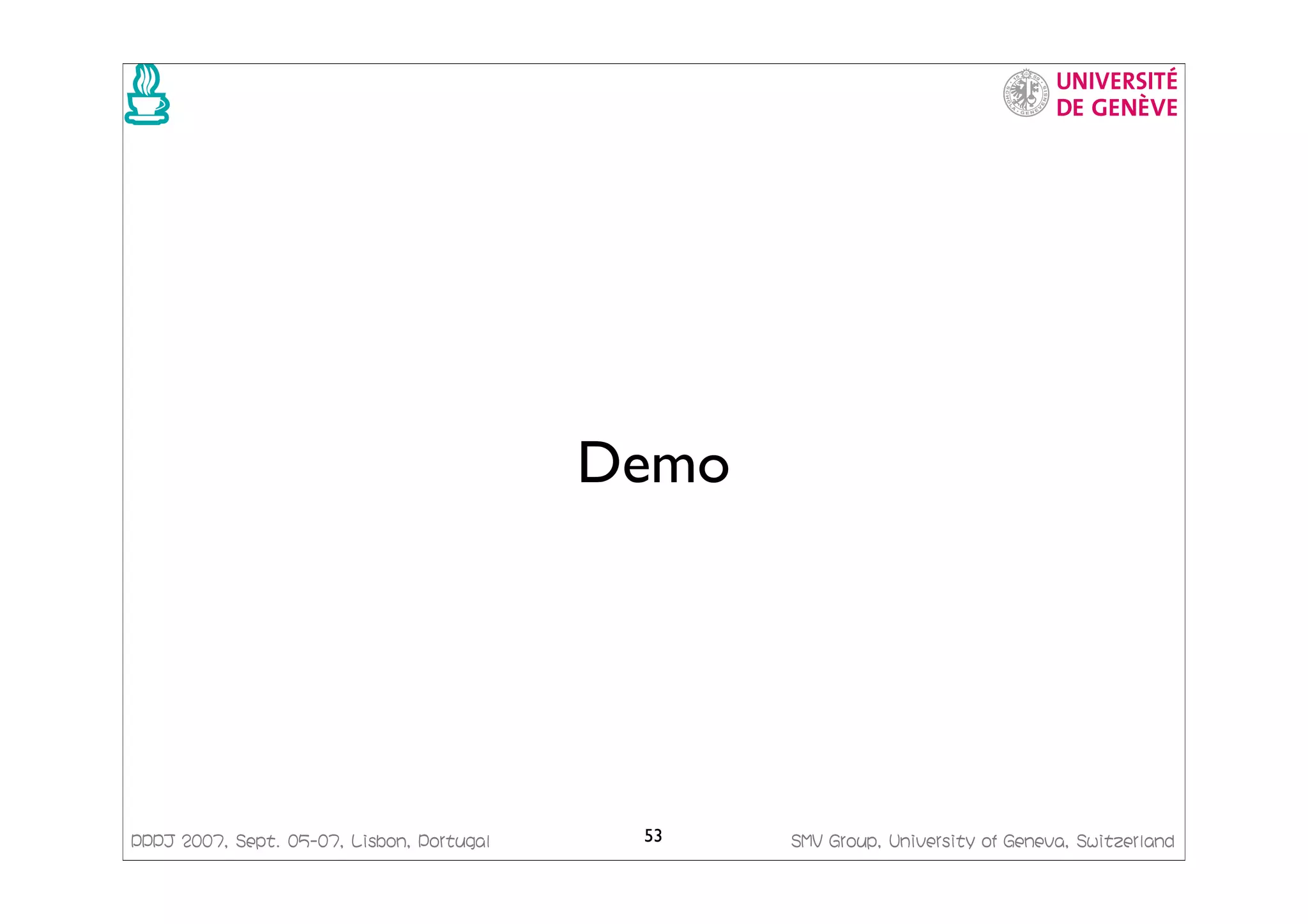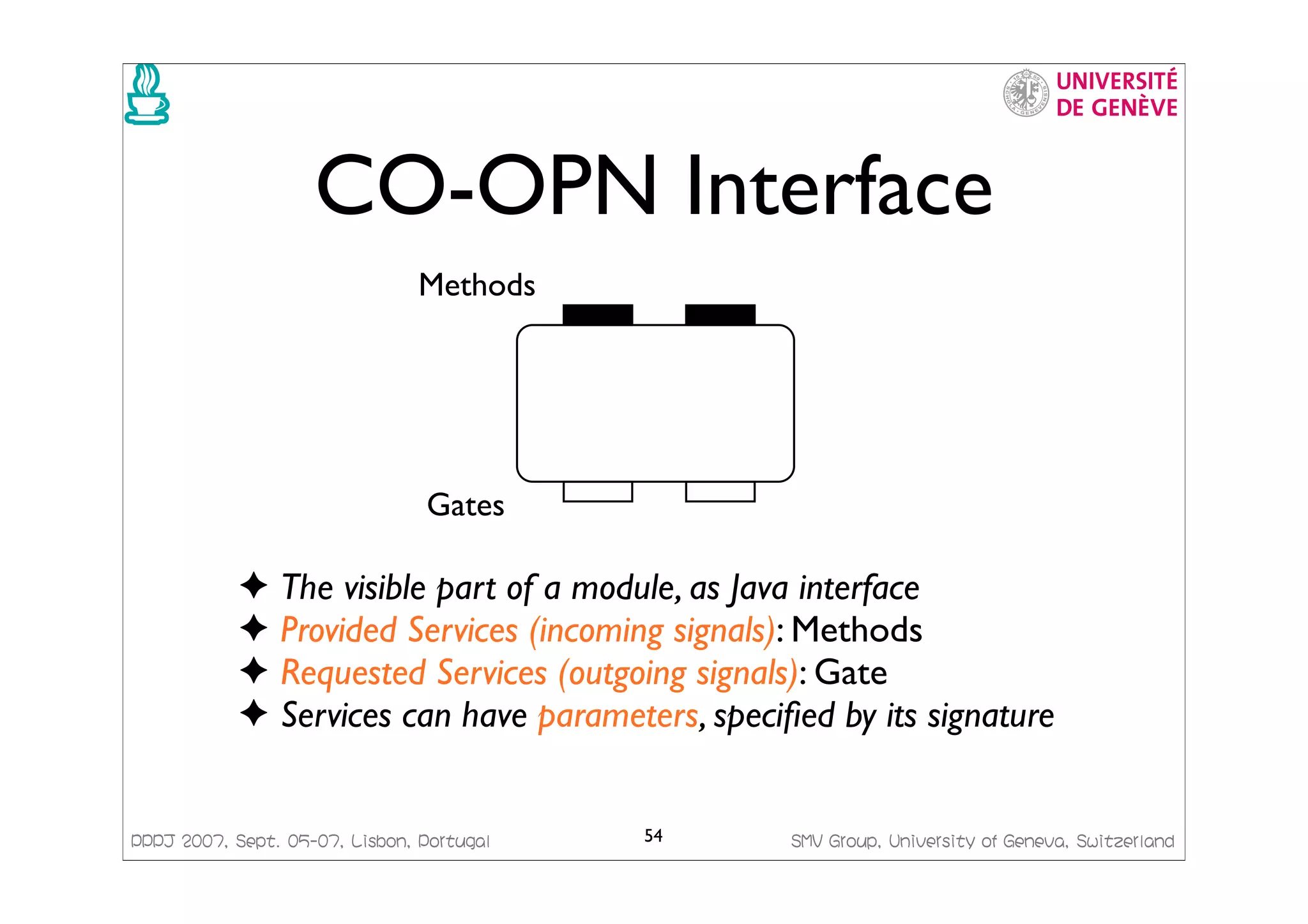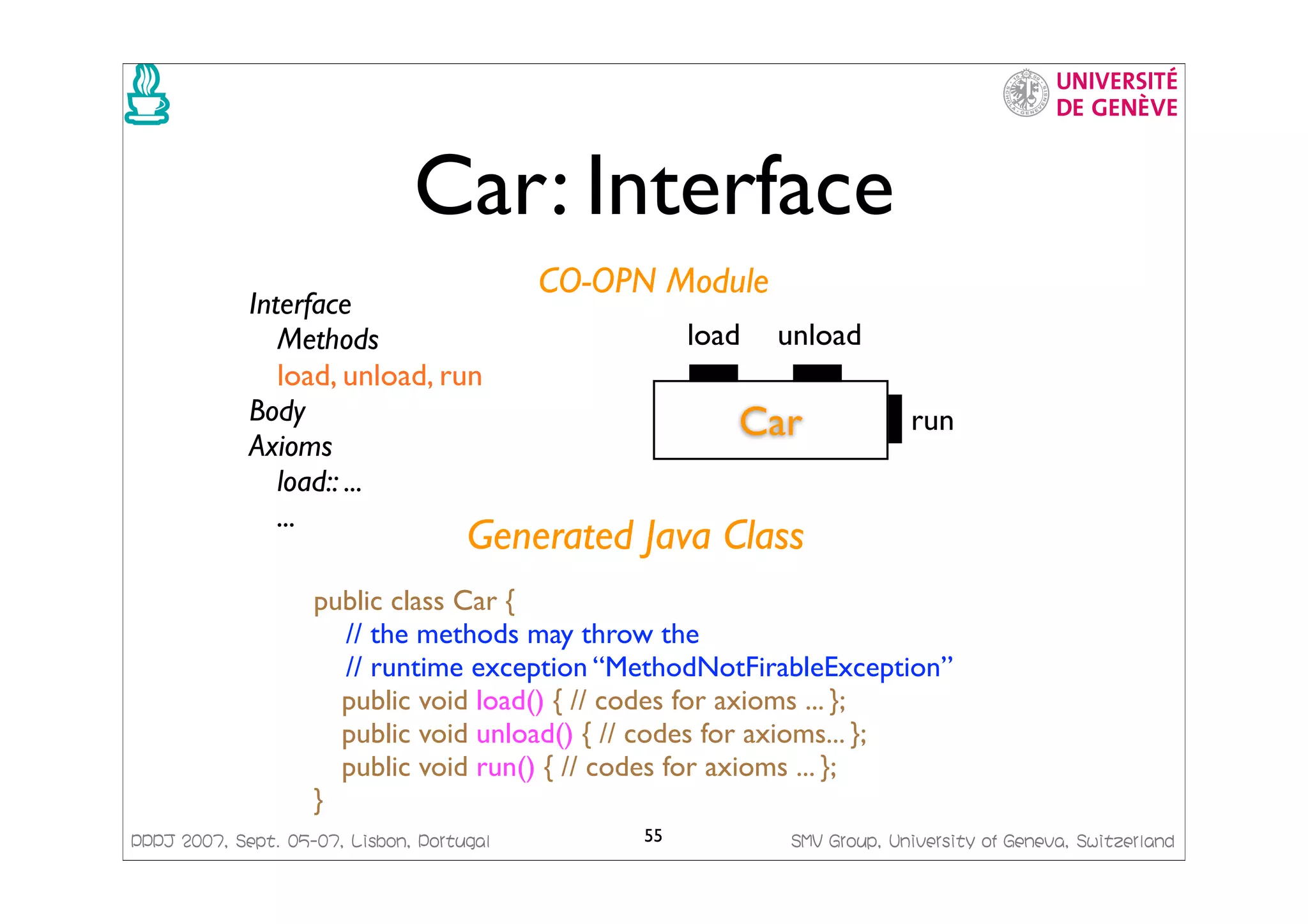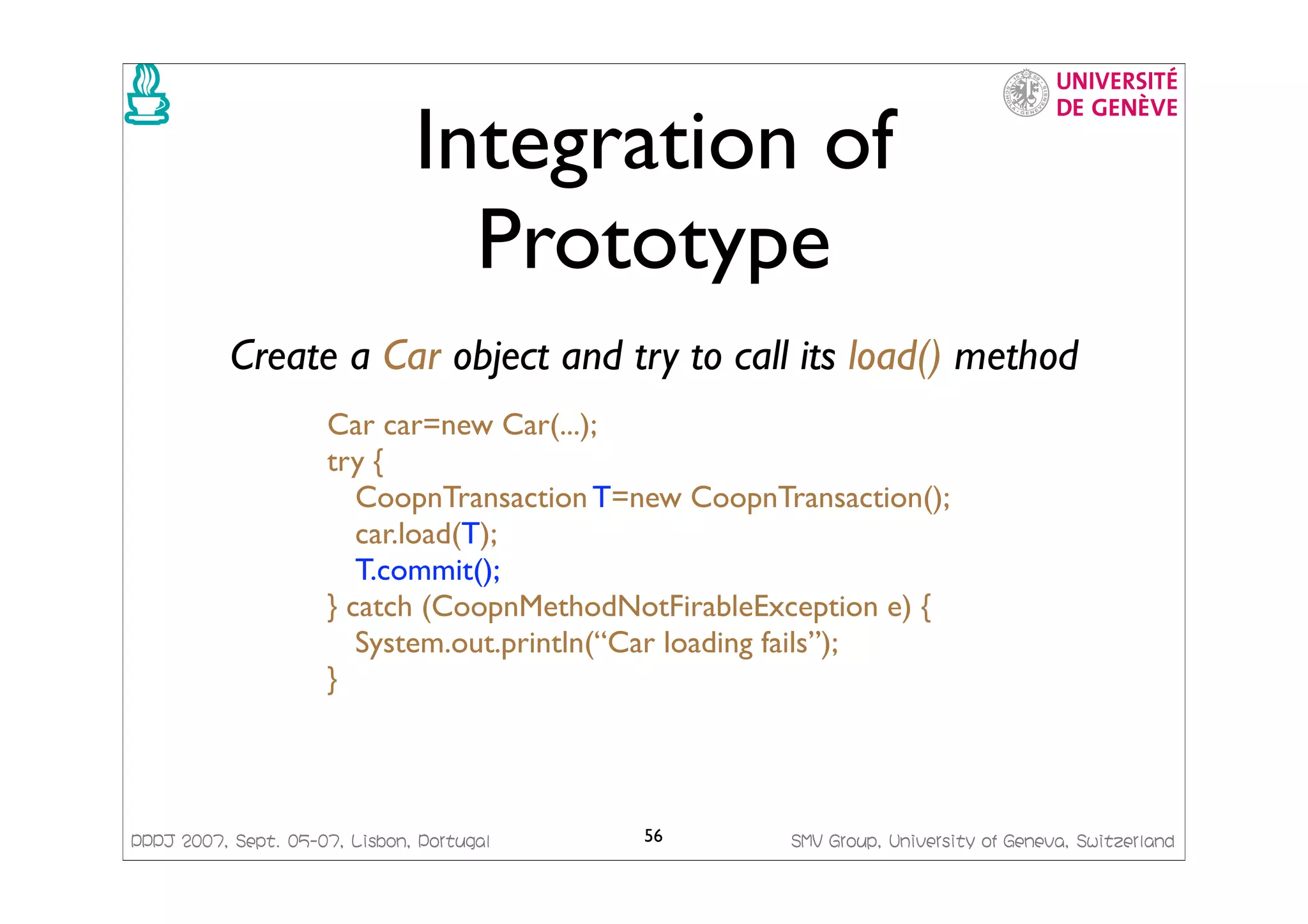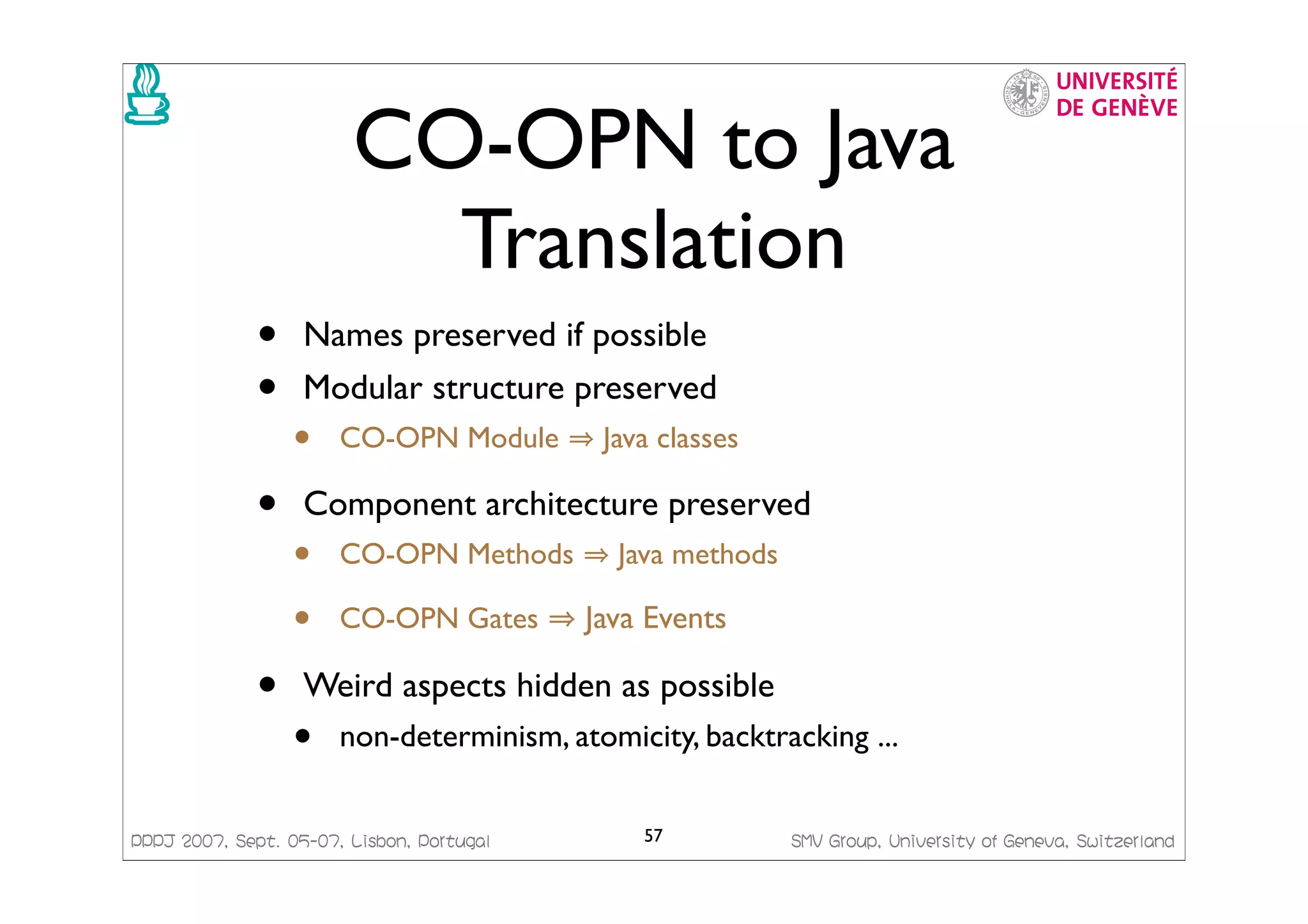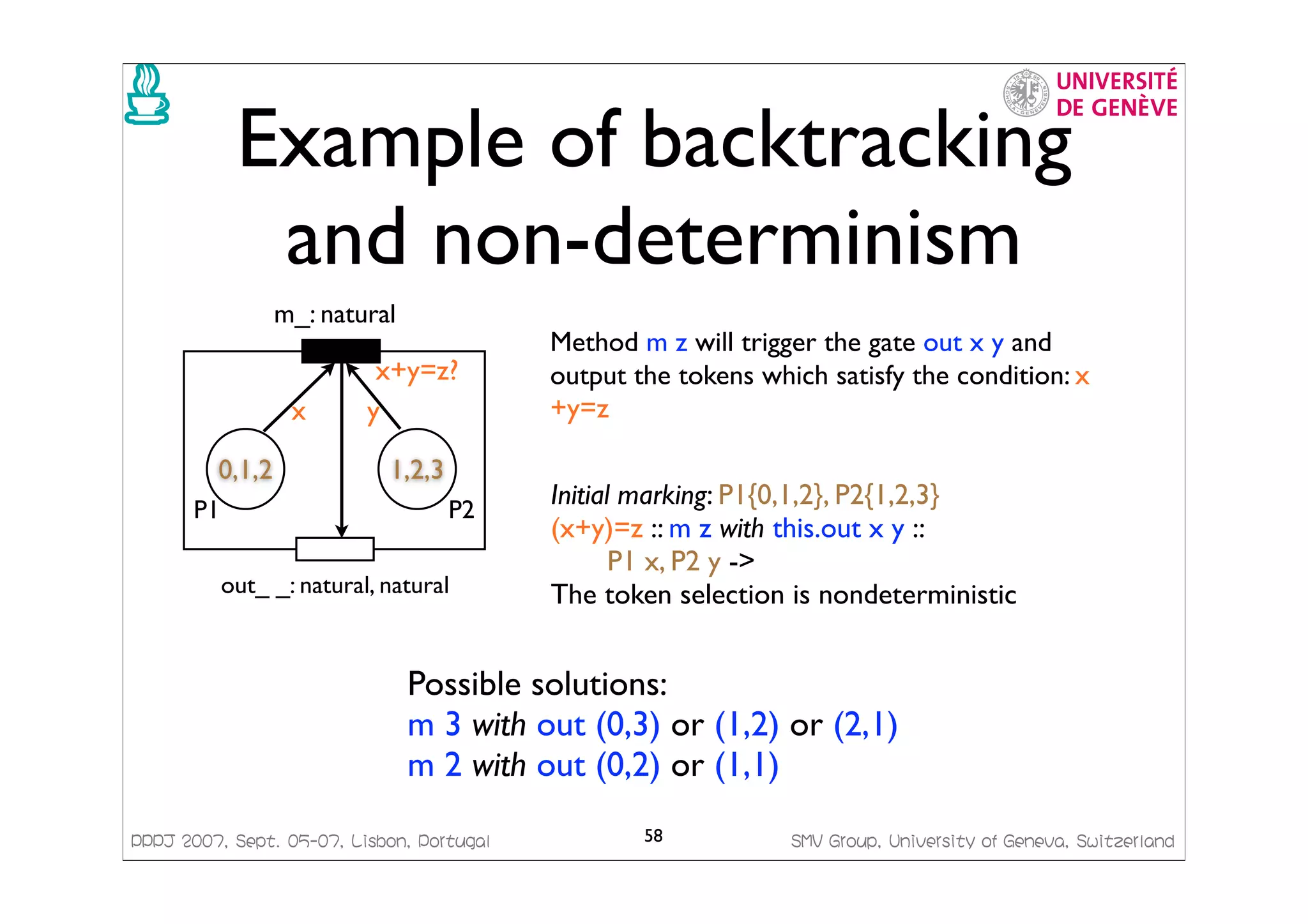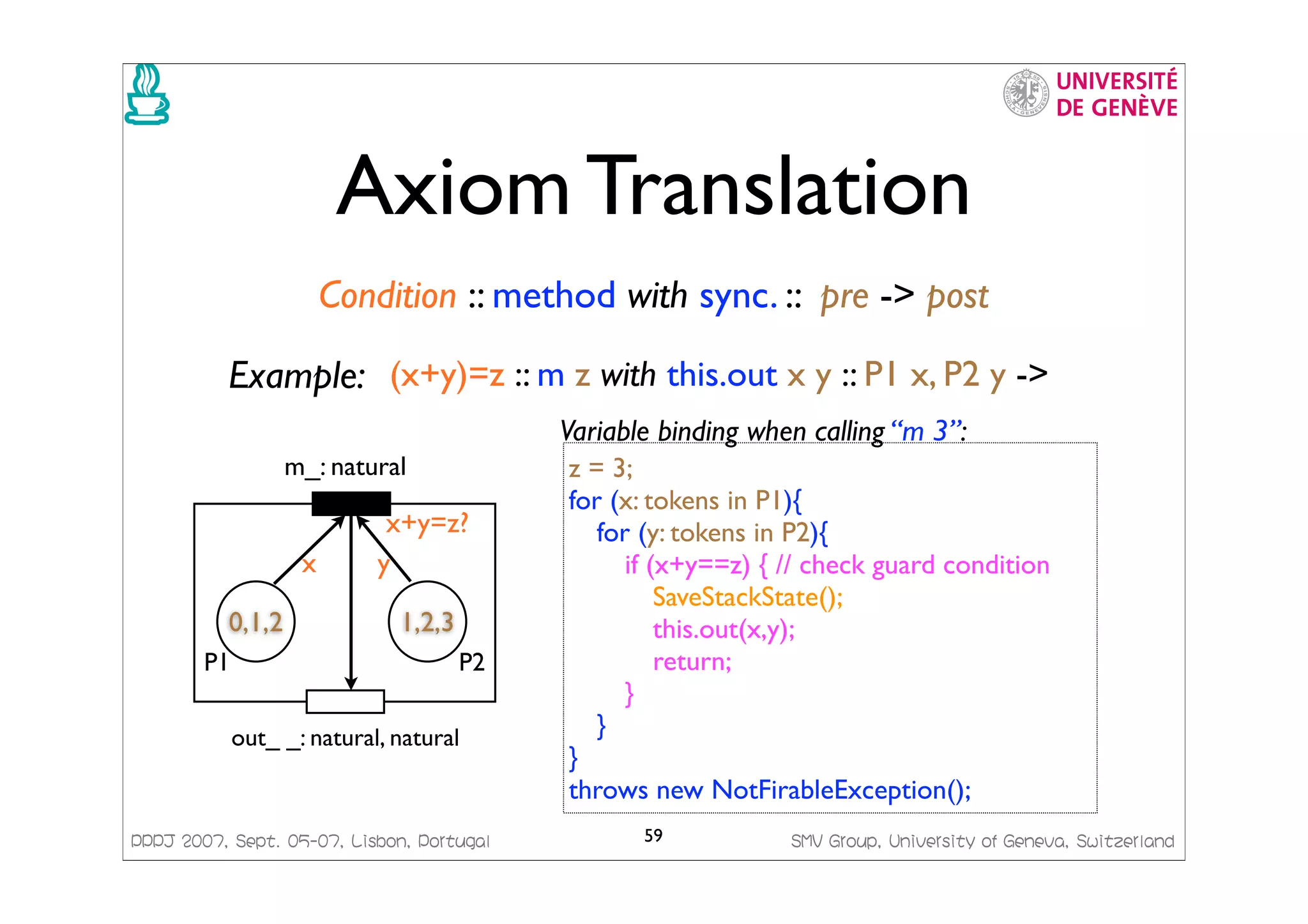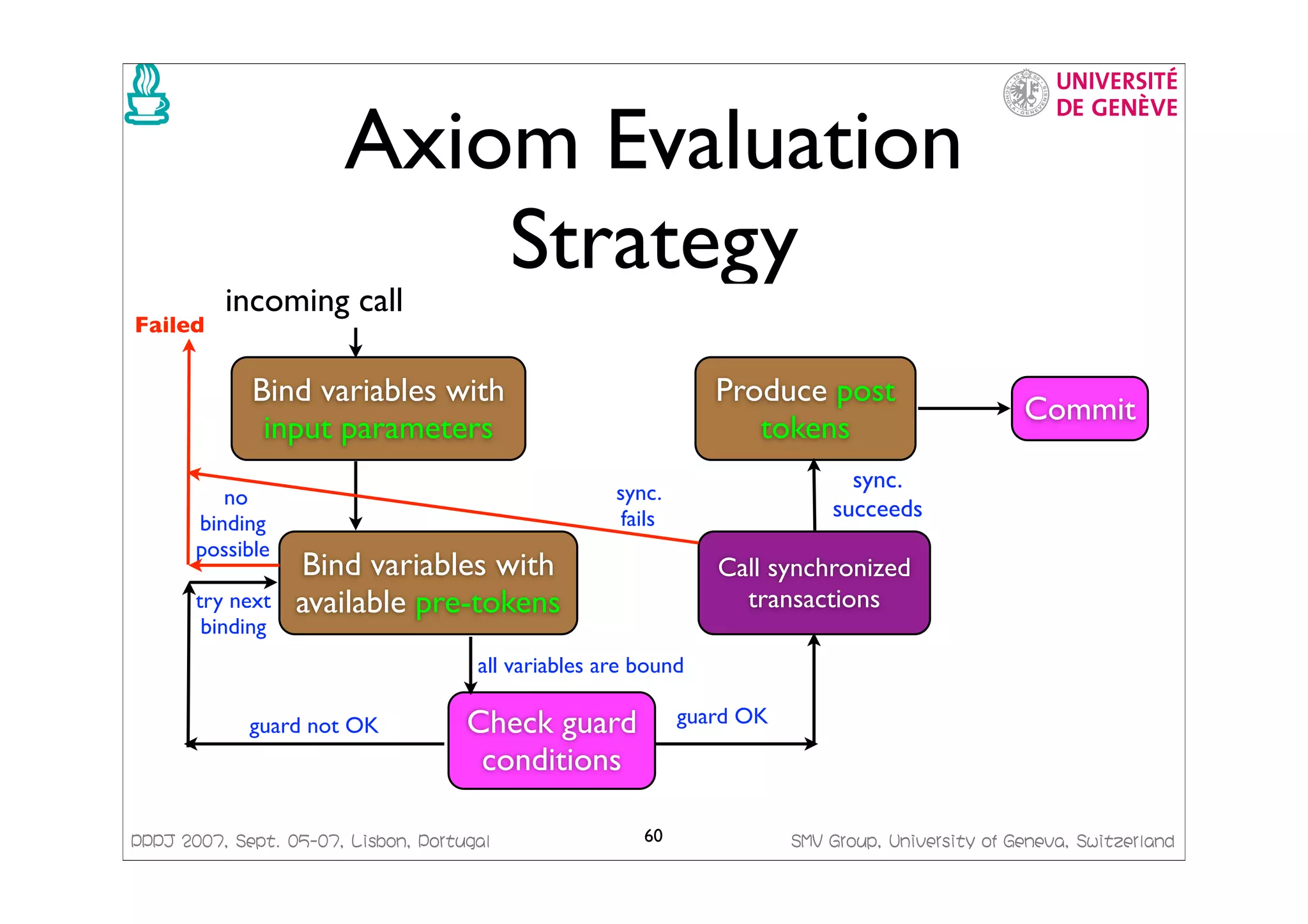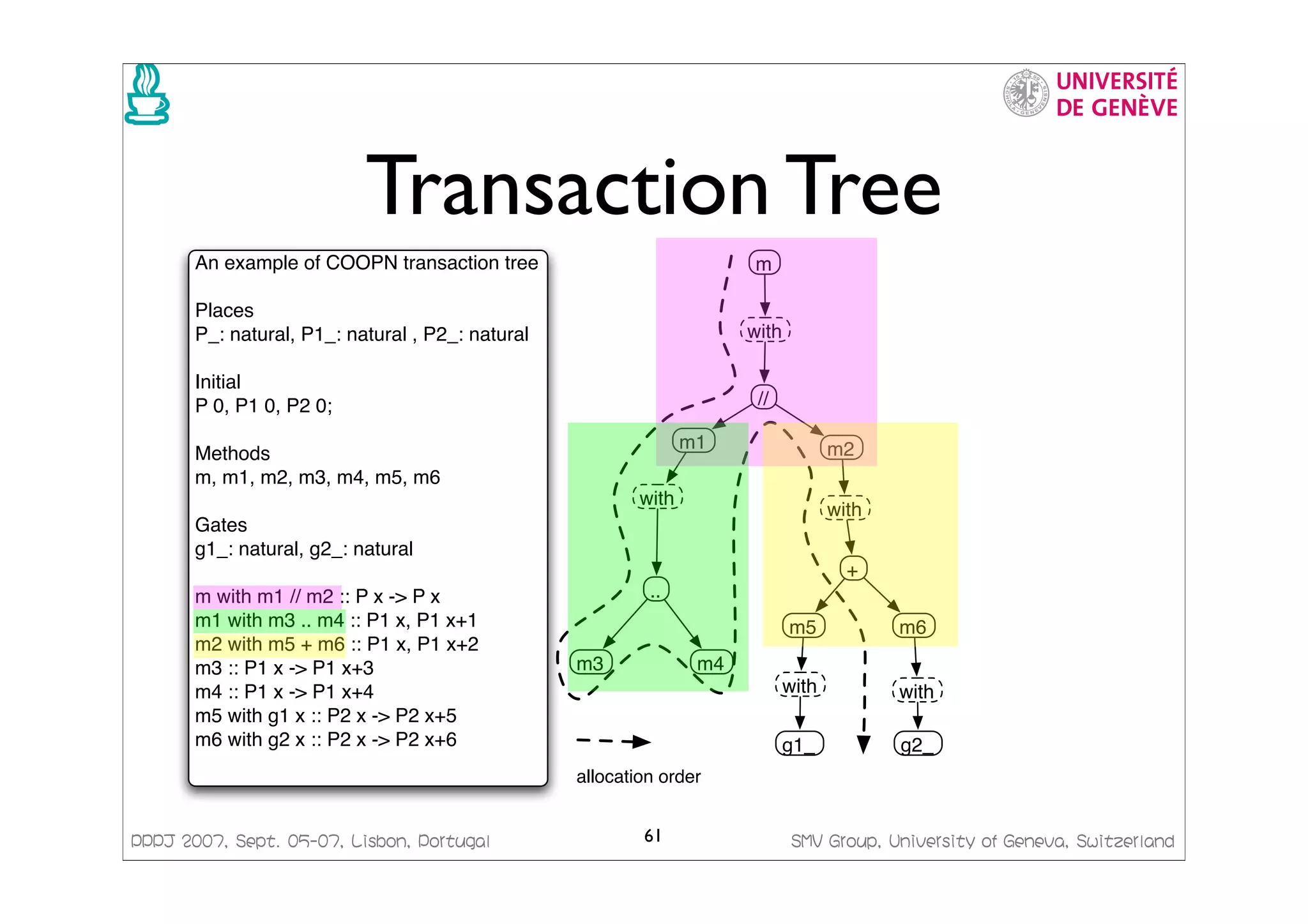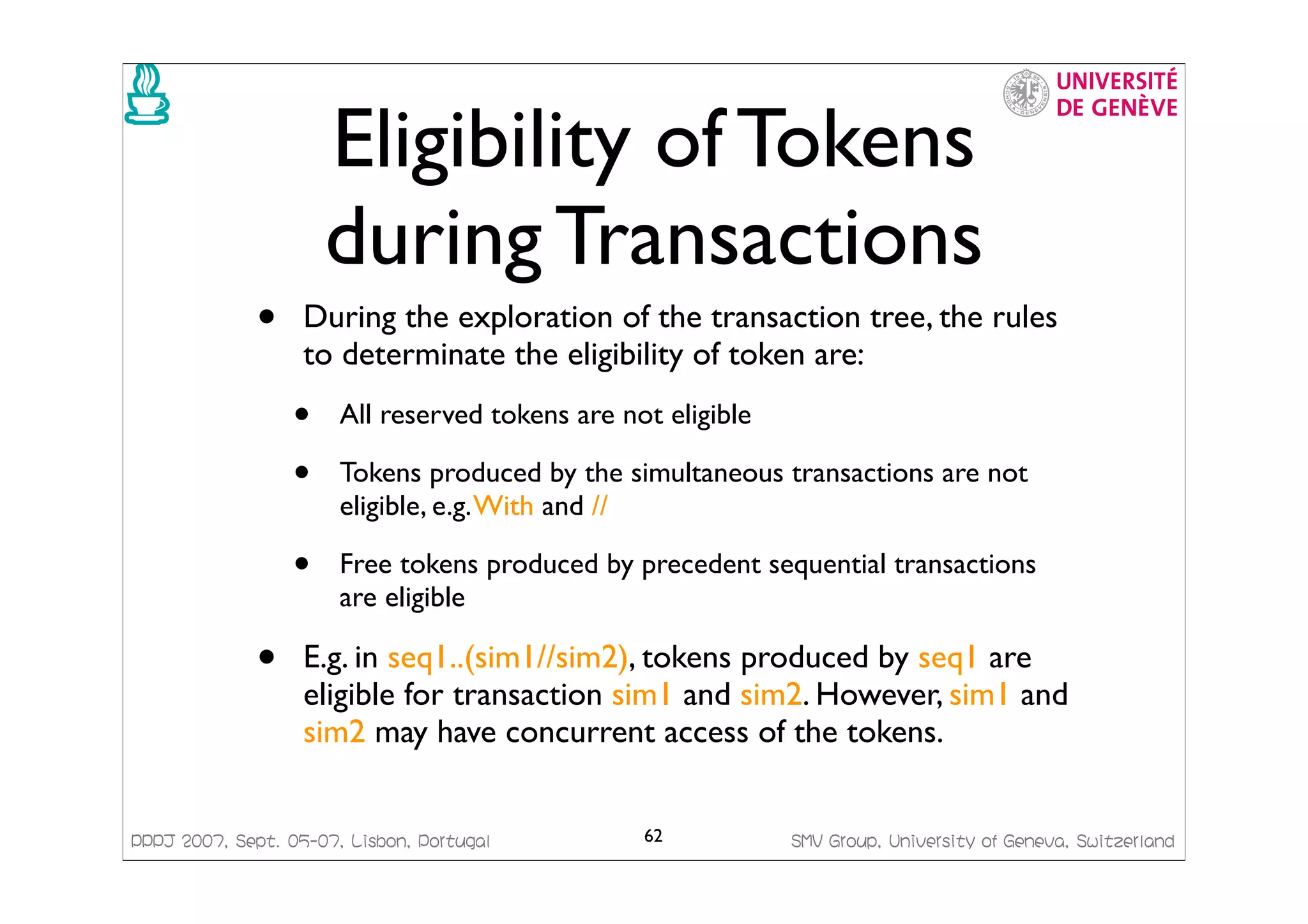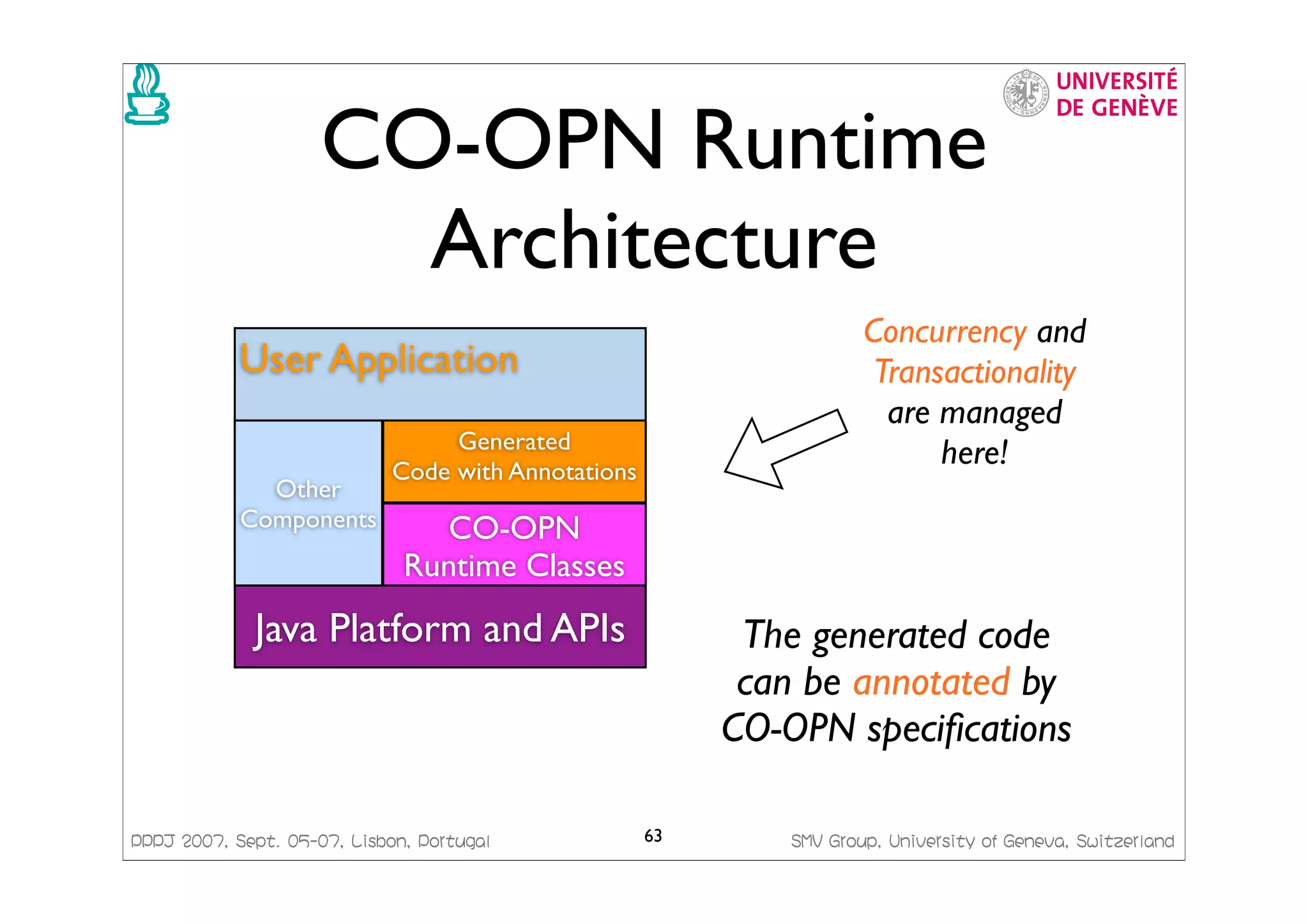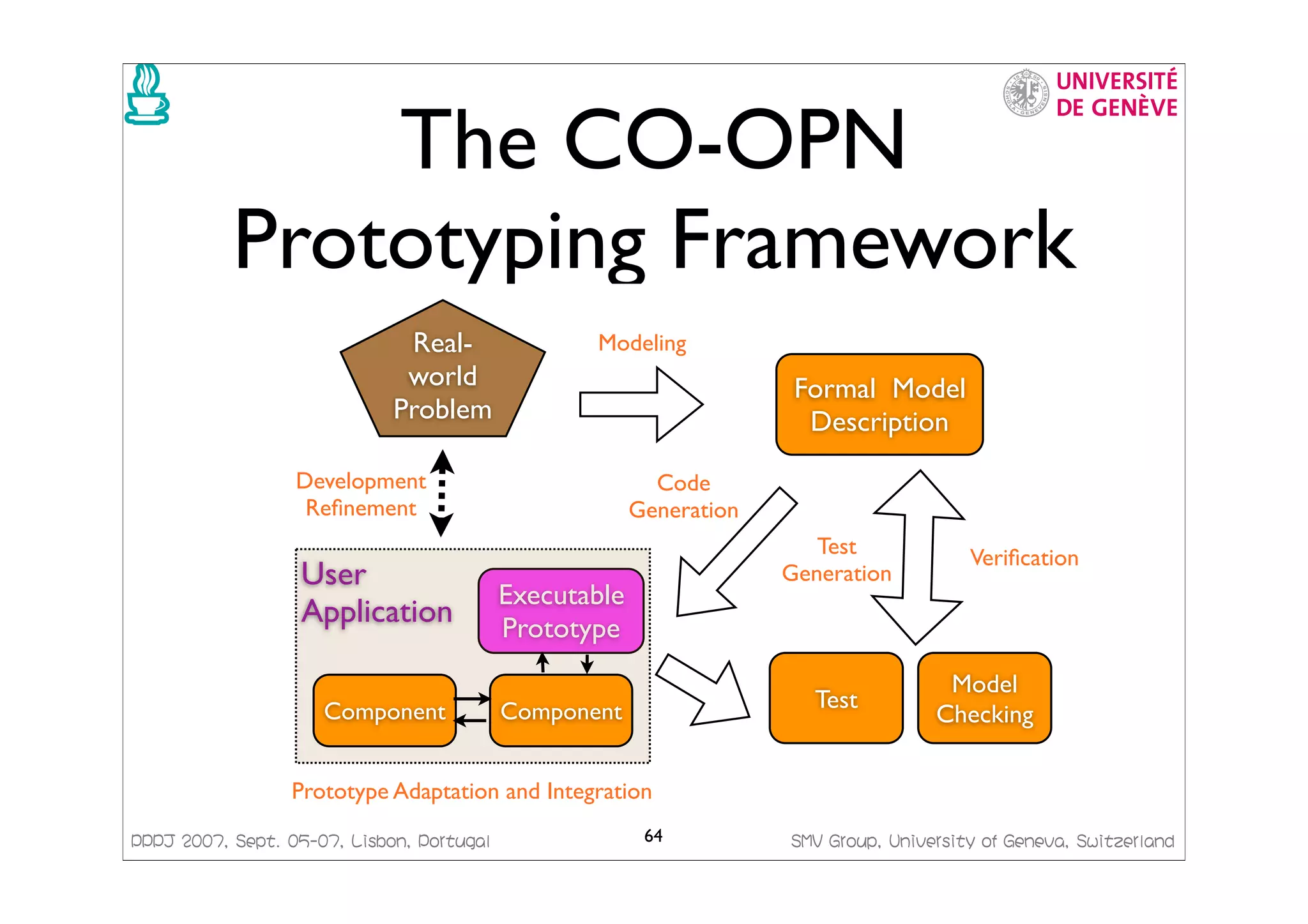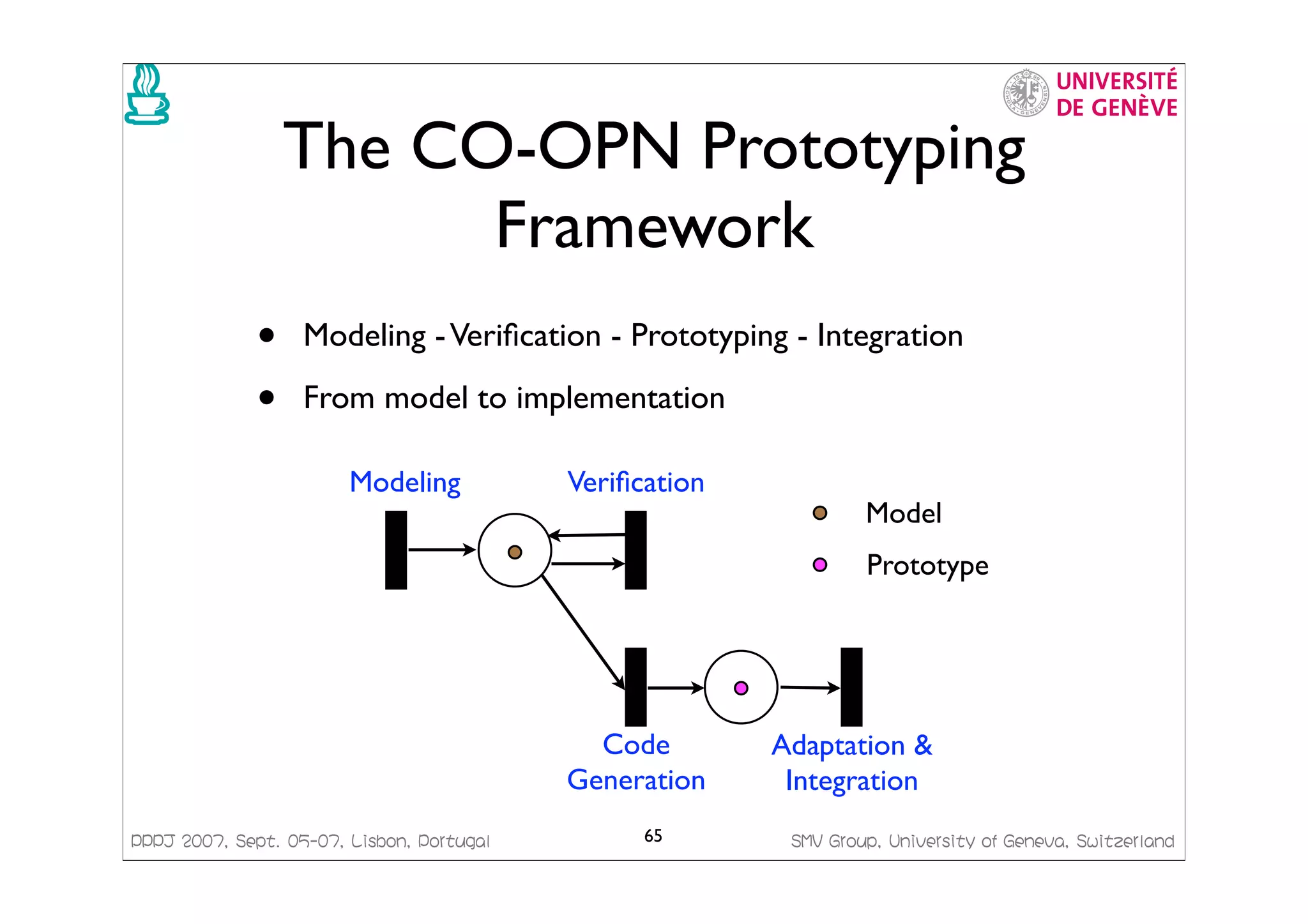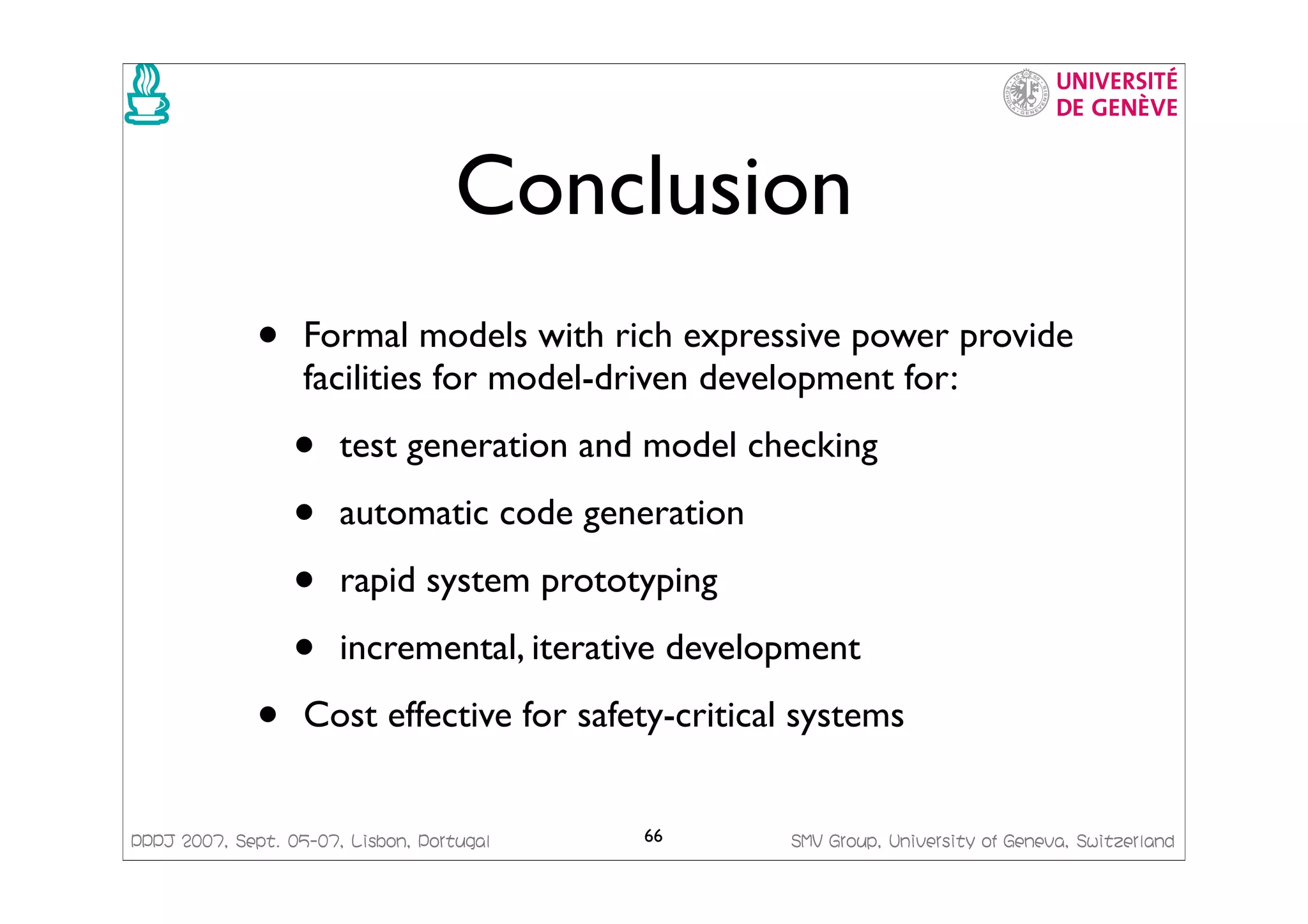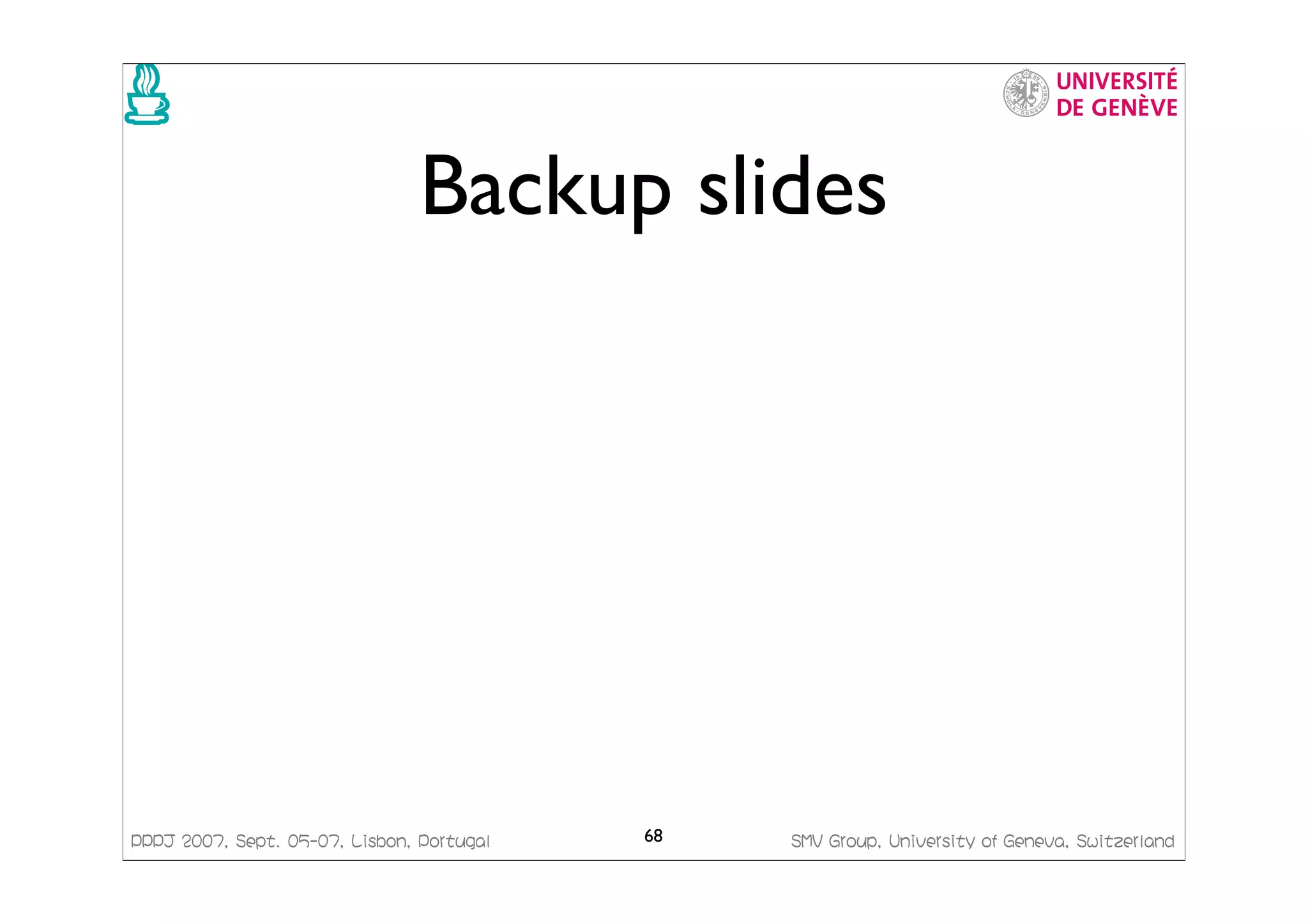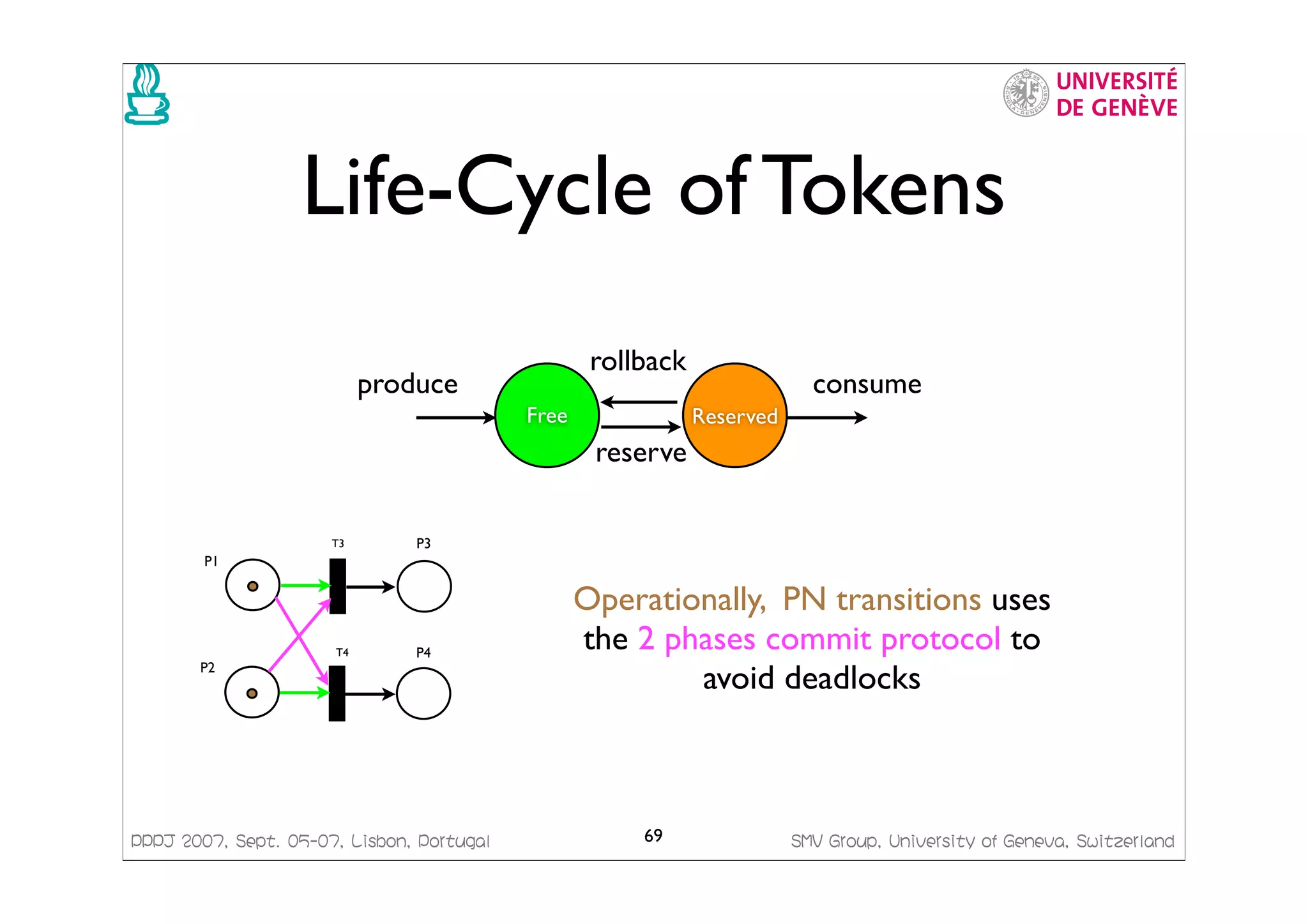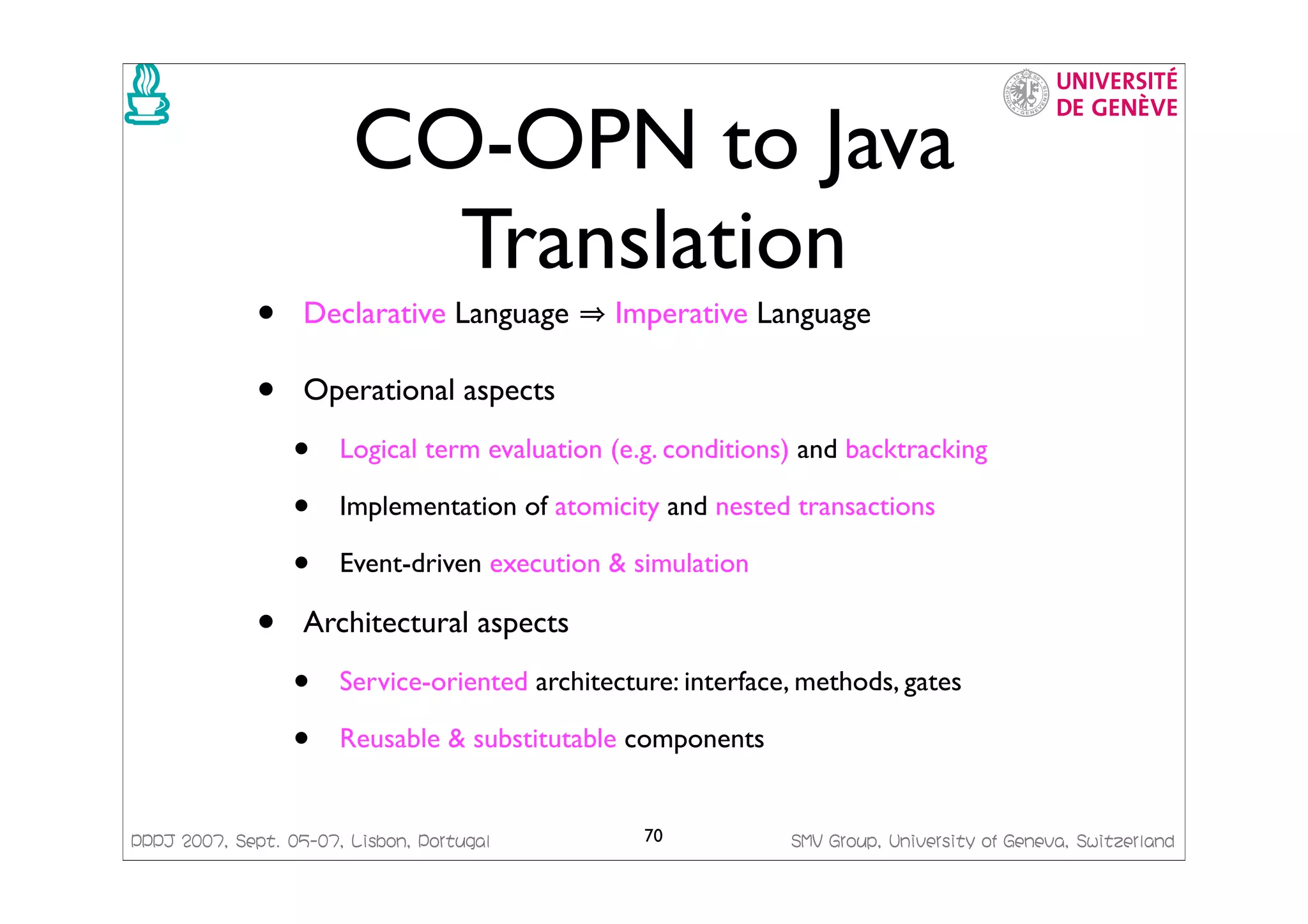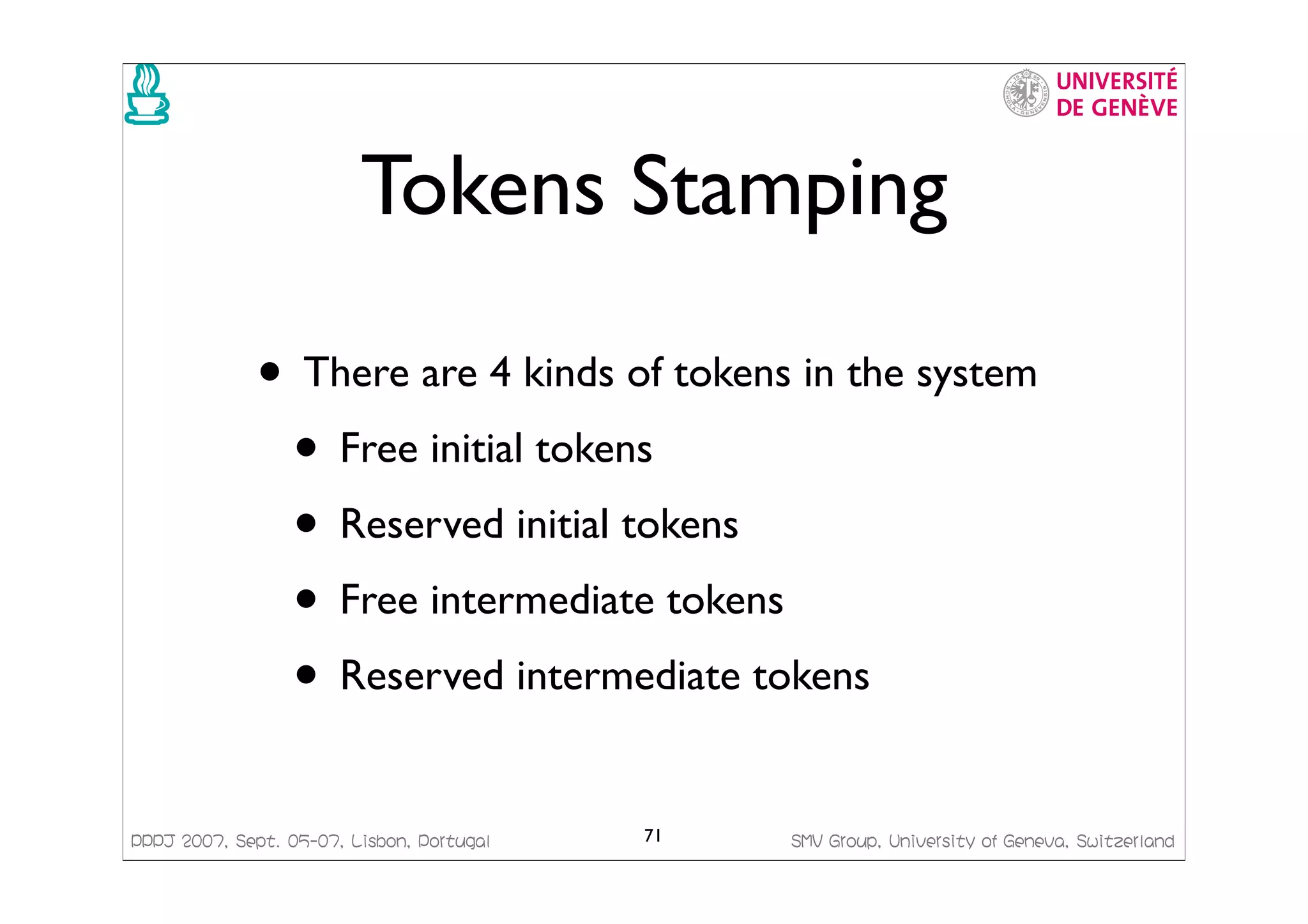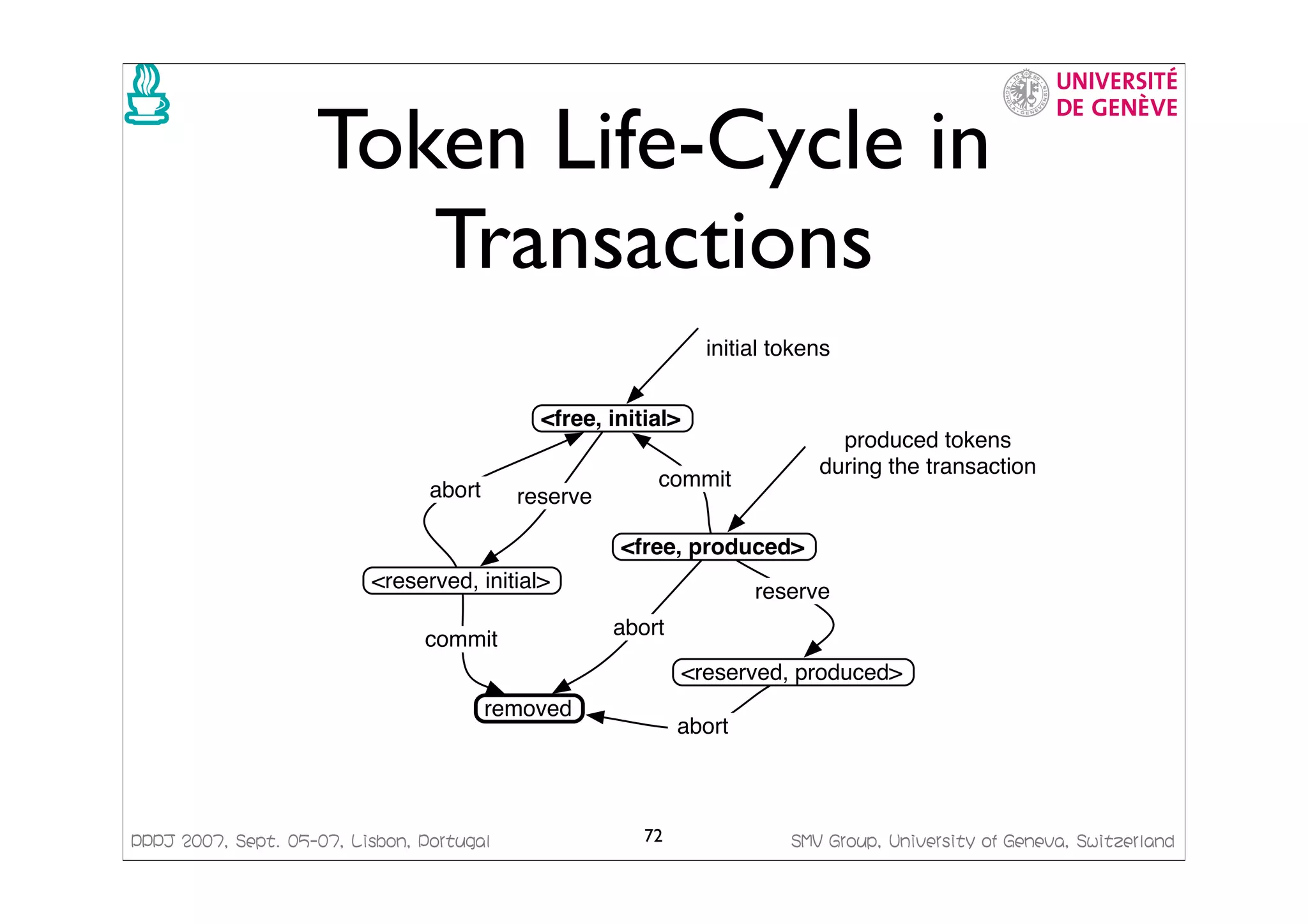This document presents a framework for generating Java code from formal models. It discusses managing concurrency with Petri nets, modeling transactional systems with Concurrent Object-Oriented Petri Nets (CO-OPN), and the CO-OPN code generation framework. The tutorial aims to demonstrate the advantages of model-based development using formal models like Petri nets, including precise semantics, platform independence, and automatic model checking, testing and code generation.
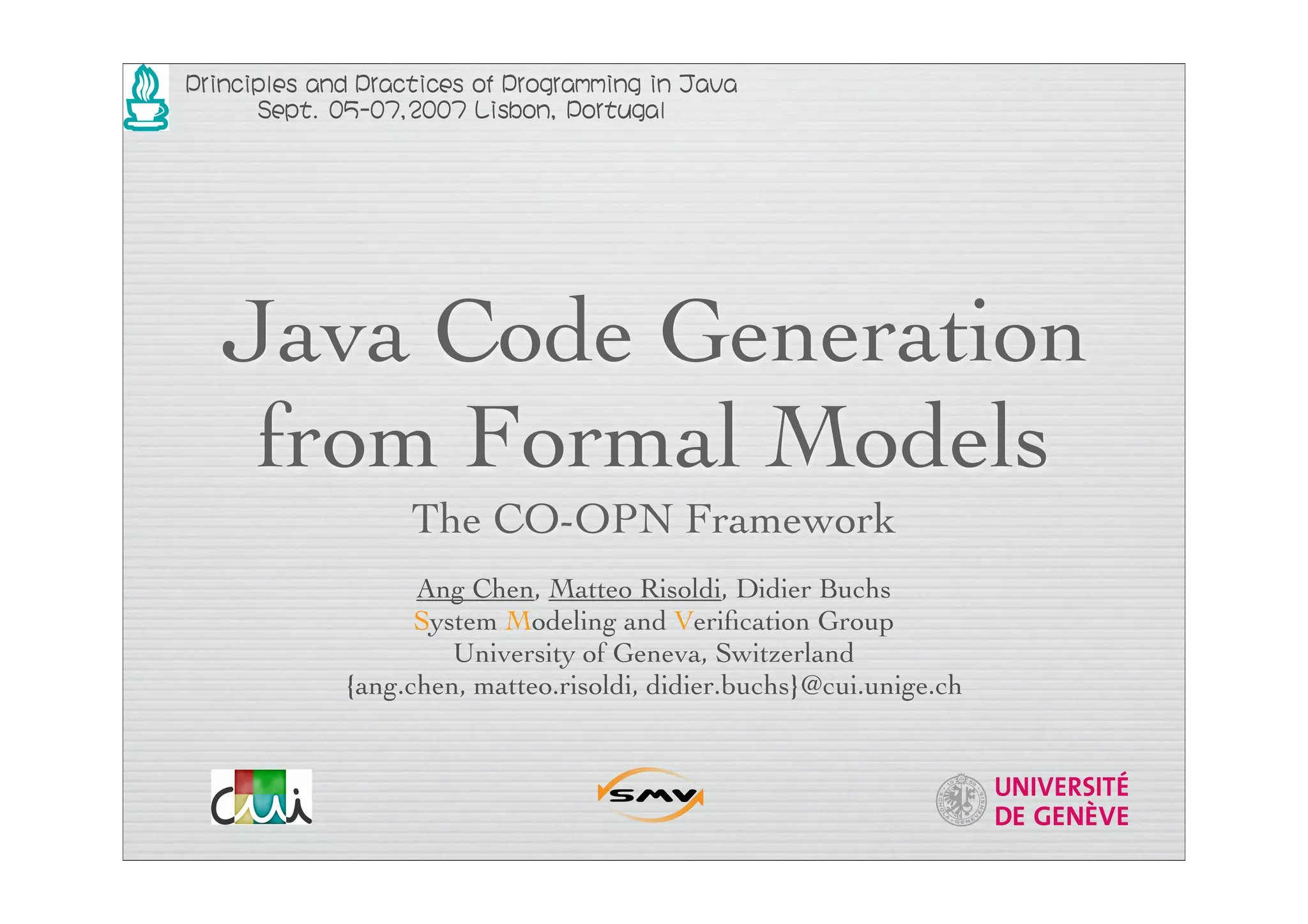
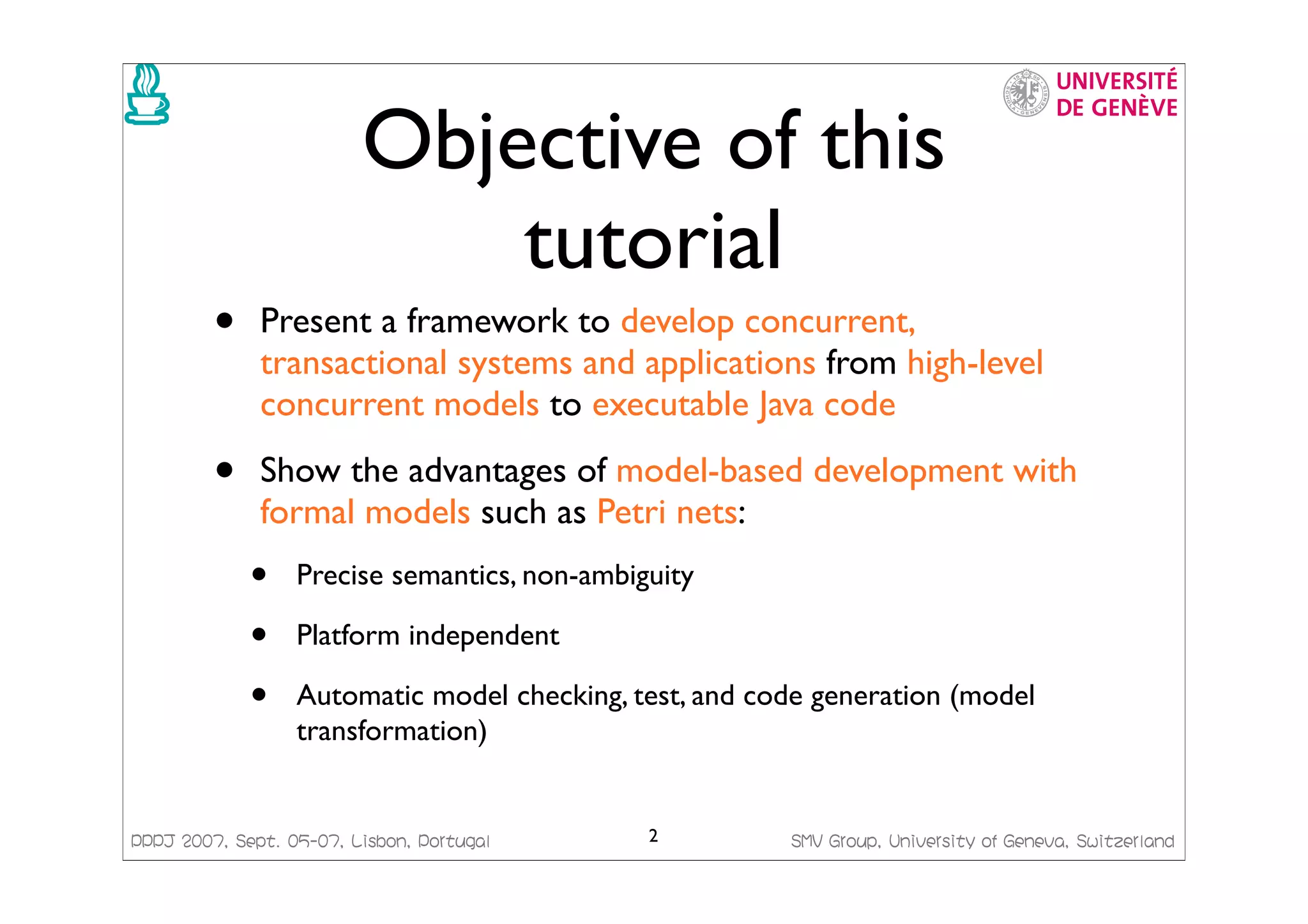
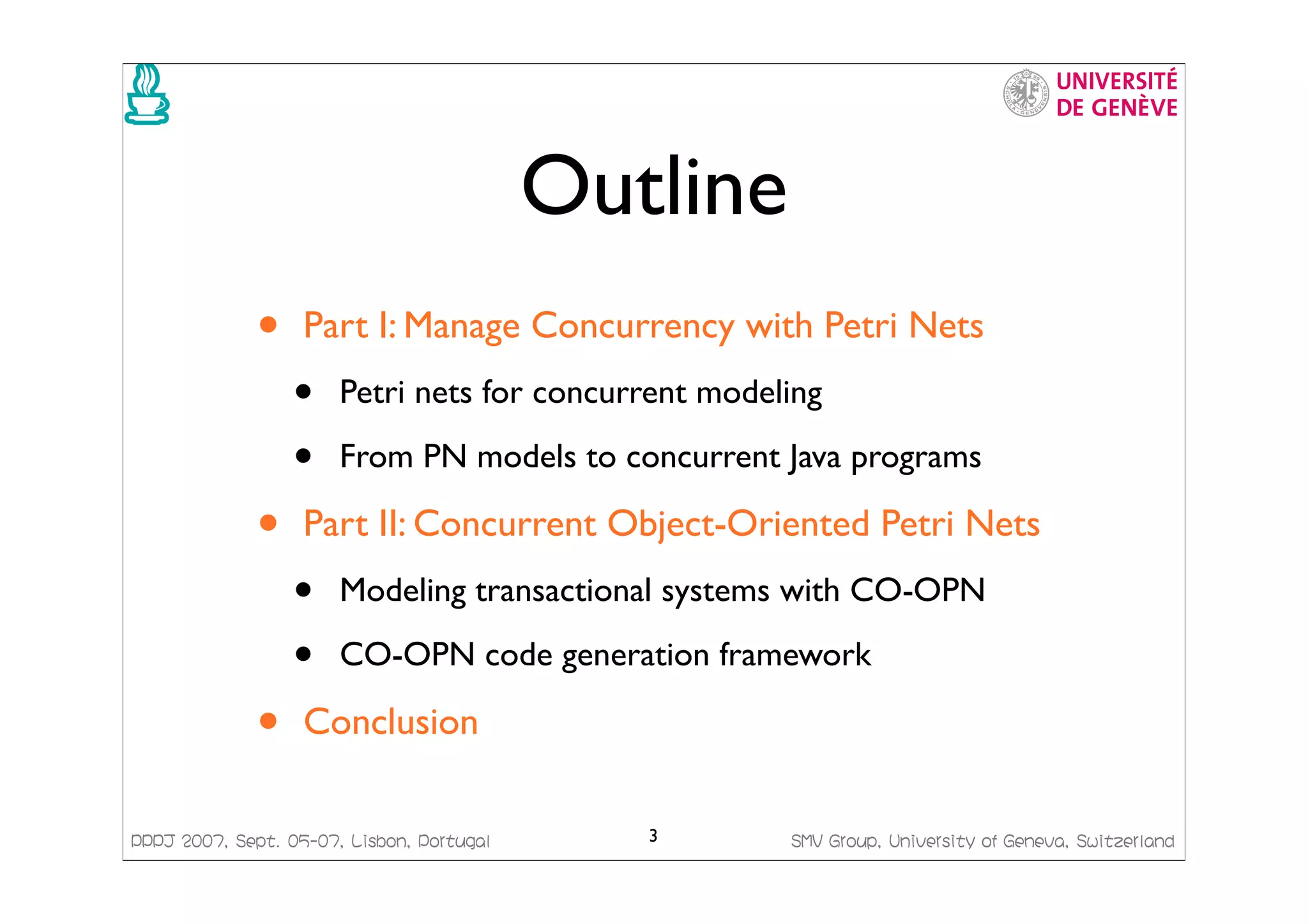
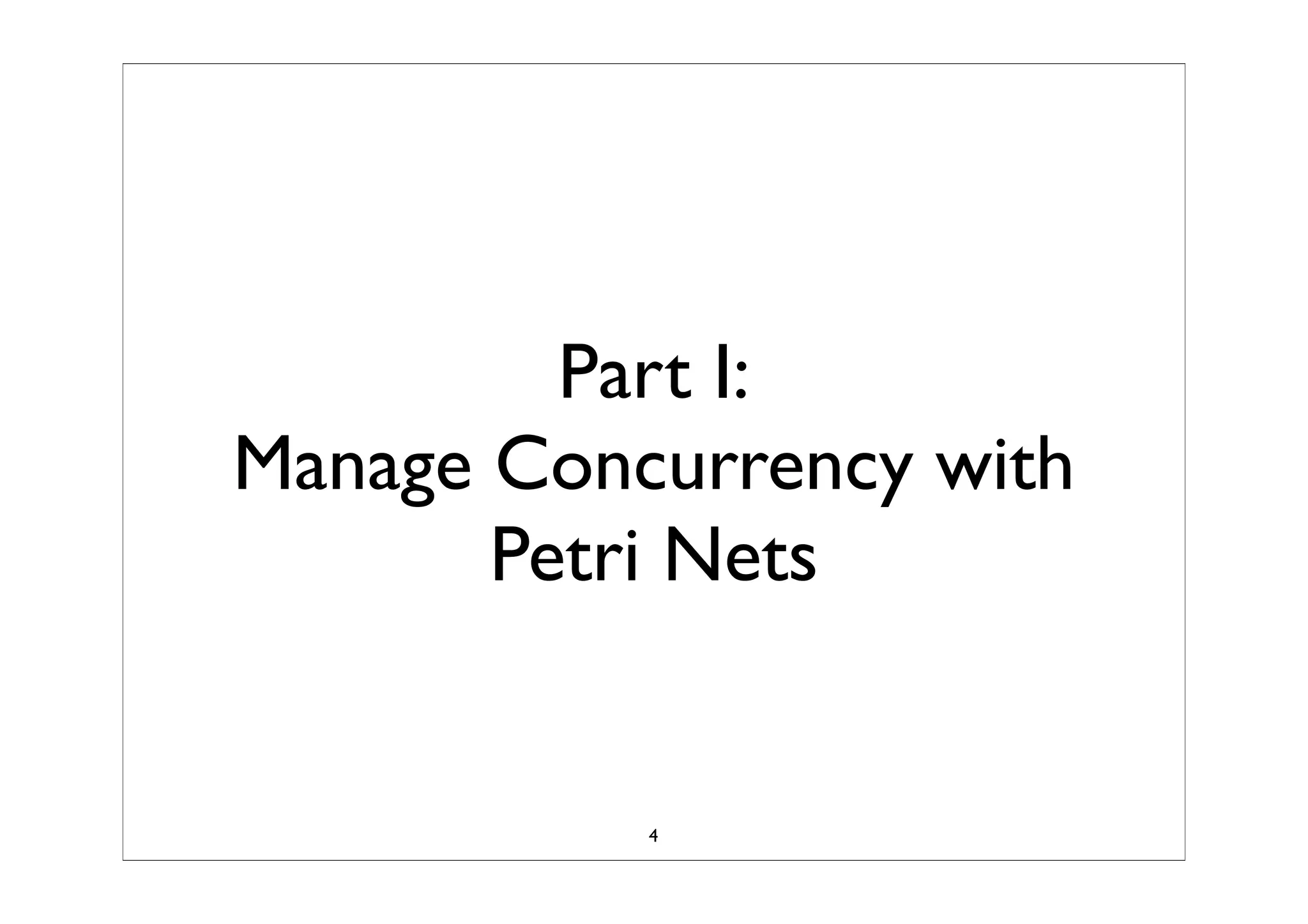
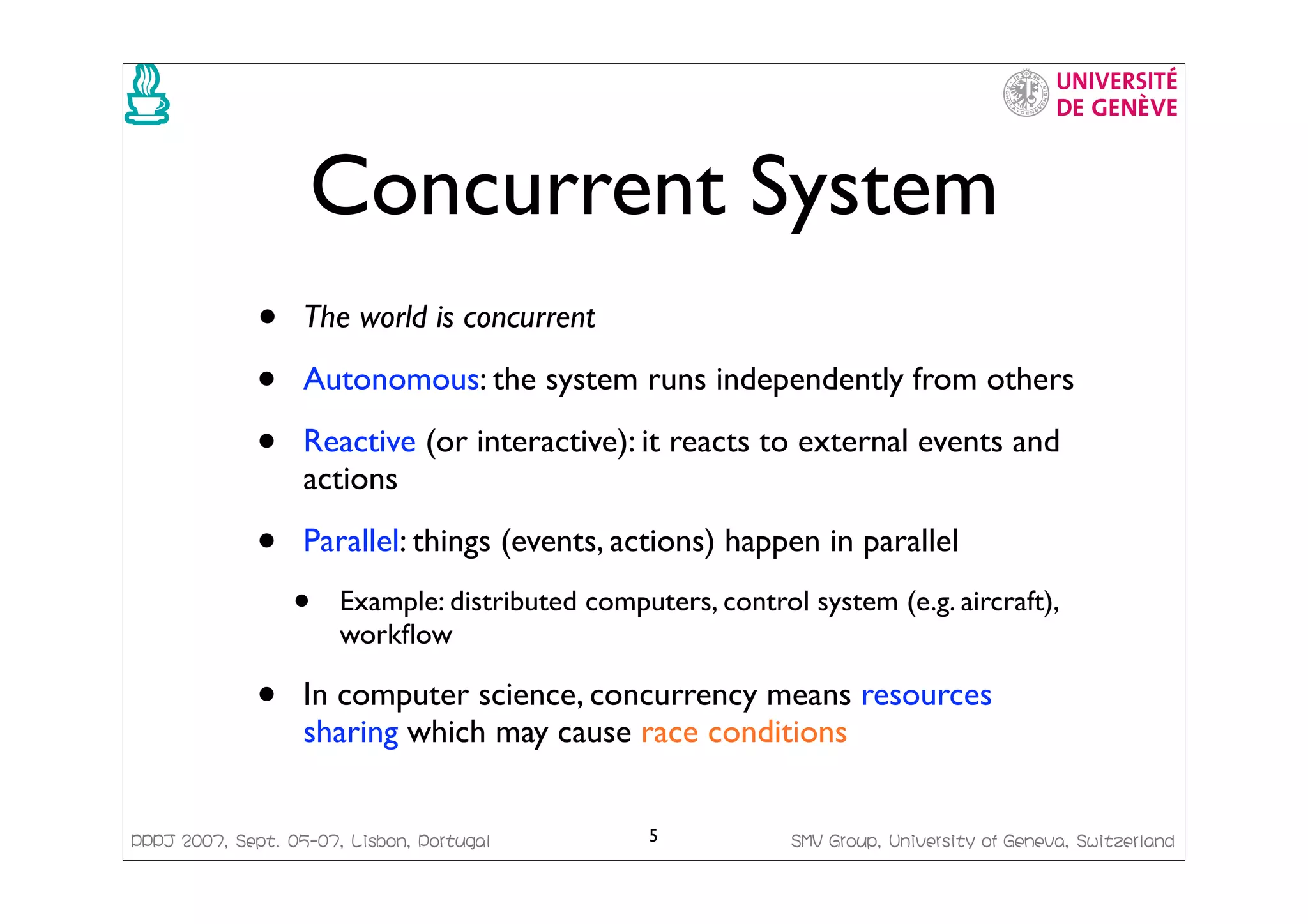
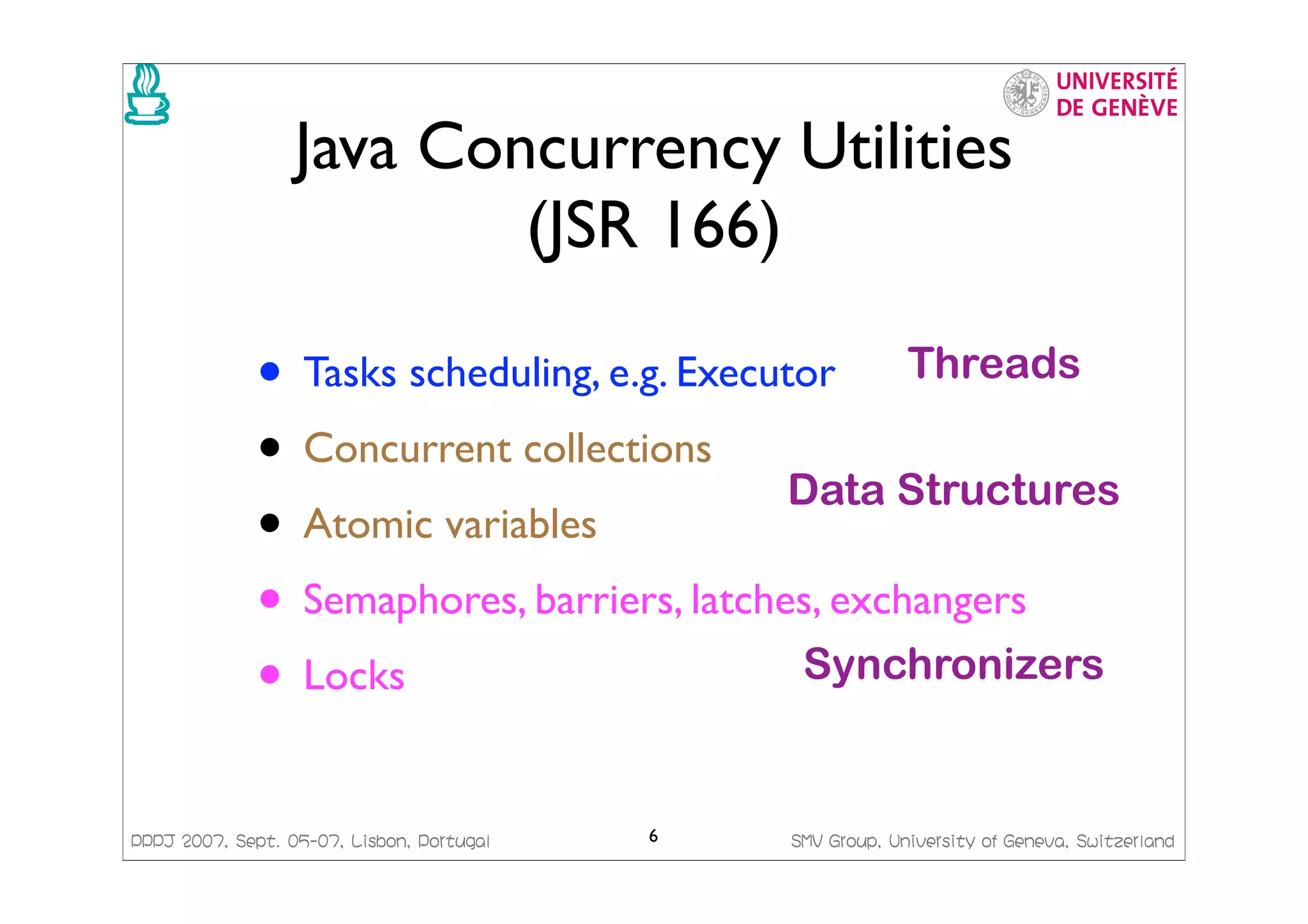
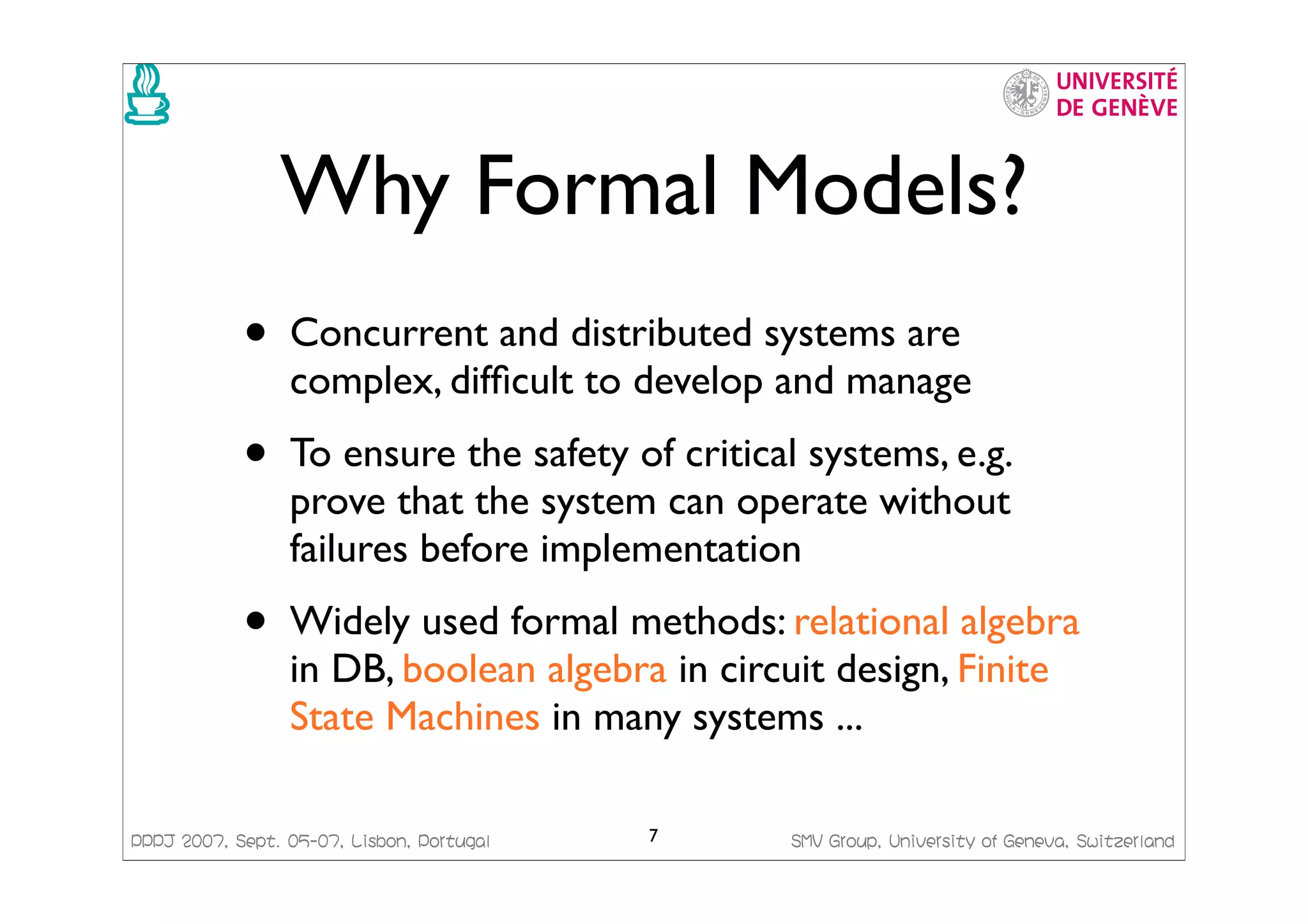
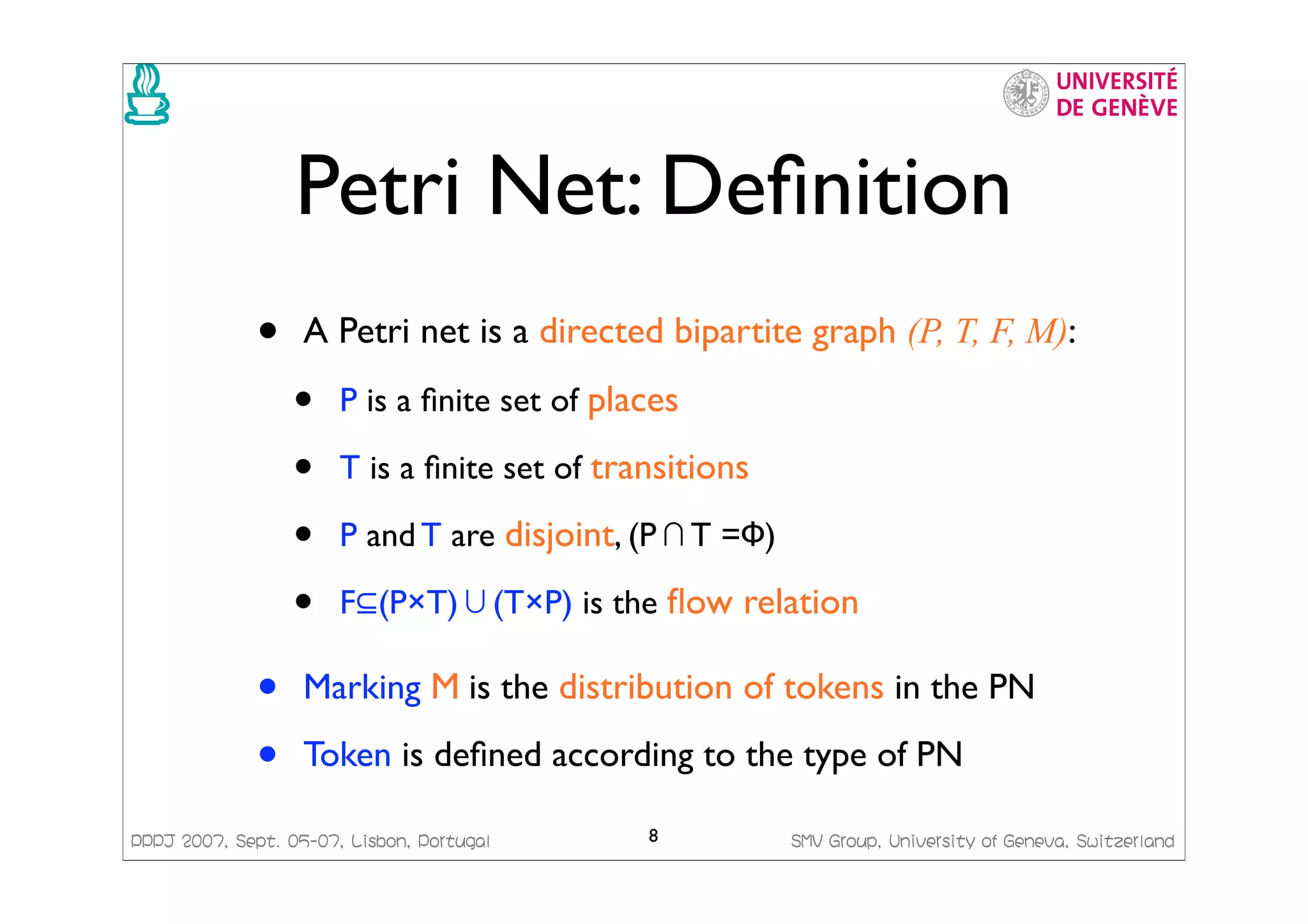
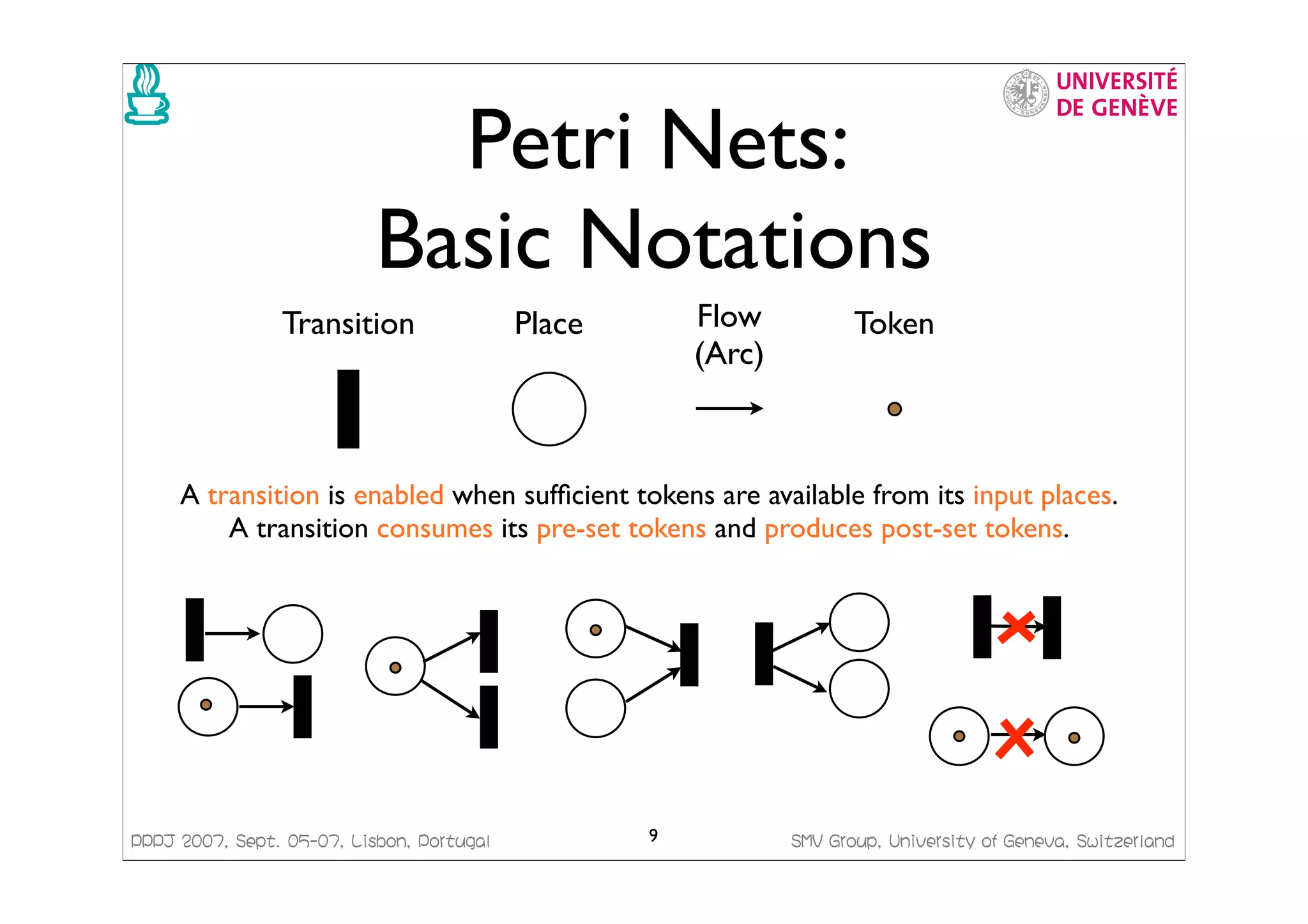
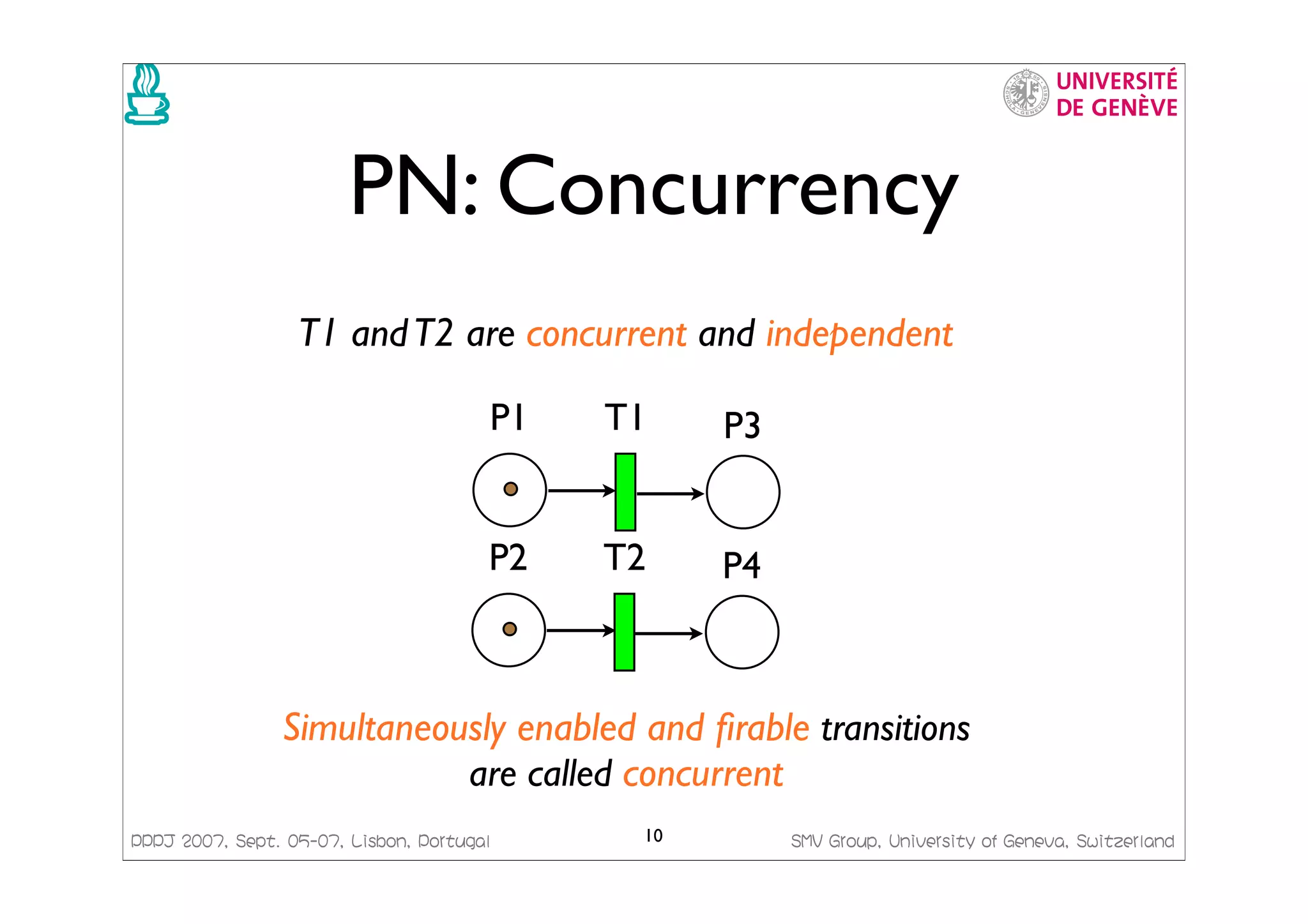
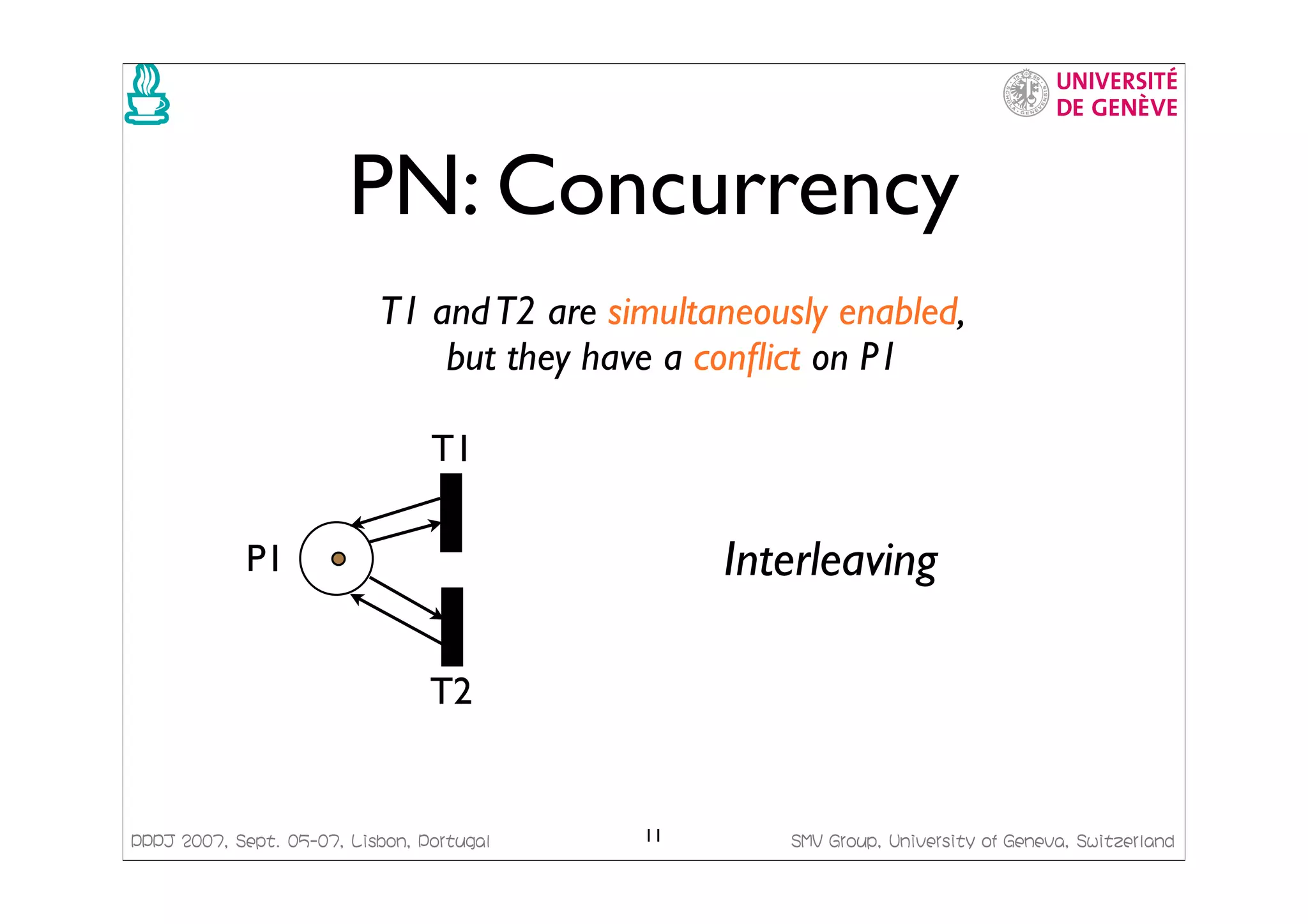
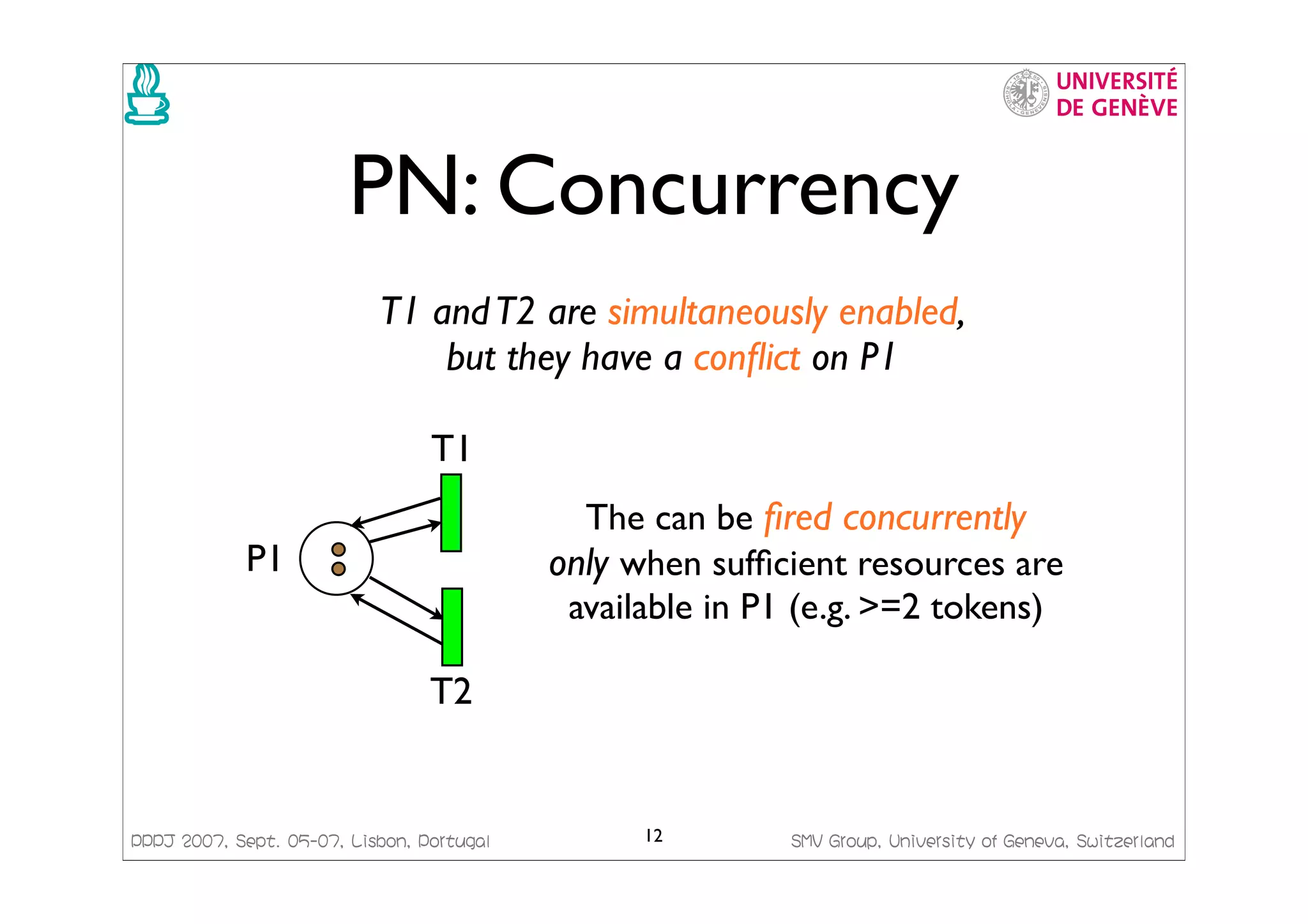
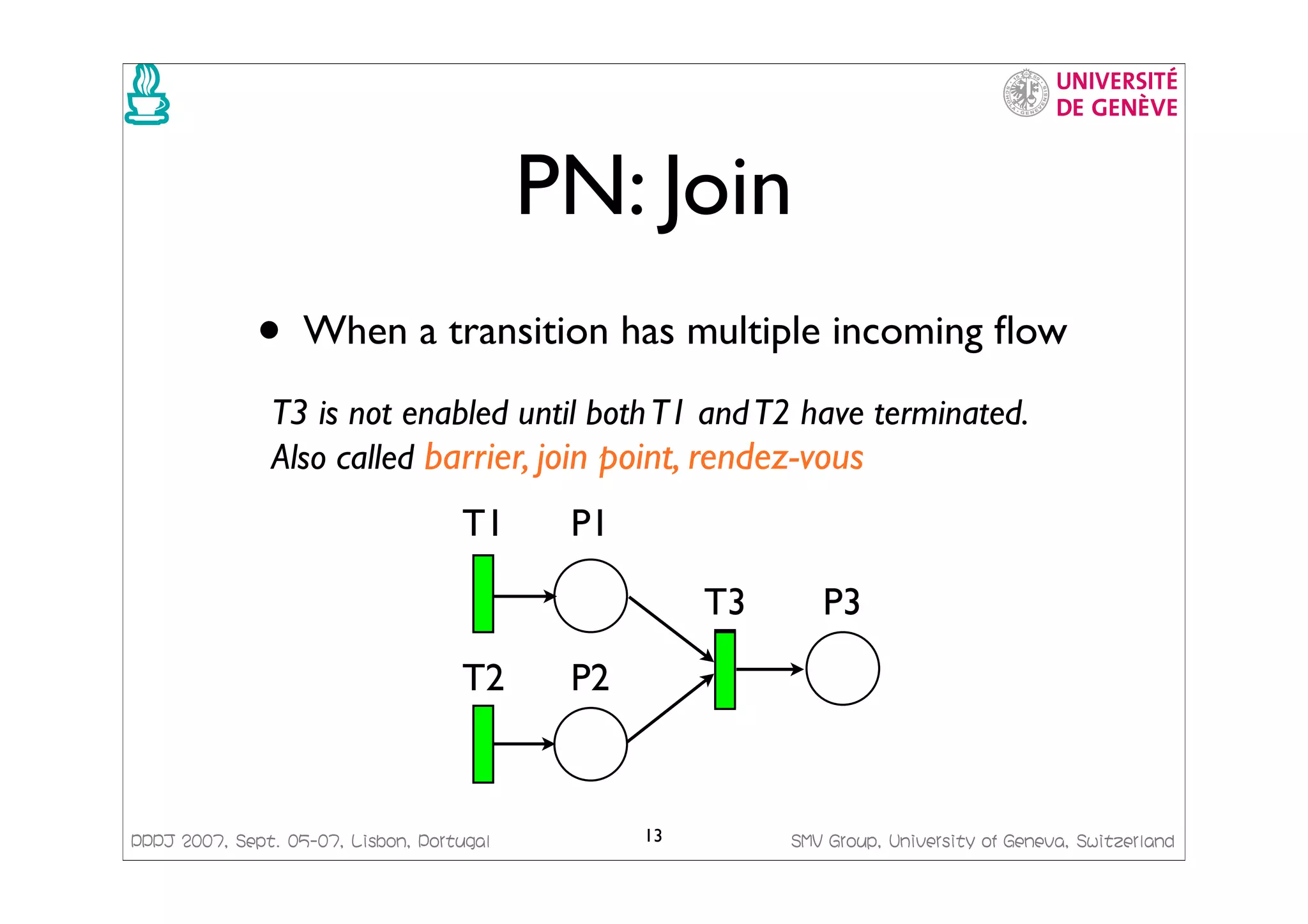
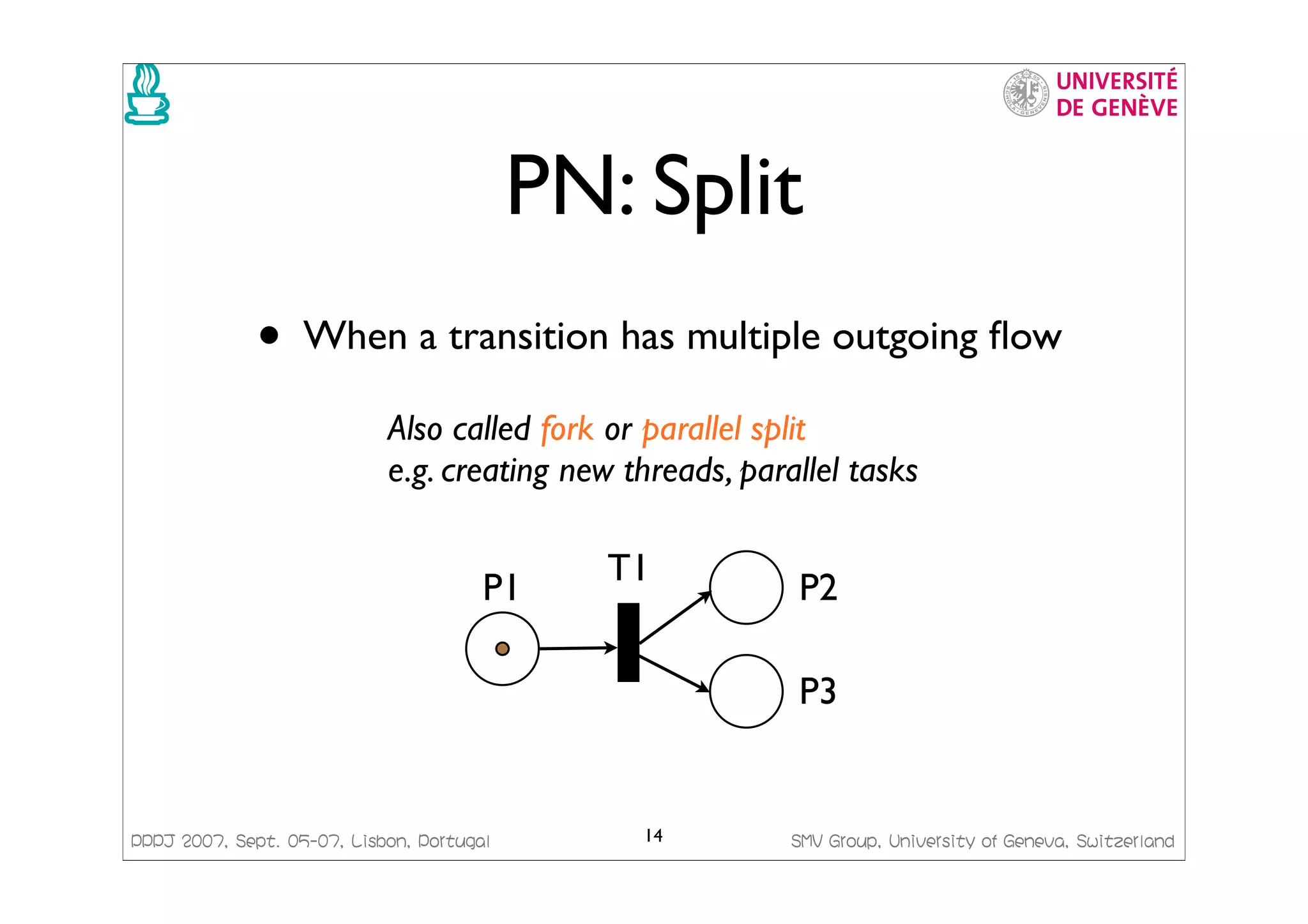
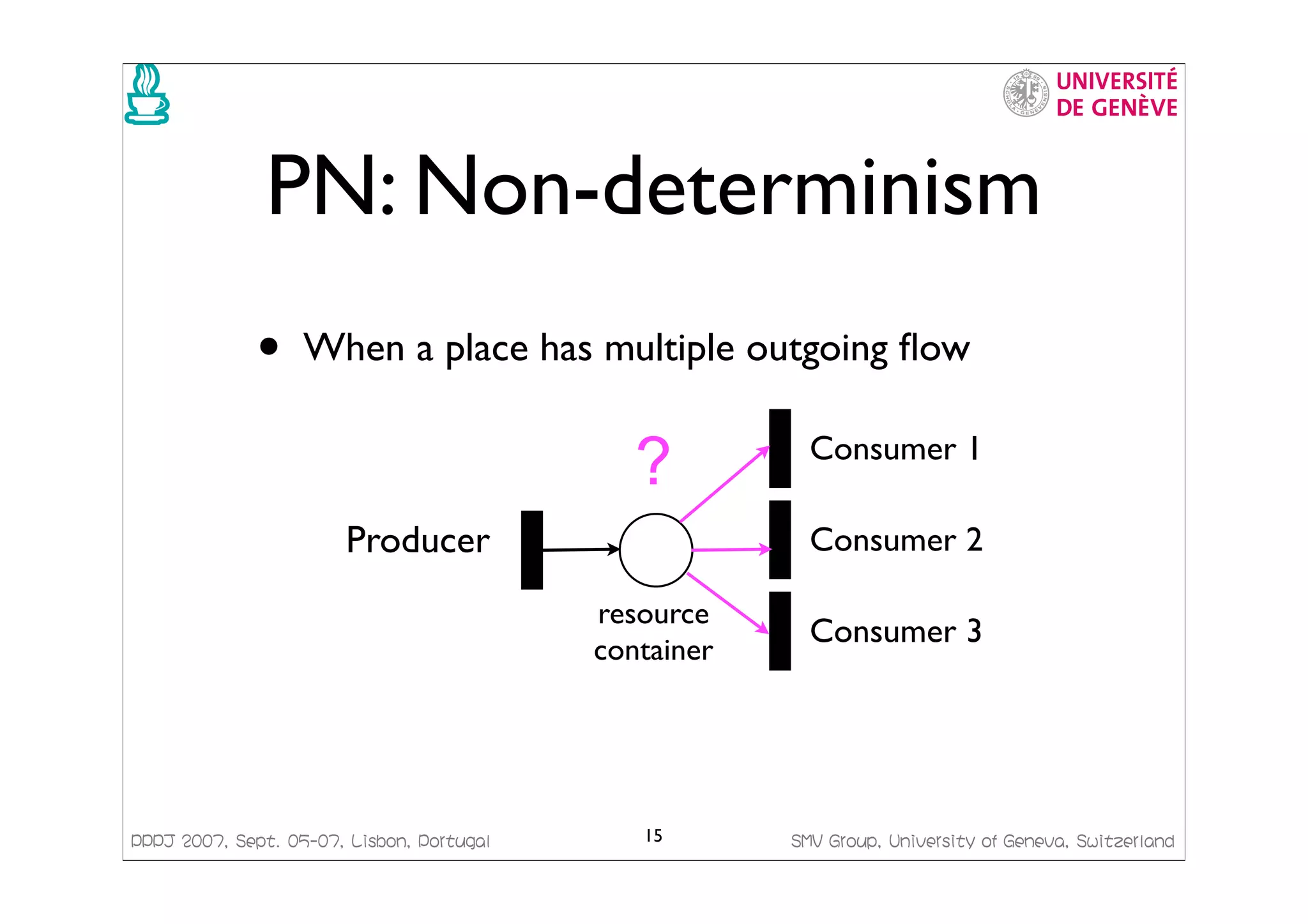
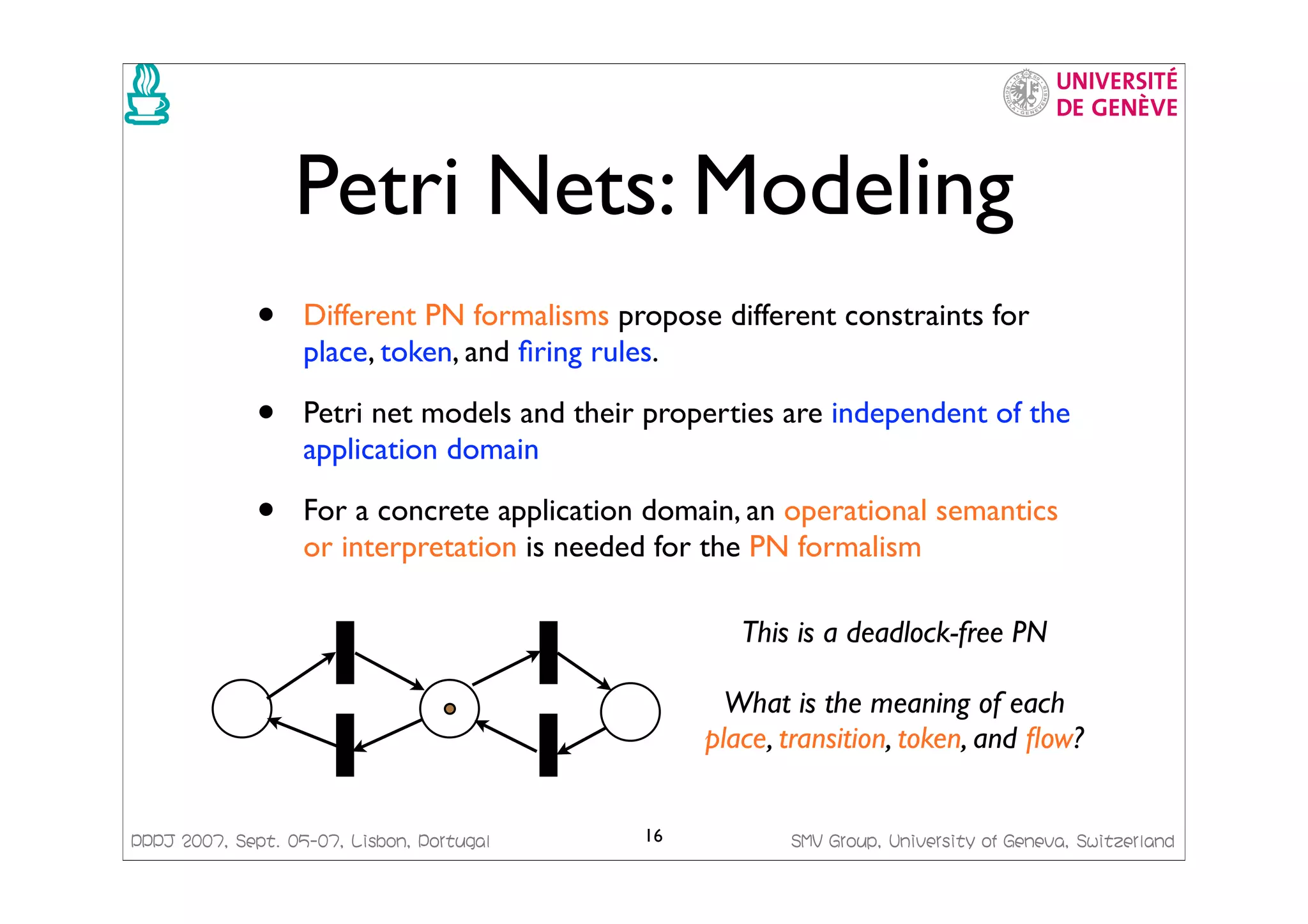
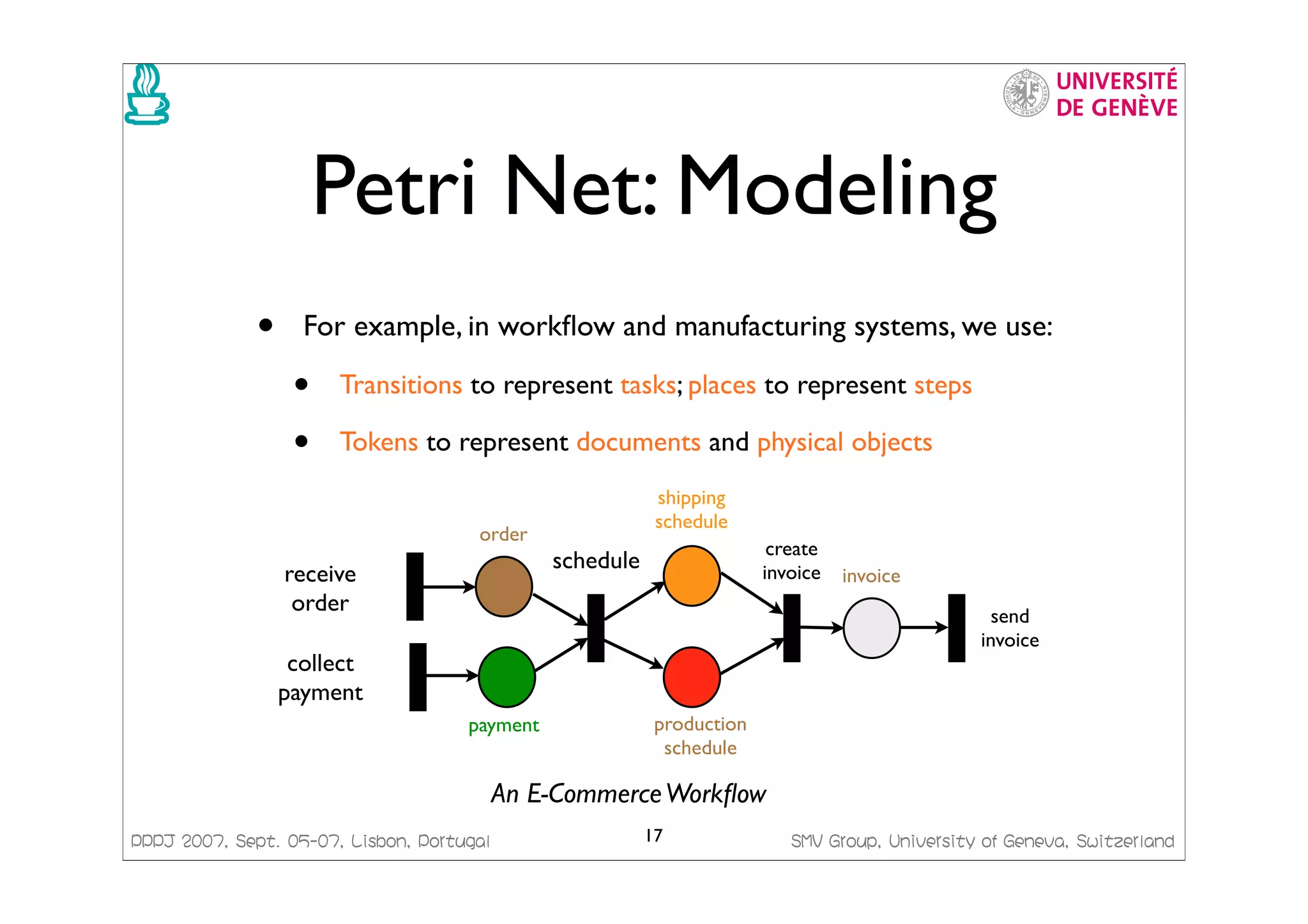
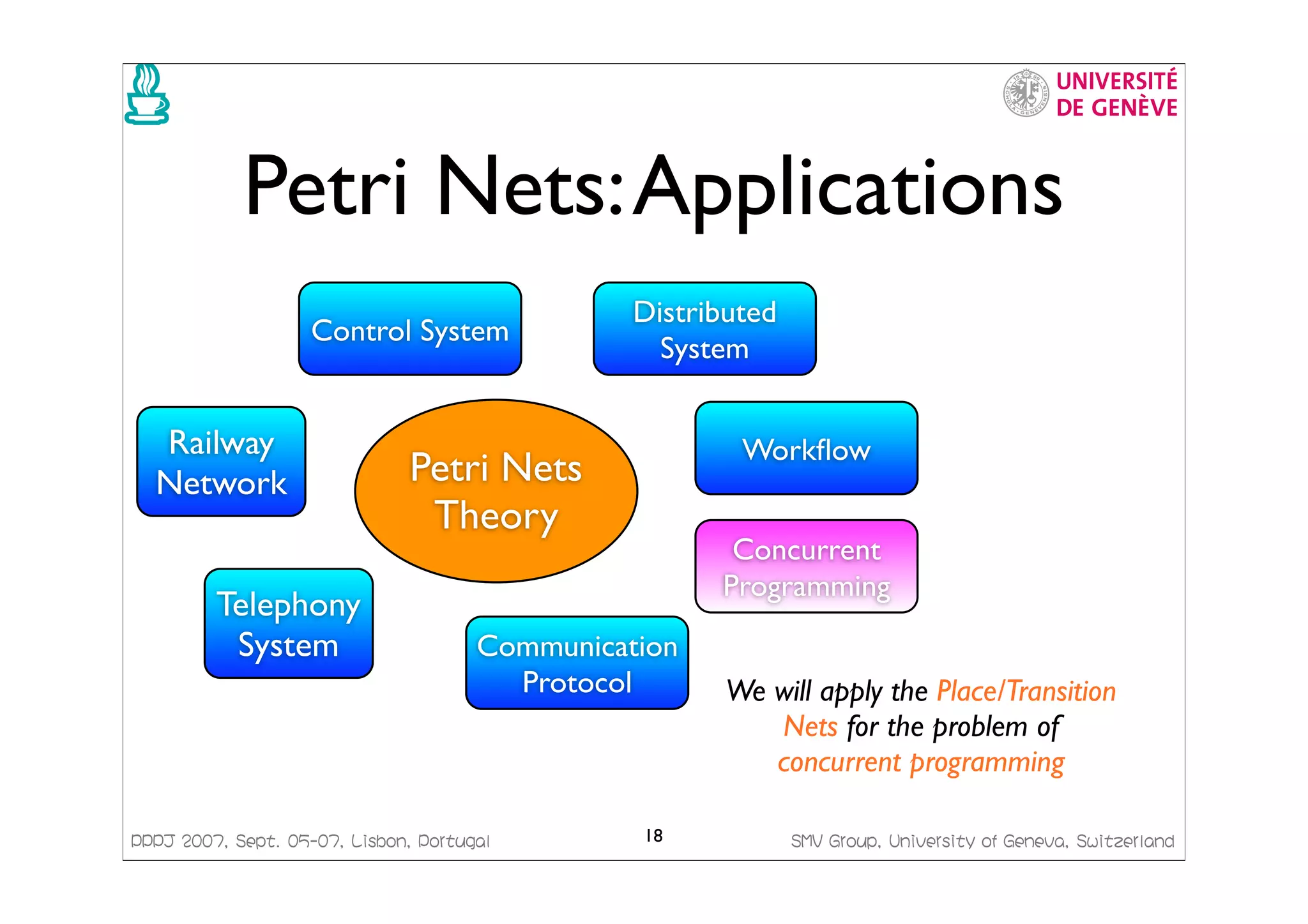
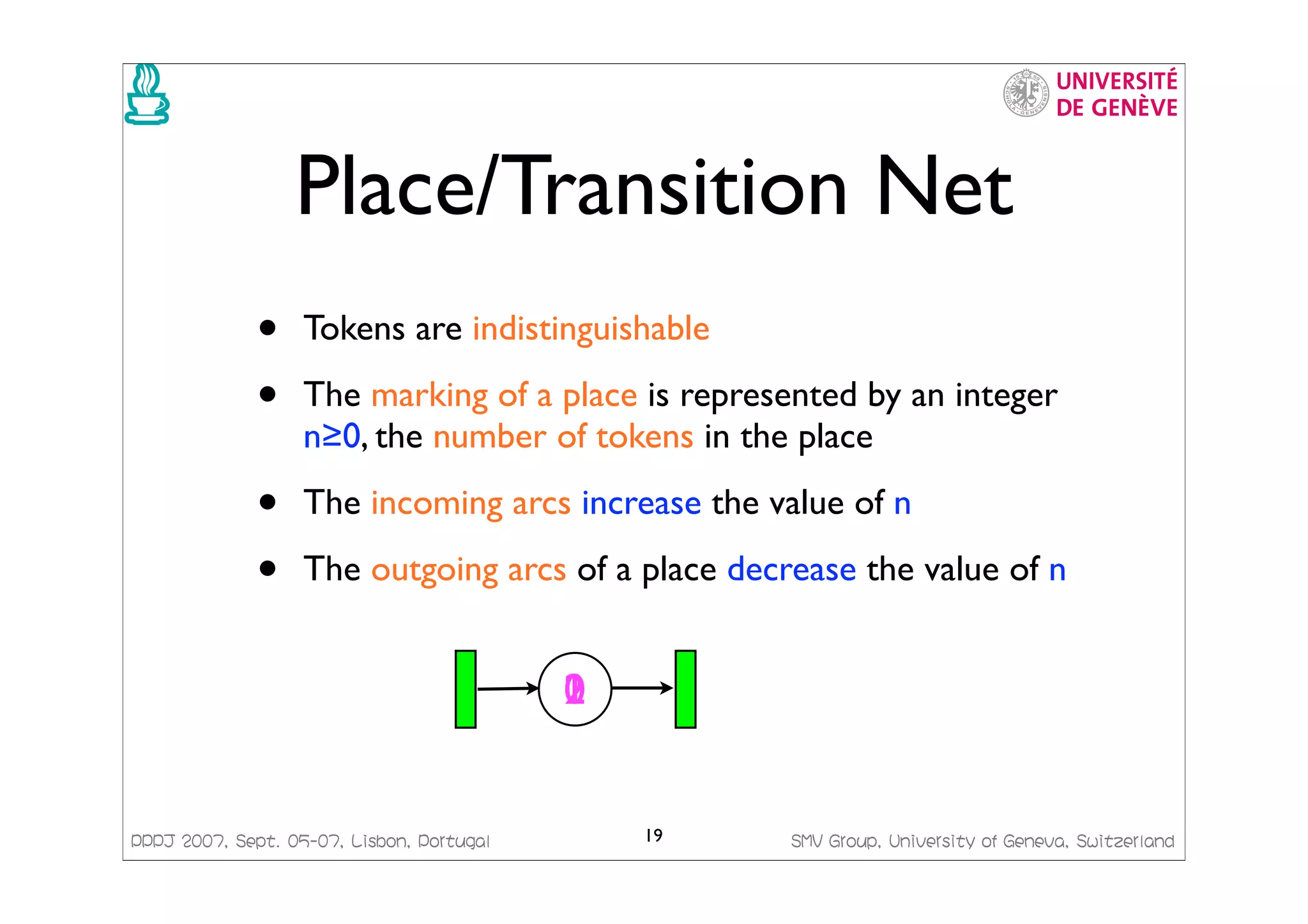
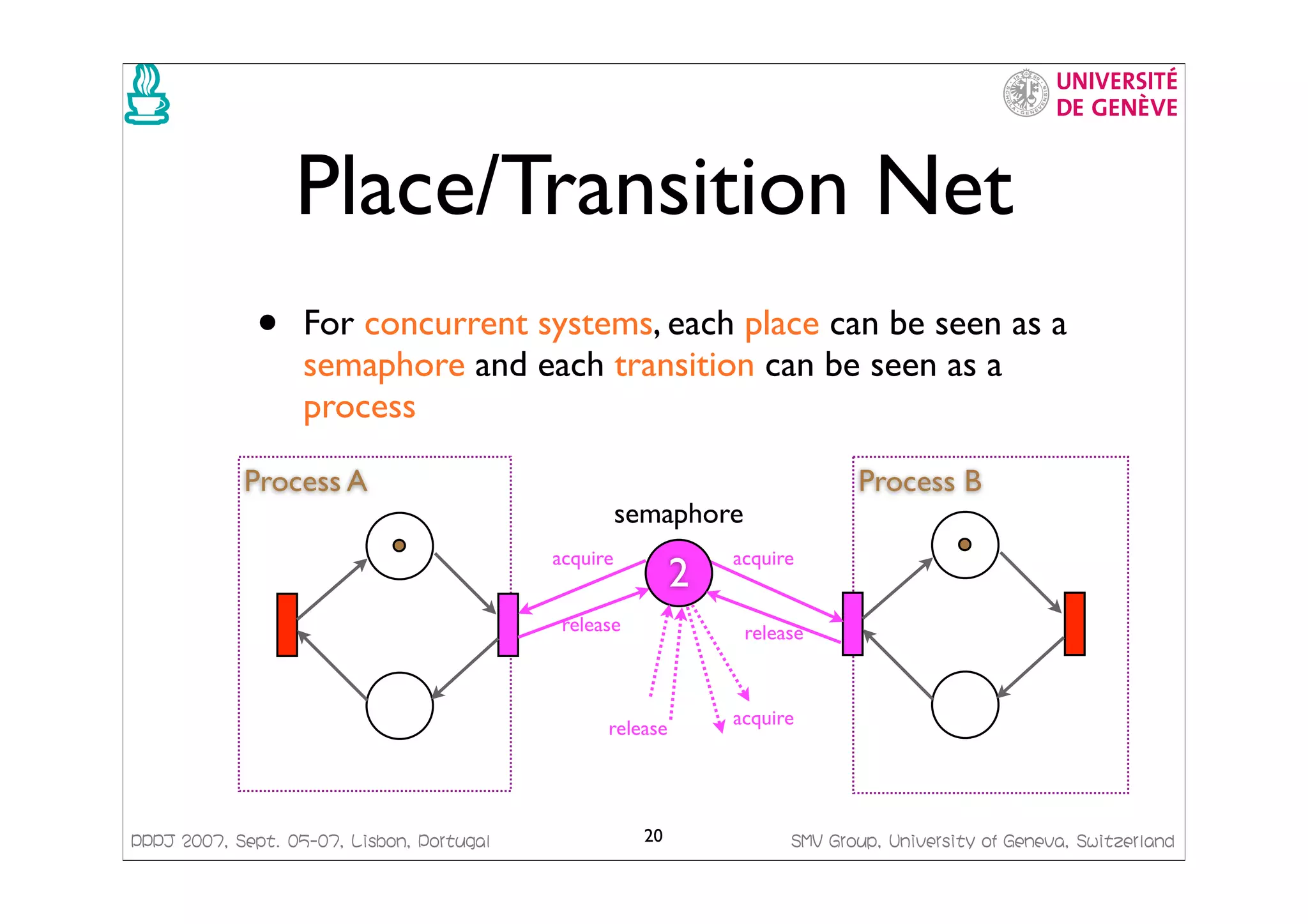
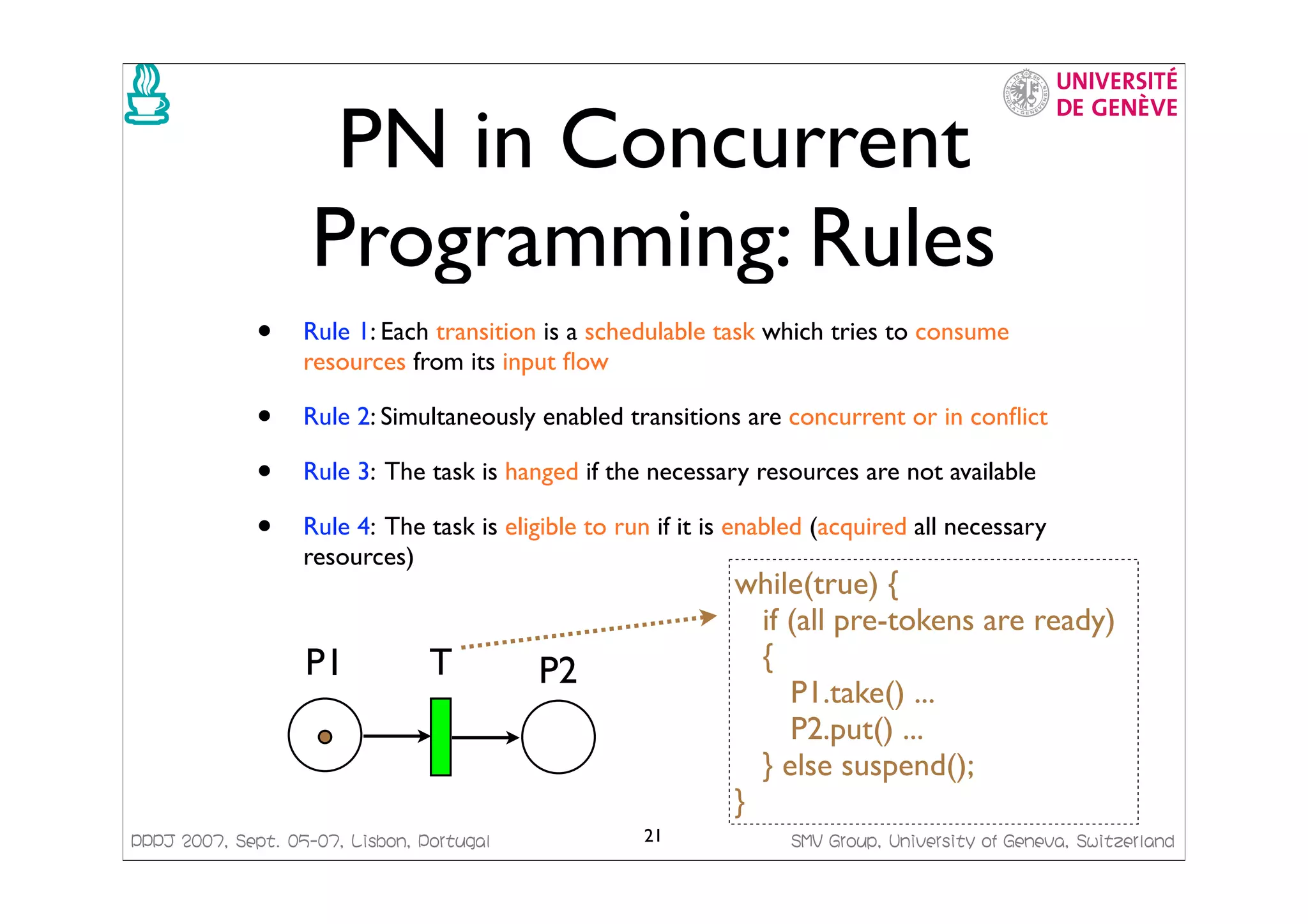
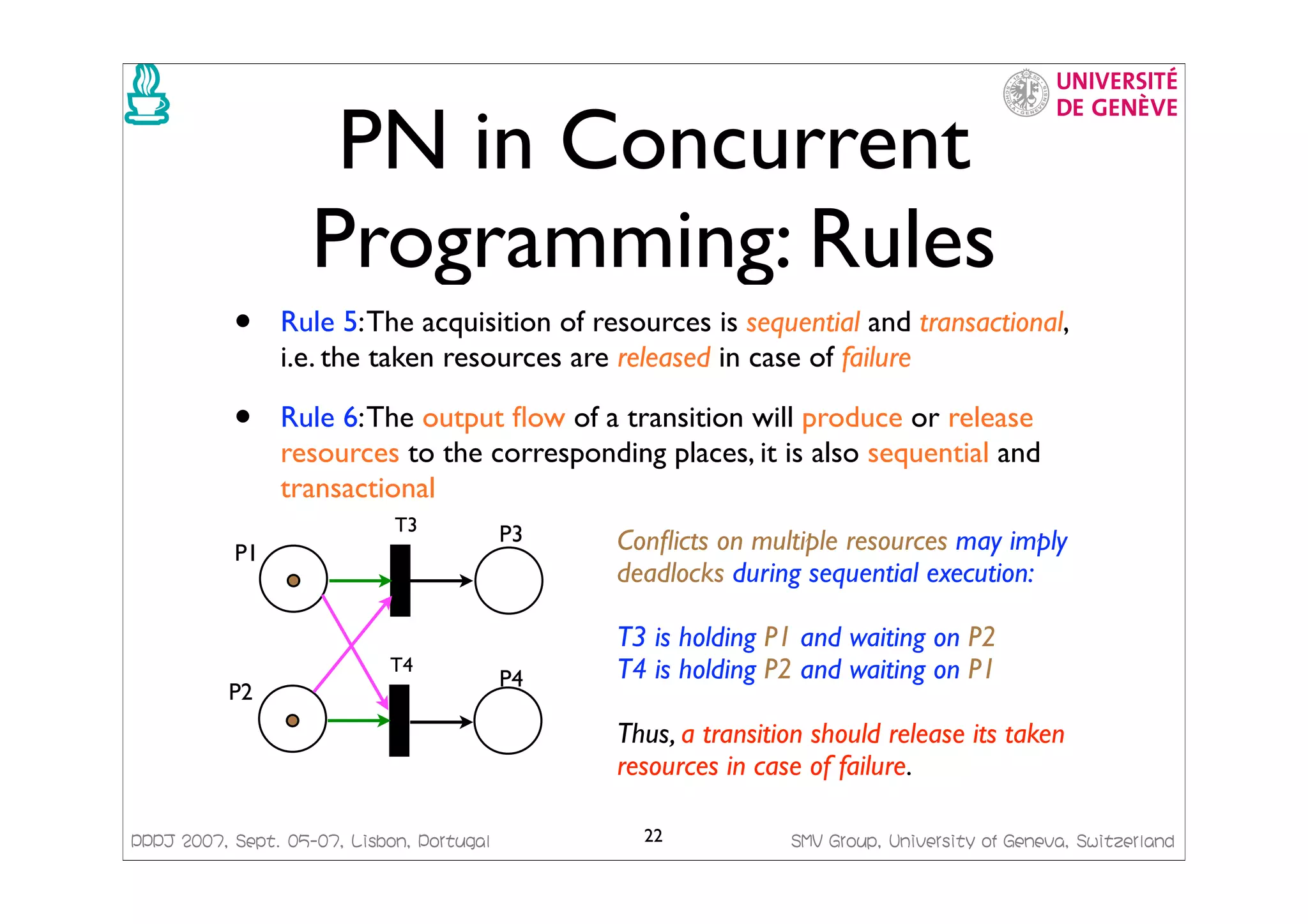
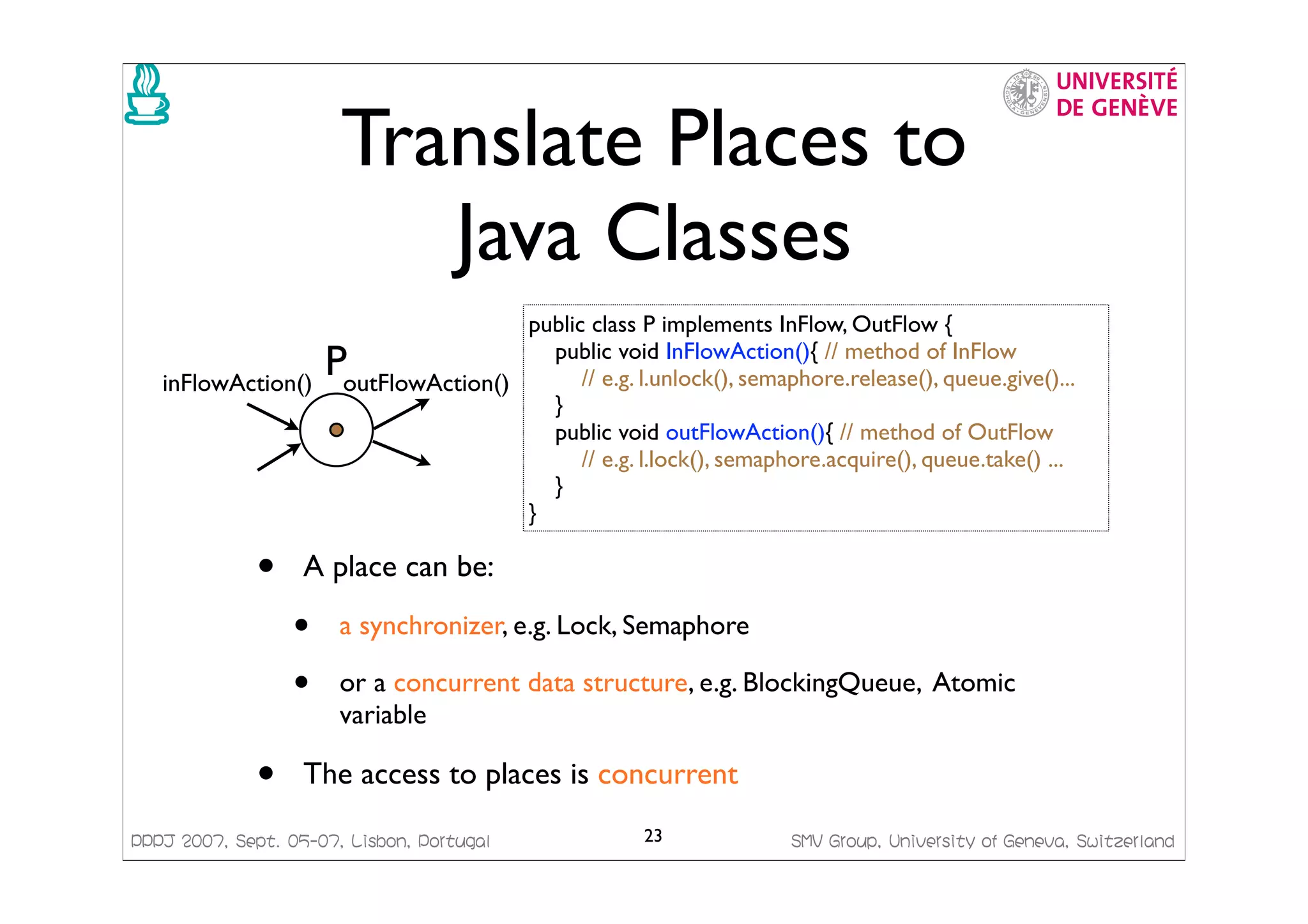
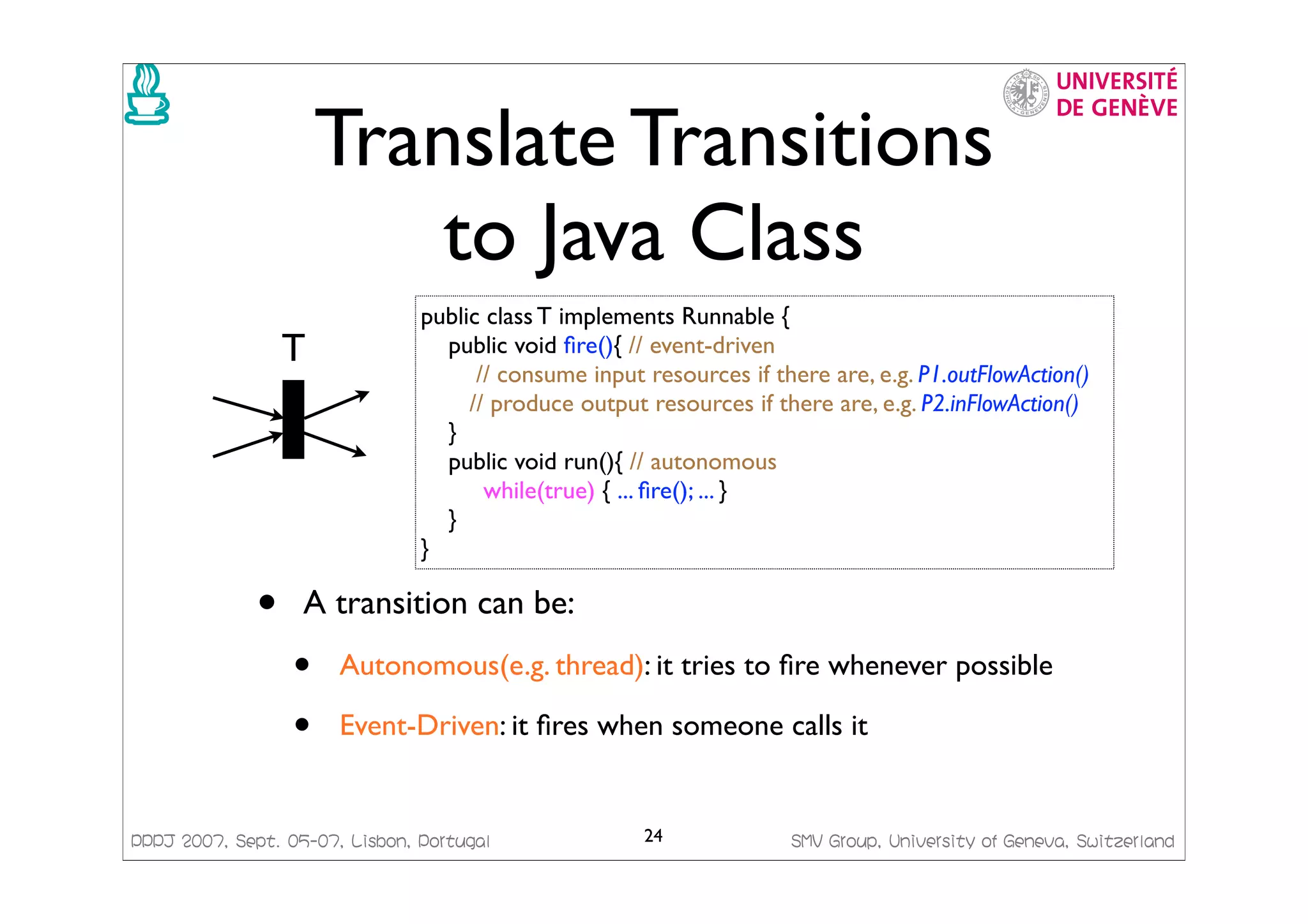
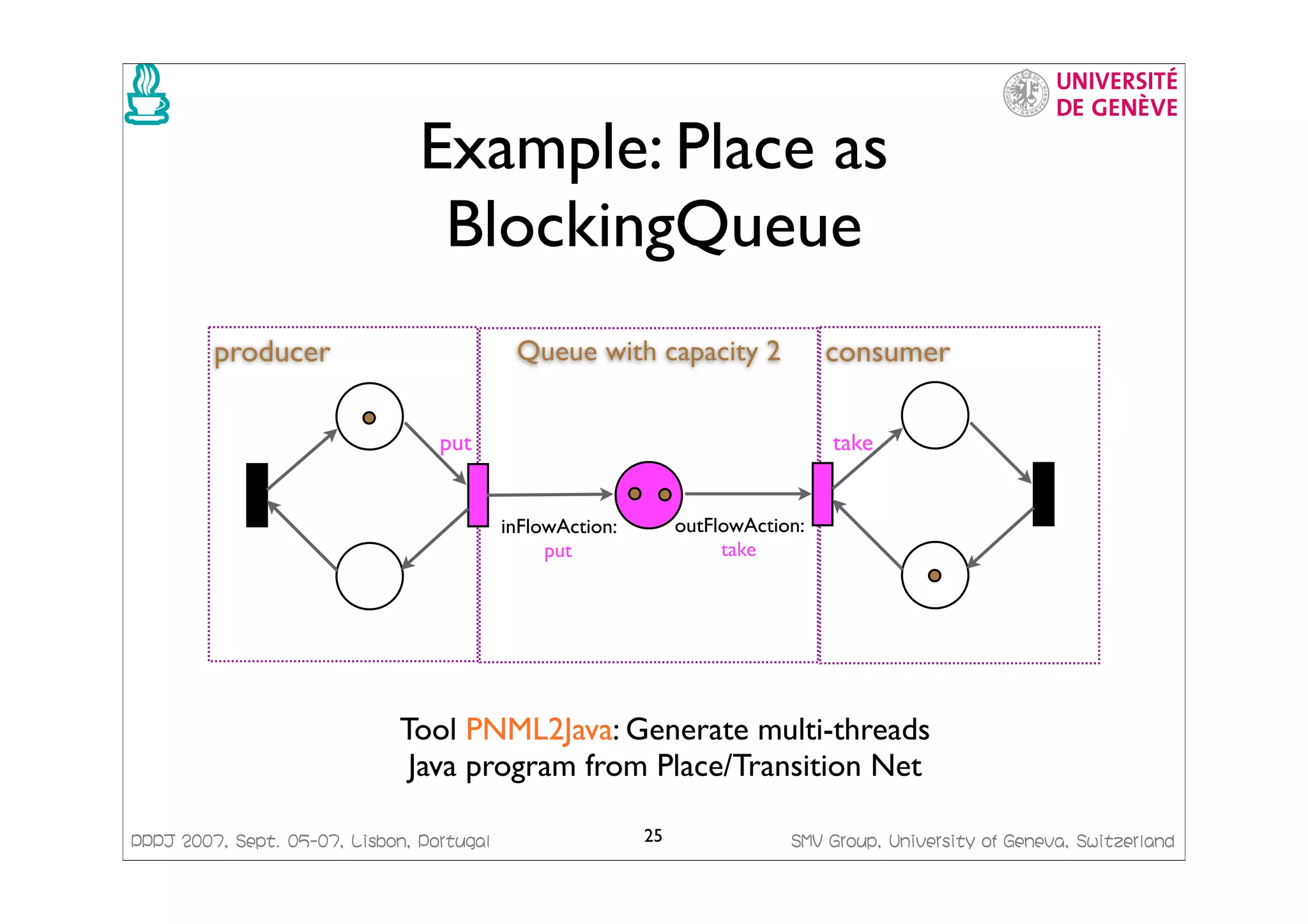
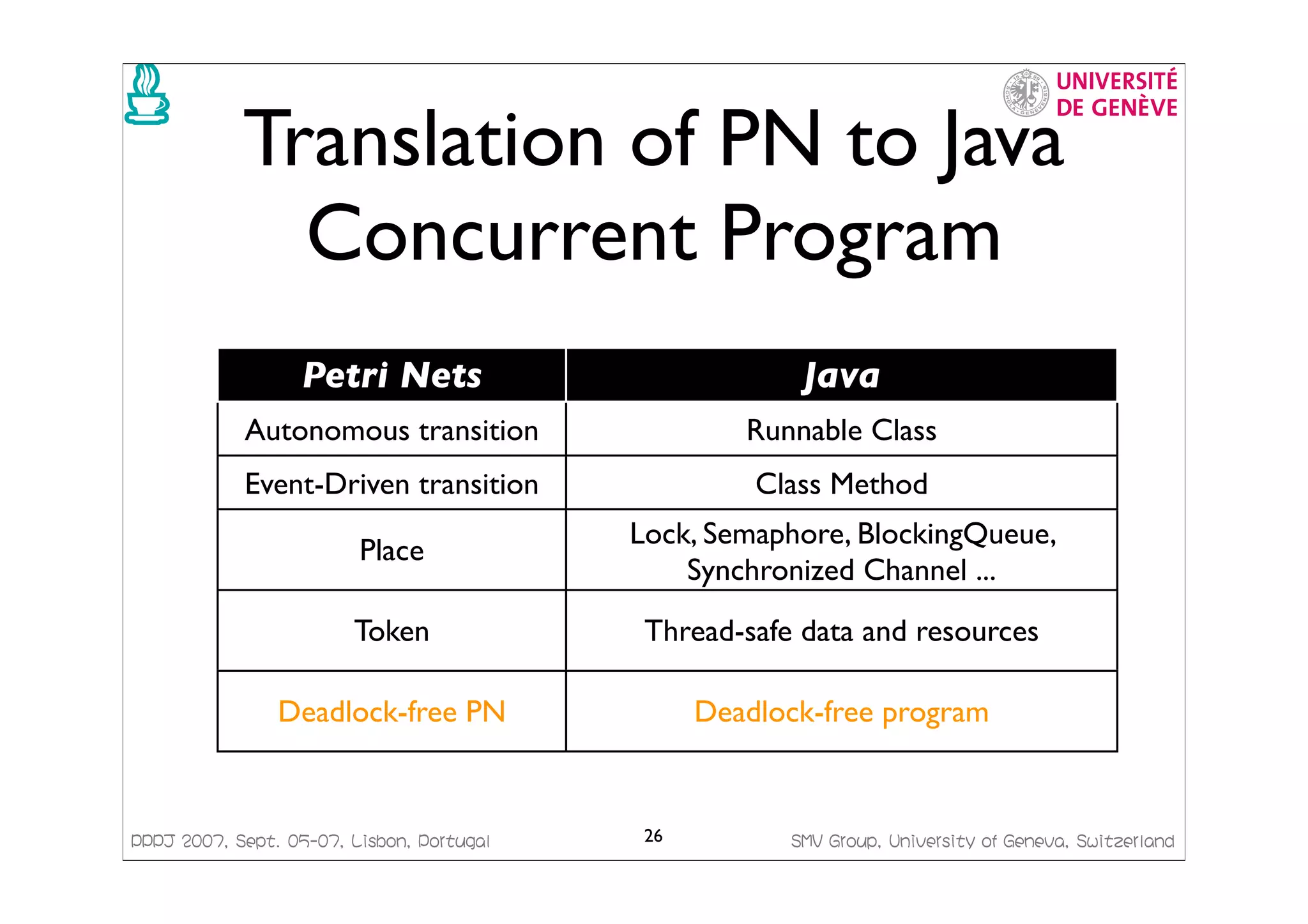
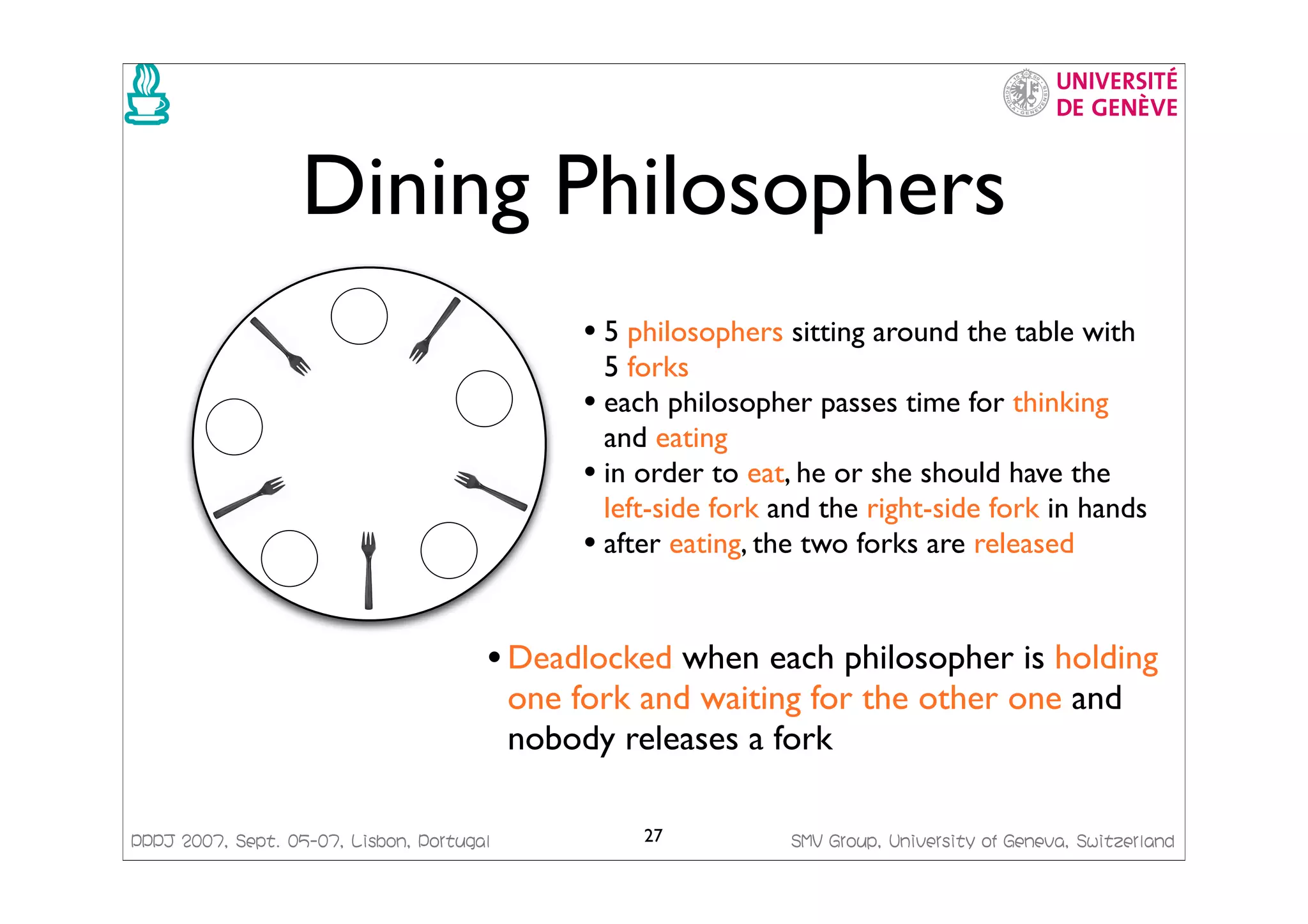
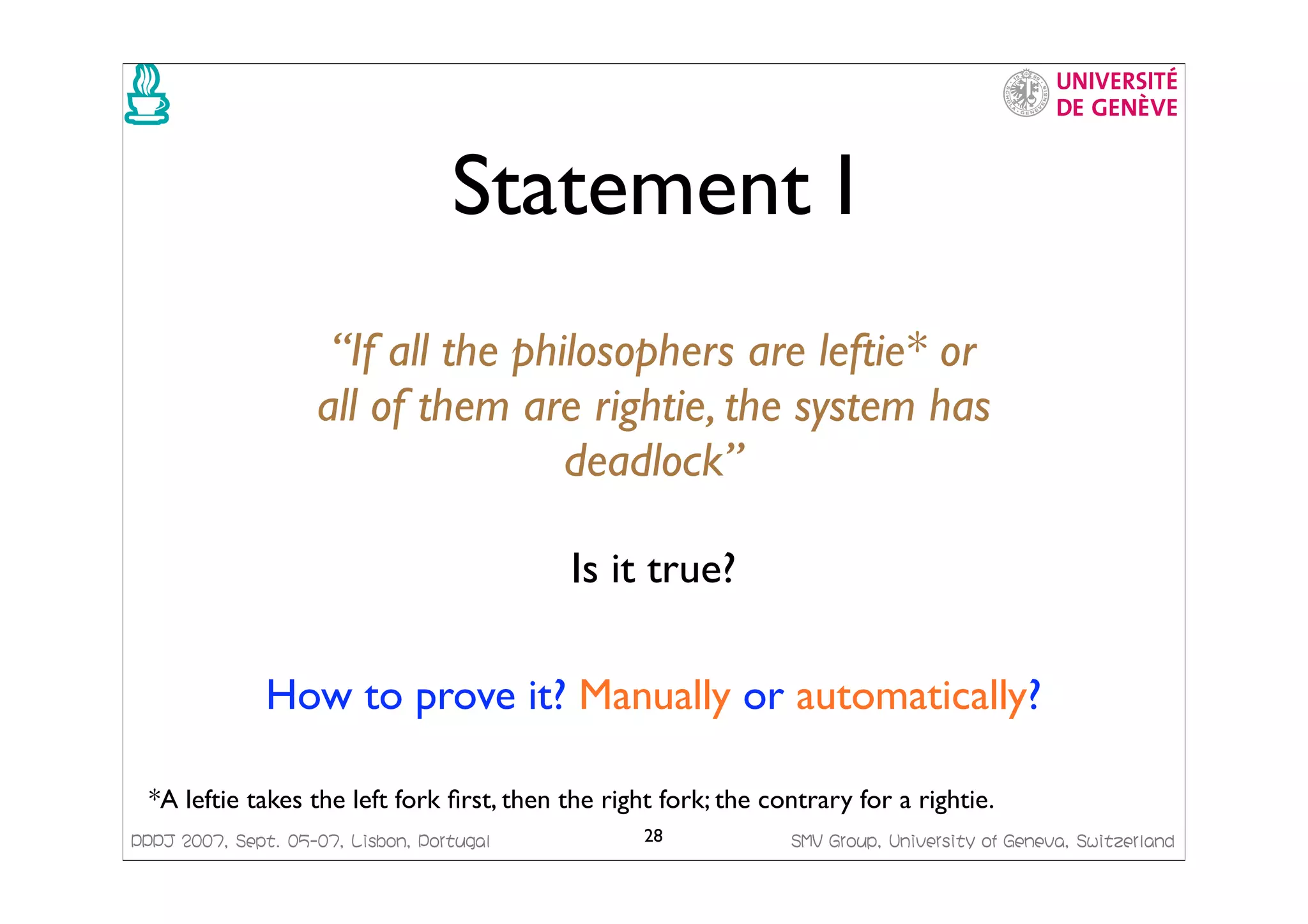
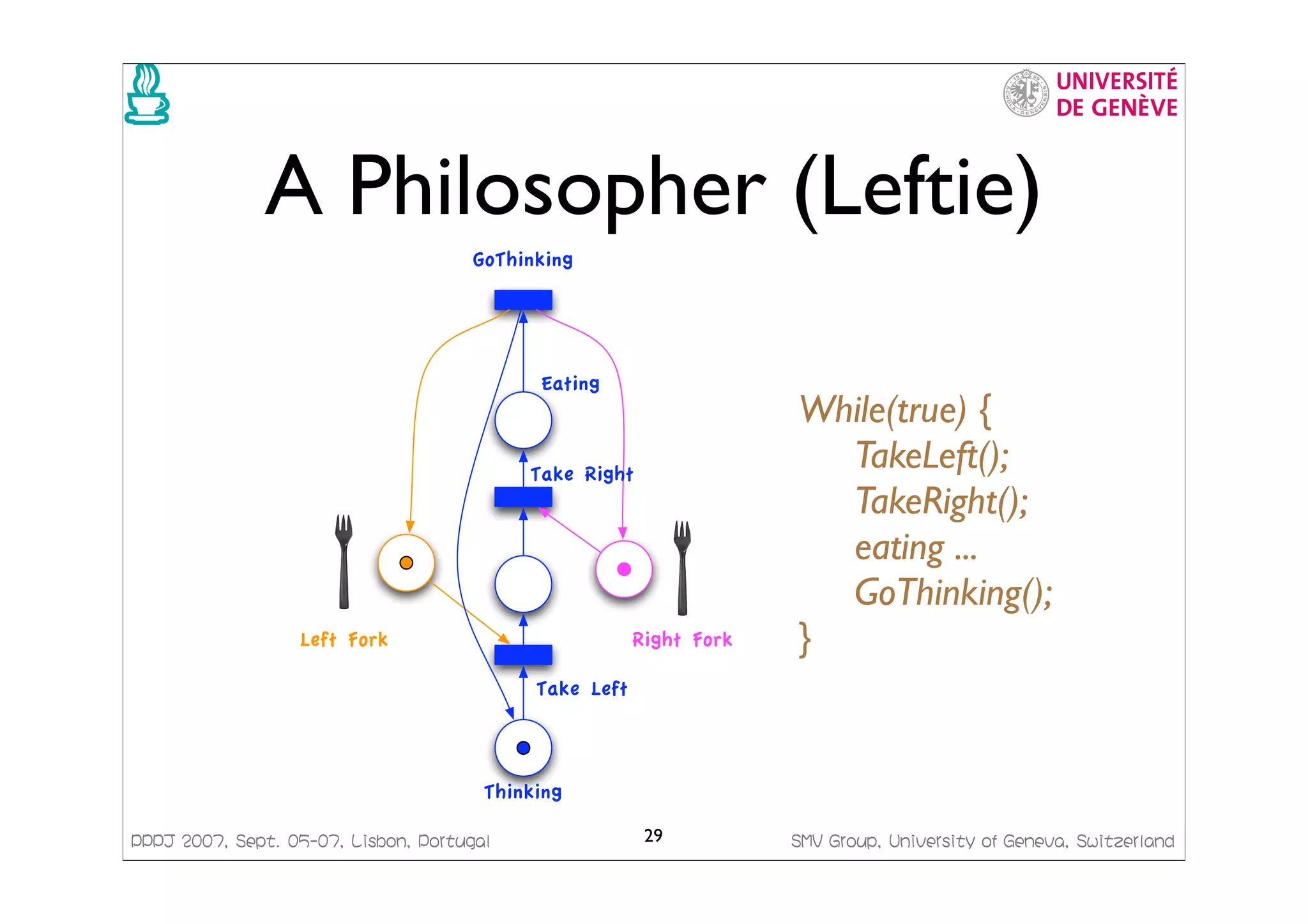
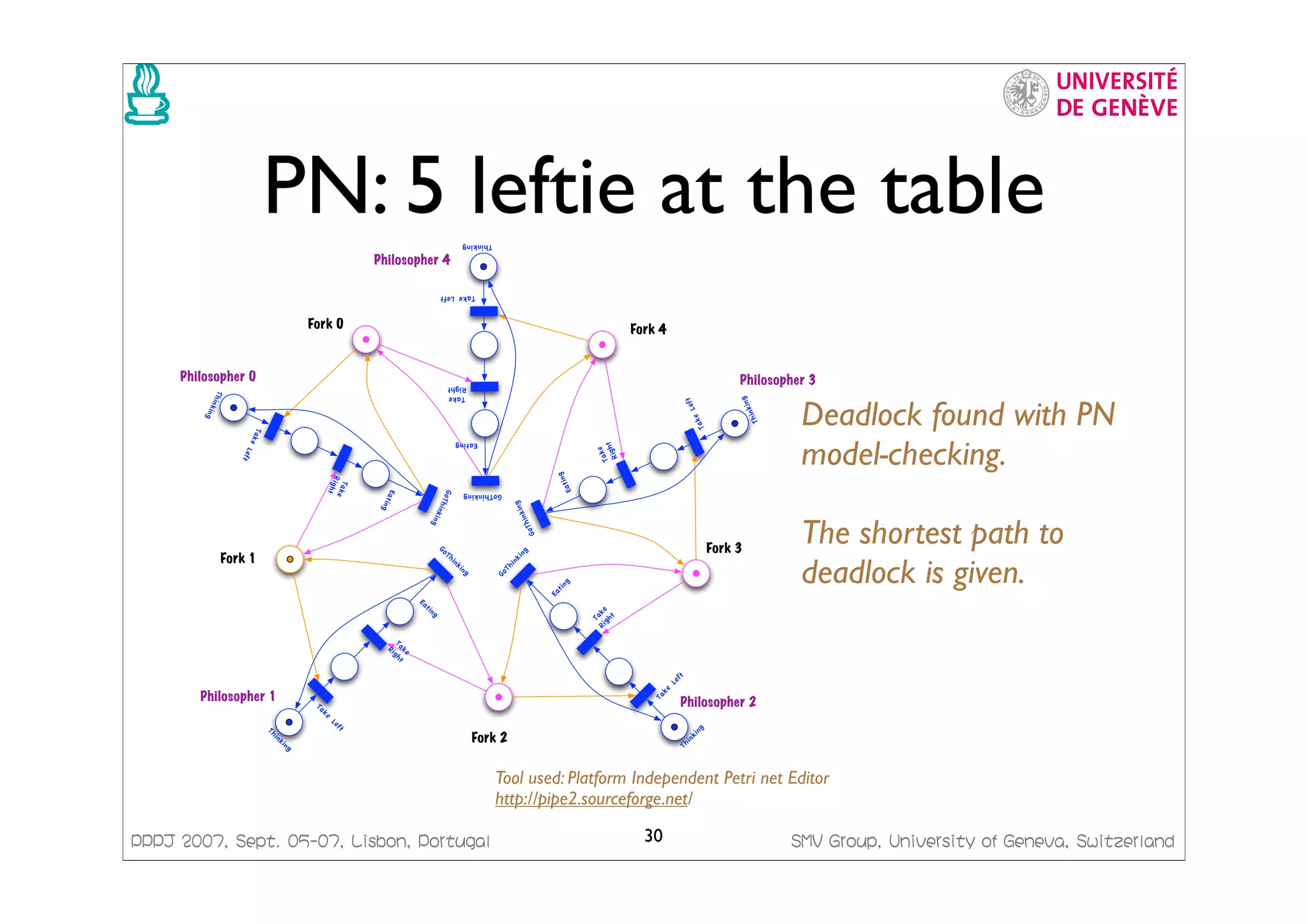
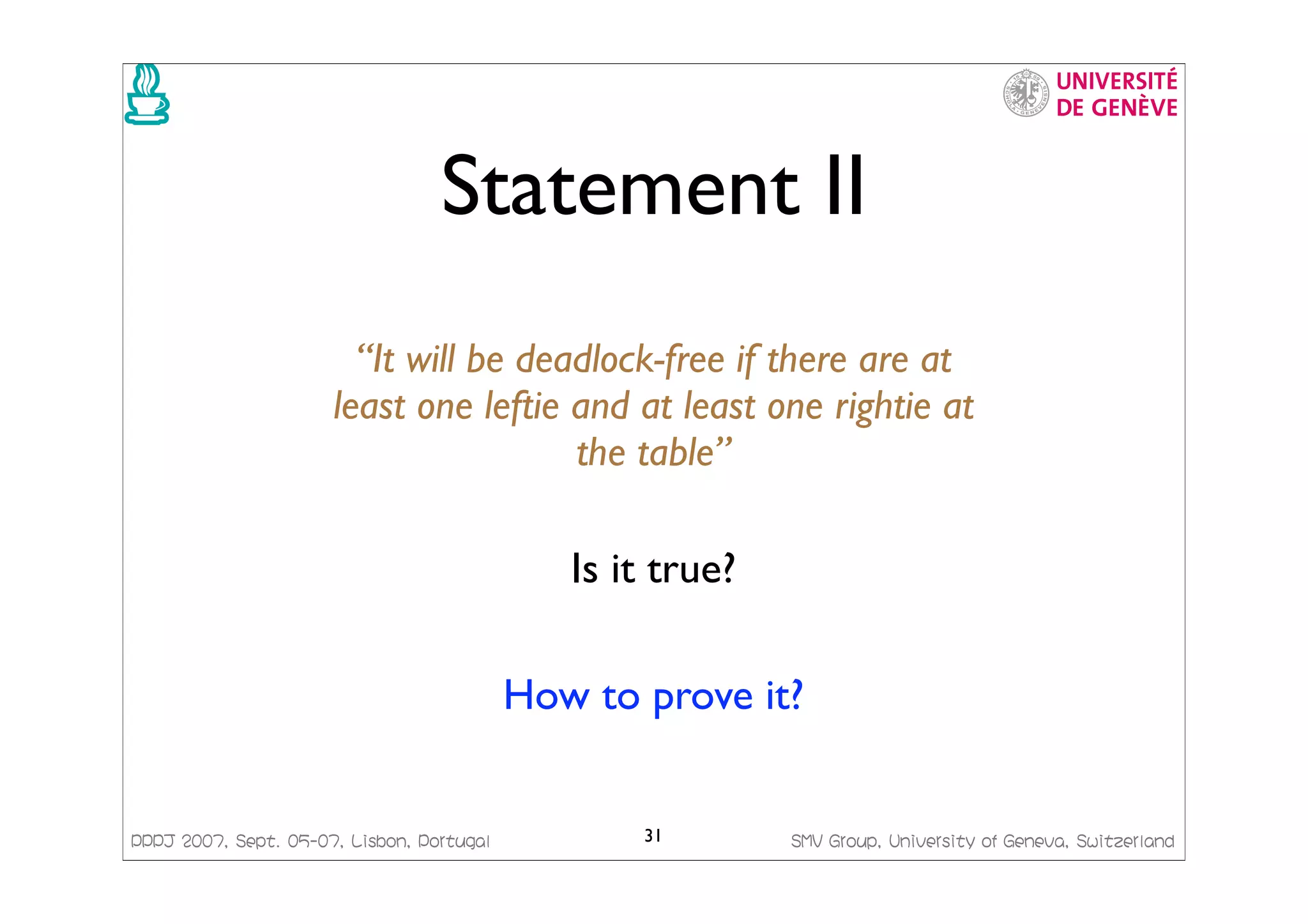
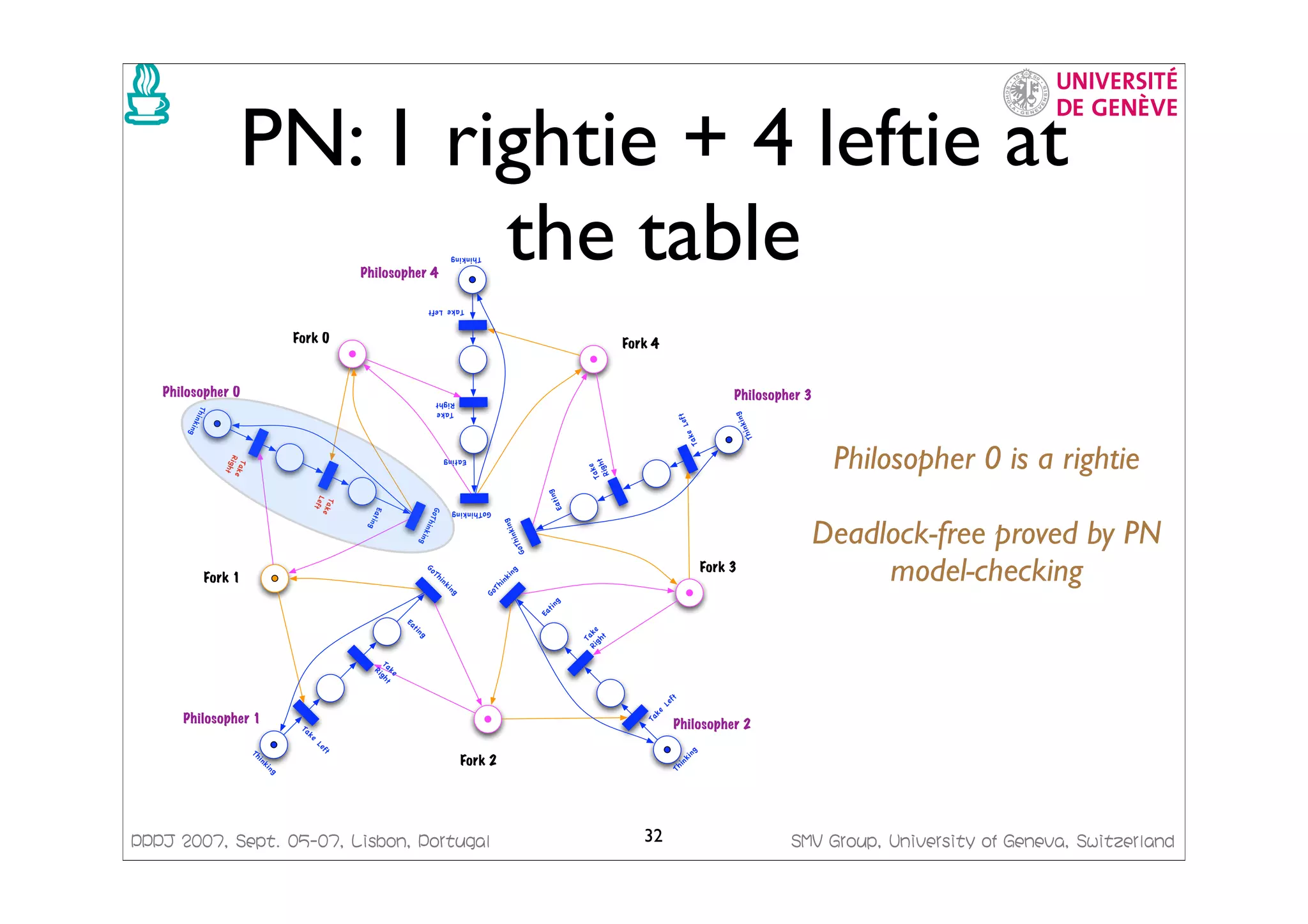
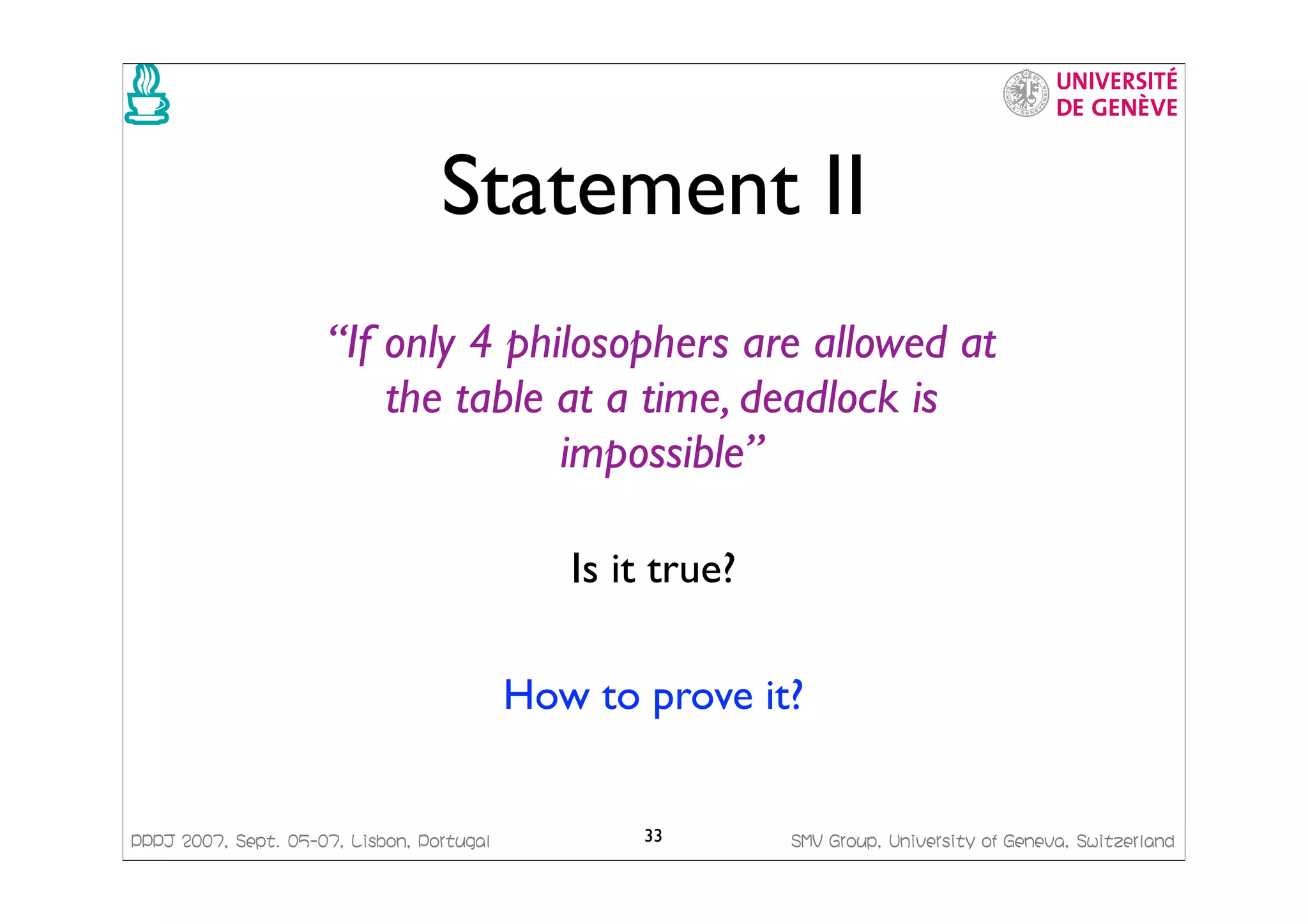
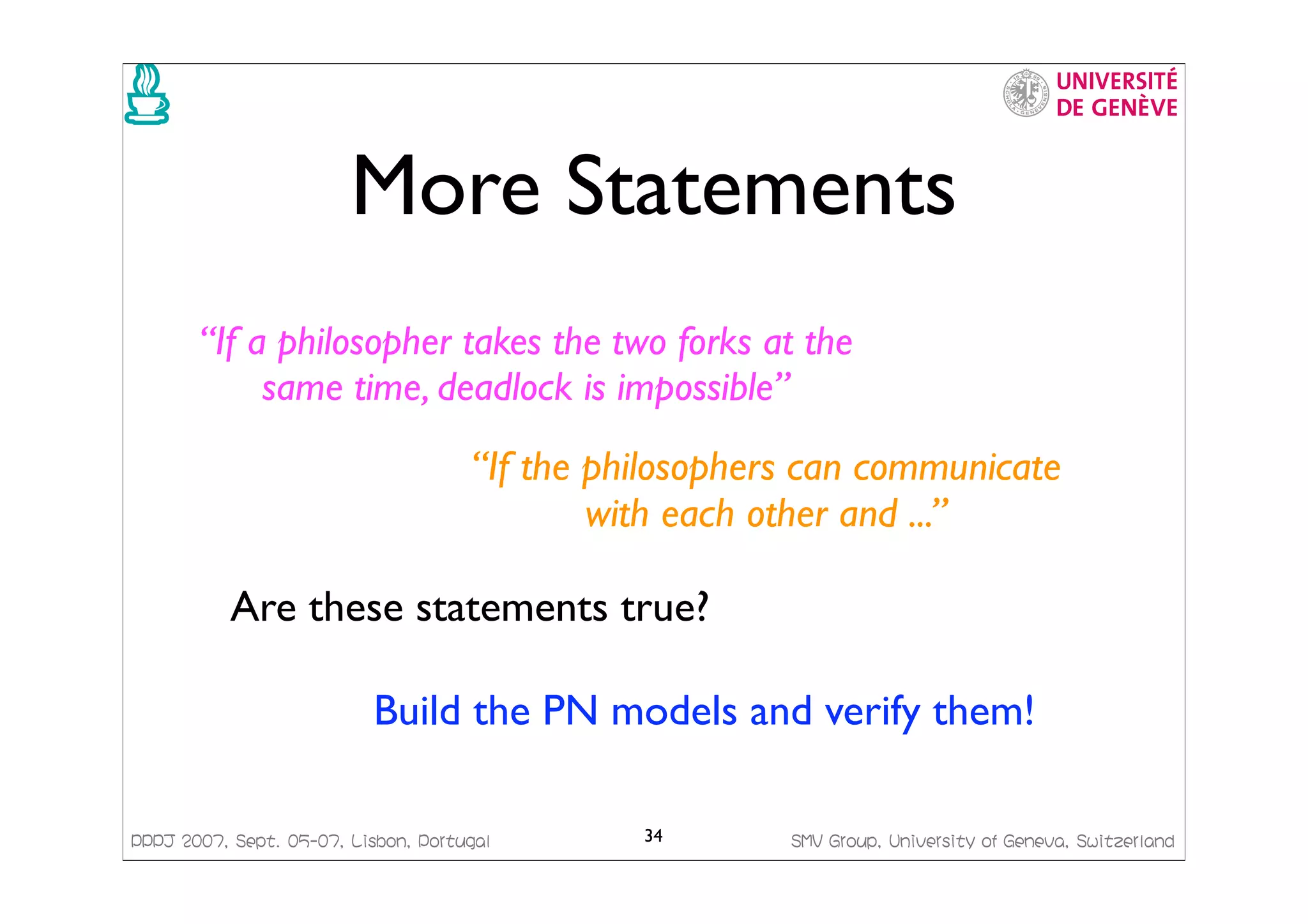
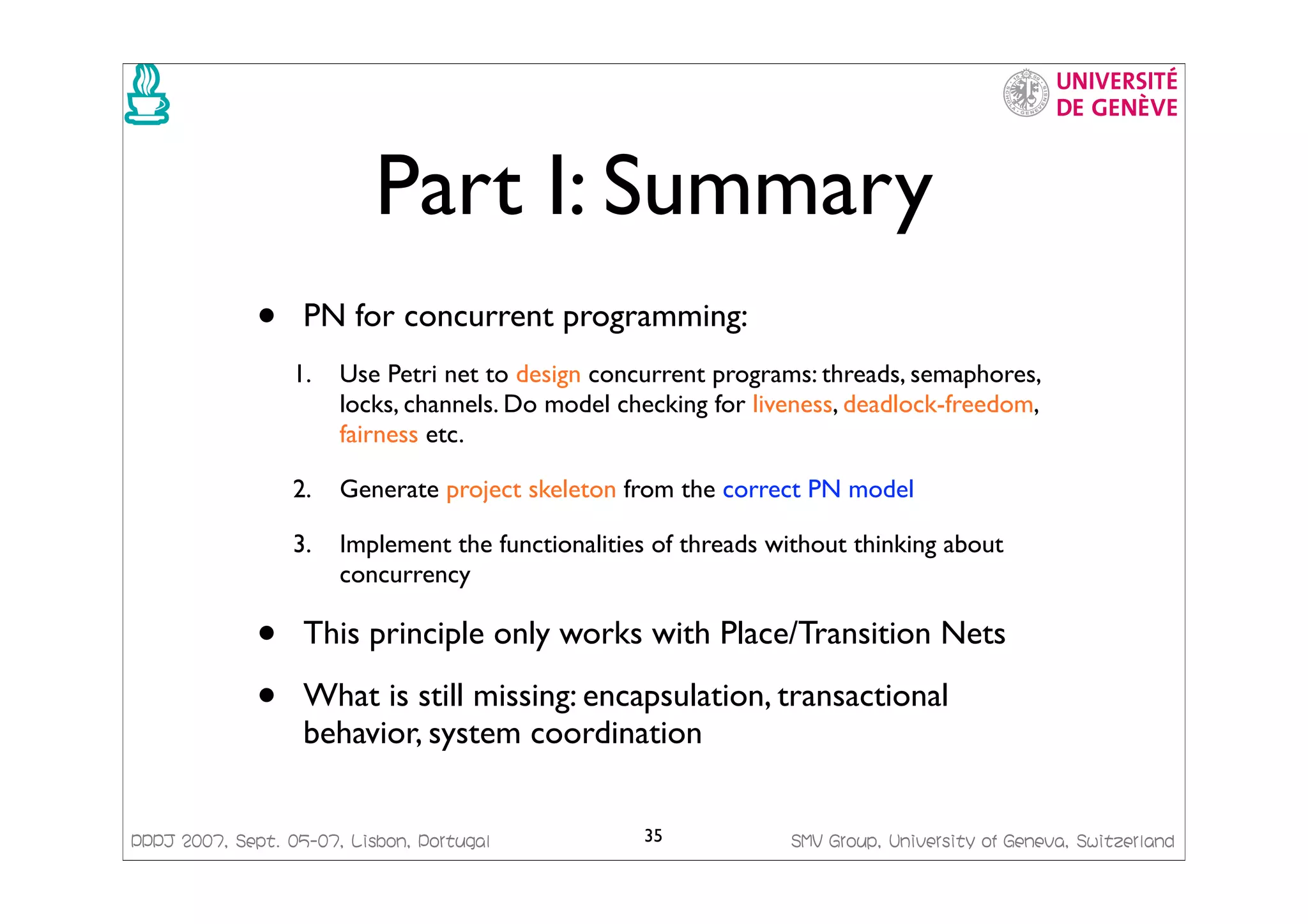
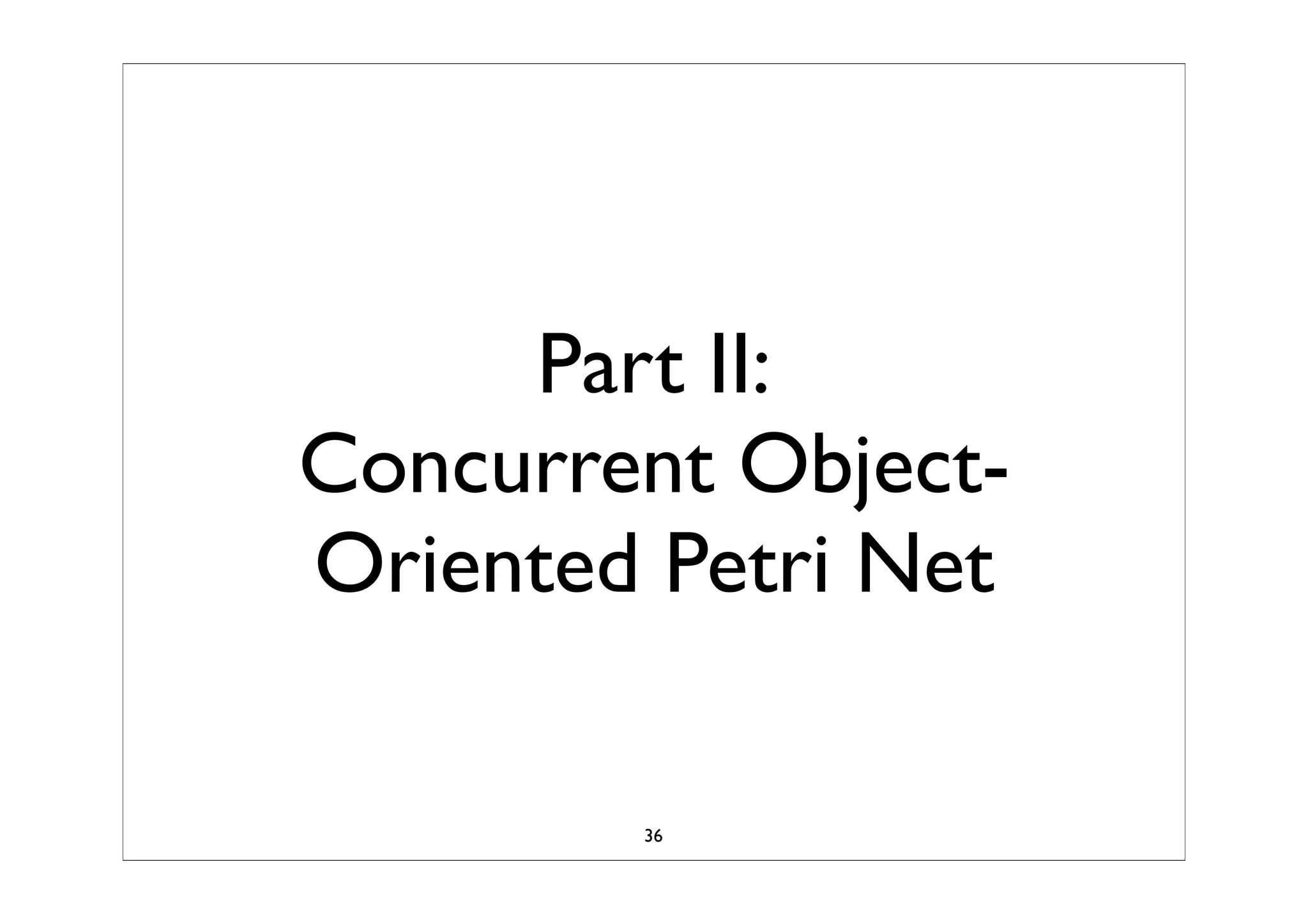
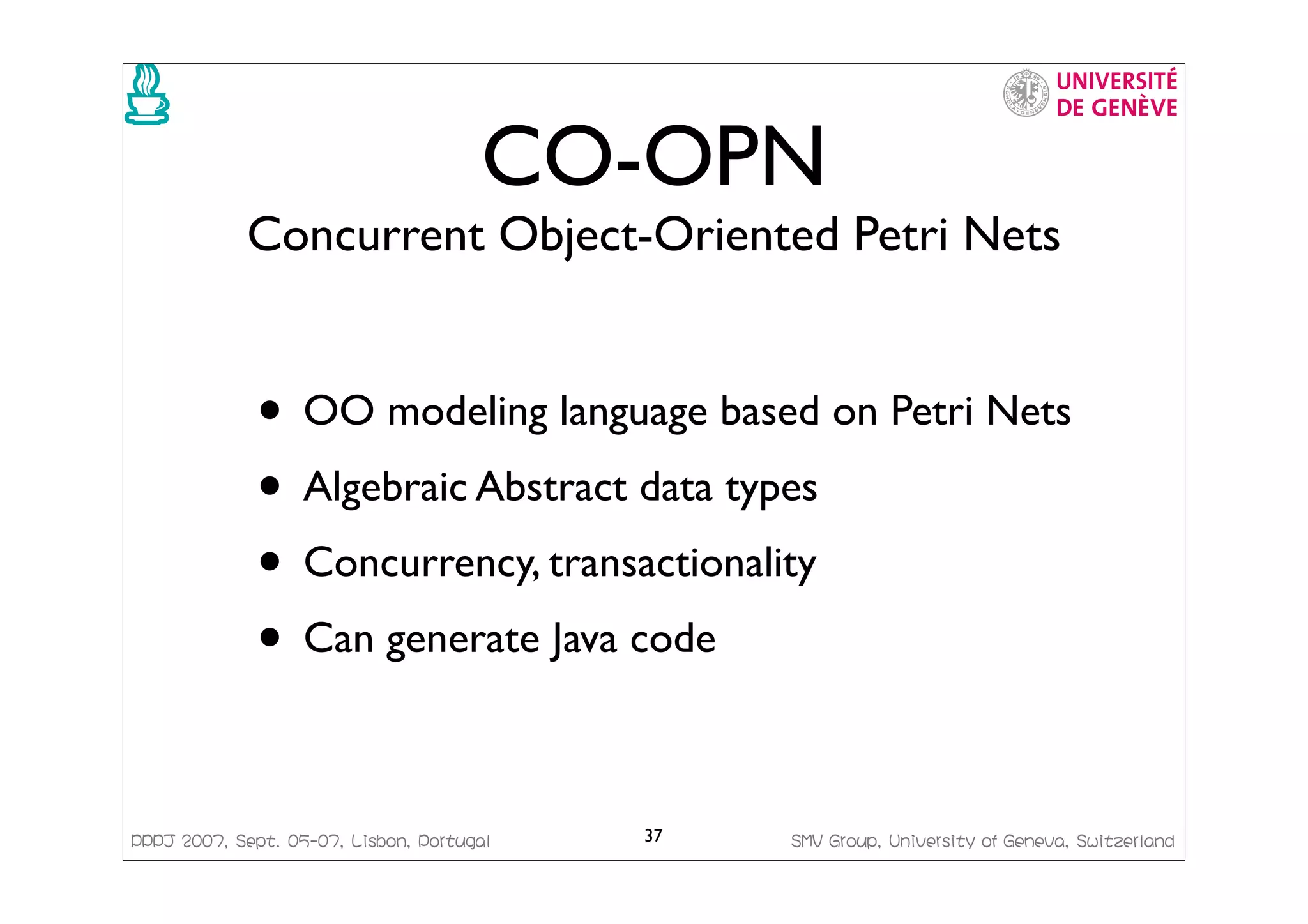
![PPPJ
2007,
Sept.
05-07,
Lisbon,
Portugal SMV
Group,
University
of
Geneva,
Switzerland CO-OPN Modules • Classes - encapsulate a Petri Net - have methods and gates (events) Producer produce produce ready give r r Class Producer; Interface Methods produce; Gates give; Body Places ready [...] End Producer; 38](https://image.slidesharecdn.com/pppjslides-1228729955250605-8/75/Java-Code-Generation-from-Formal-Models-The-CO-OPN-Framework-38-2048.jpg)
![PPPJ
2007,
Sept.
05-07,
Lisbon,
Portugal SMV
Group,
University
of
Geneva,
Switzerland CO-OPN Modules • Contexts - instantiate and coordinate objects P produce produce ready give r r C use consumed r ProducerConsumerSystem produce Context ProducerConsumerSystem; Interface Methods produce; [...] Body Objects P: Producer; C: Consumer; Axioms produce with P.produce; P.give with C.use; [...] End ProducerConsumerSystem; 39](https://image.slidesharecdn.com/pppjslides-1228729955250605-8/75/Java-Code-Generation-from-Formal-Models-The-CO-OPN-Framework-39-2048.jpg)
![PPPJ
2007,
Sept.
05-07,
Lisbon,
Portugal SMV
Group,
University
of
Geneva,
Switzerland CO-OPN Modules • ADT (Abstract algebraic Data Types) - define data types (primitive + structured) • Generators • Operations • Theorems • Algebraic definition of data ADT Booleans; Interface Generators true:->boolean; false:->boolean; Operations _ and _: boolean, boolean -> boolean; [...] Axioms true and b = b; false and b = false; [...] End Booleans; 40](https://image.slidesharecdn.com/pppjslides-1228729955250605-8/75/Java-Code-Generation-from-Formal-Models-The-CO-OPN-Framework-40-2048.jpg)
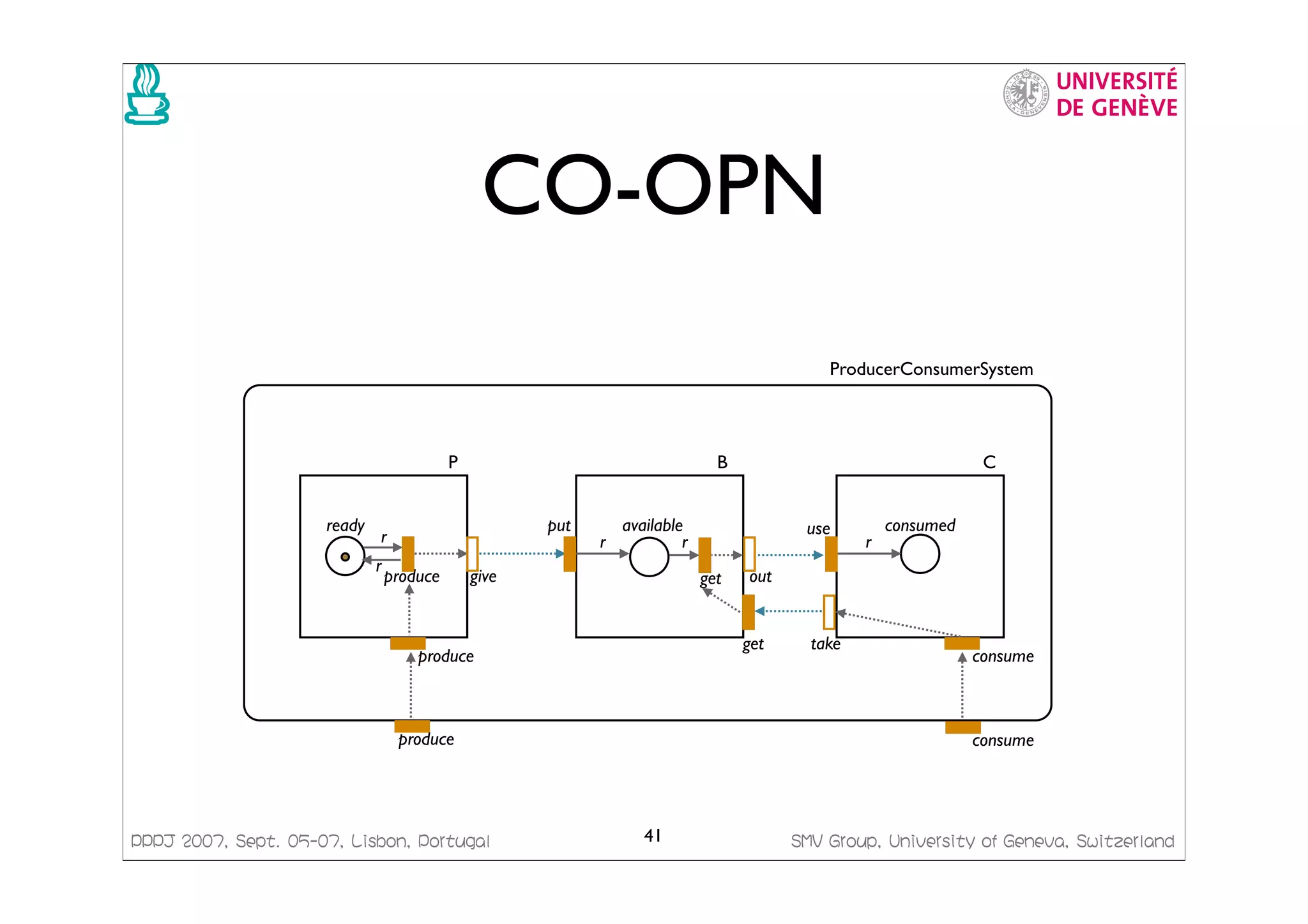
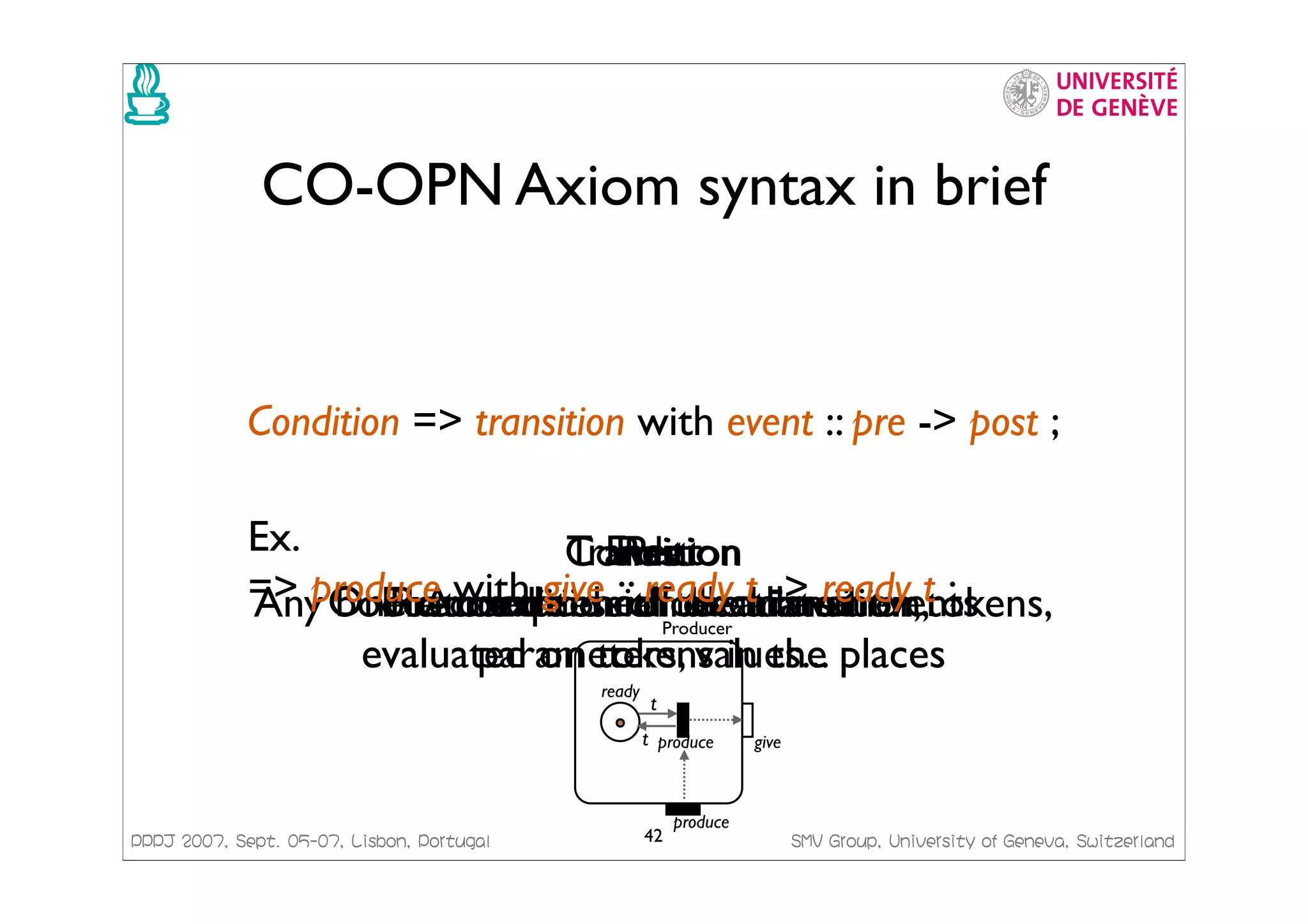
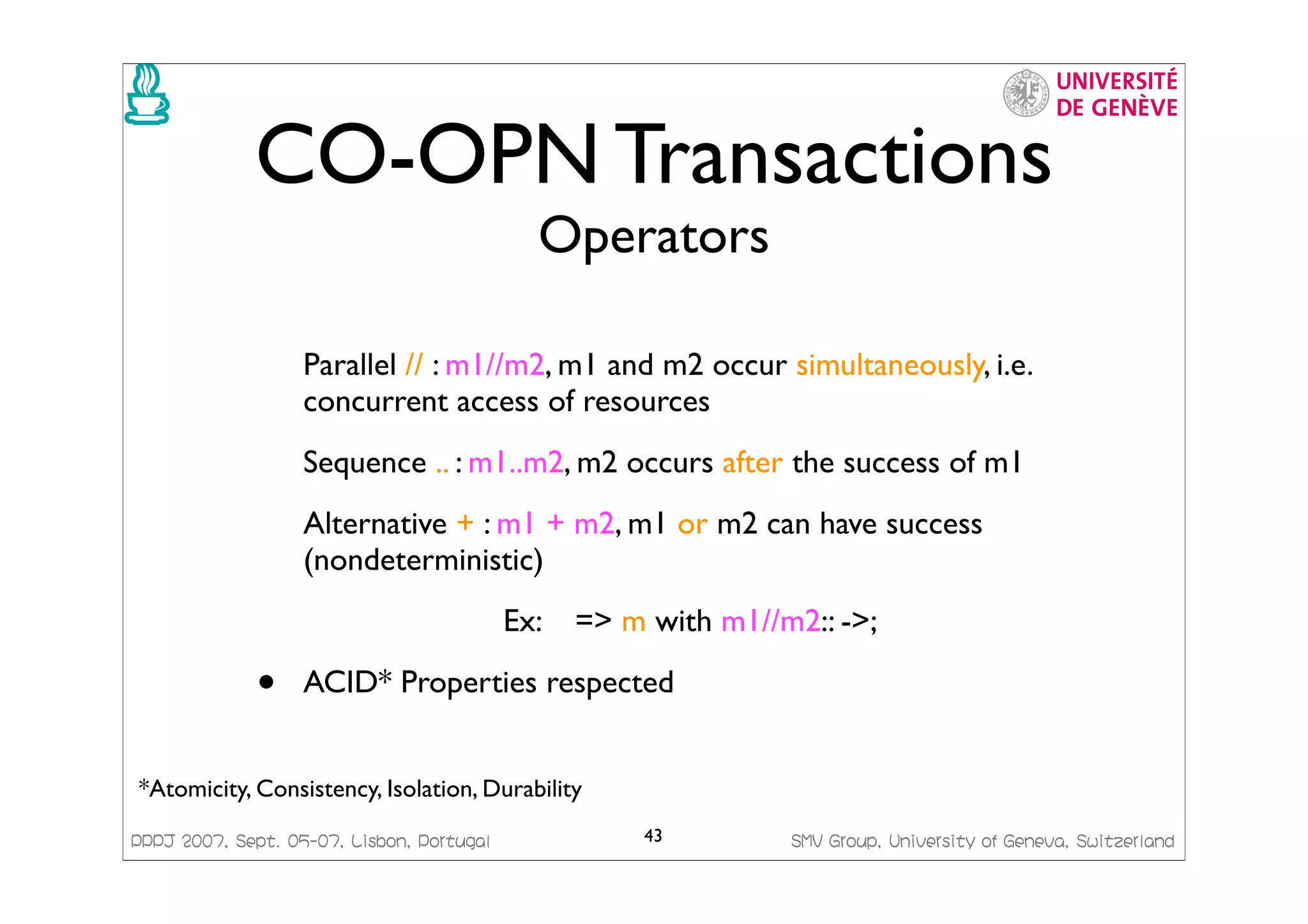
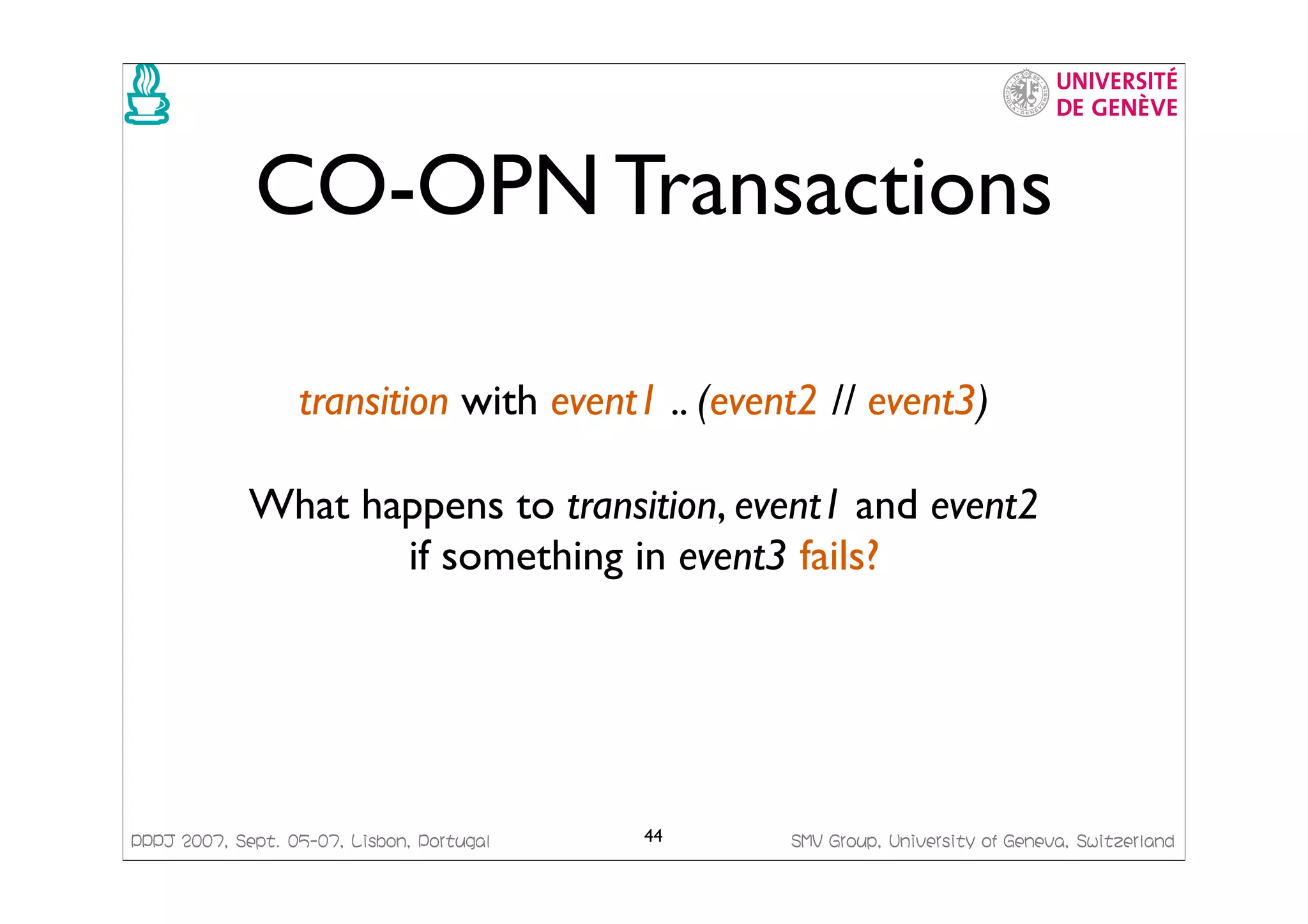
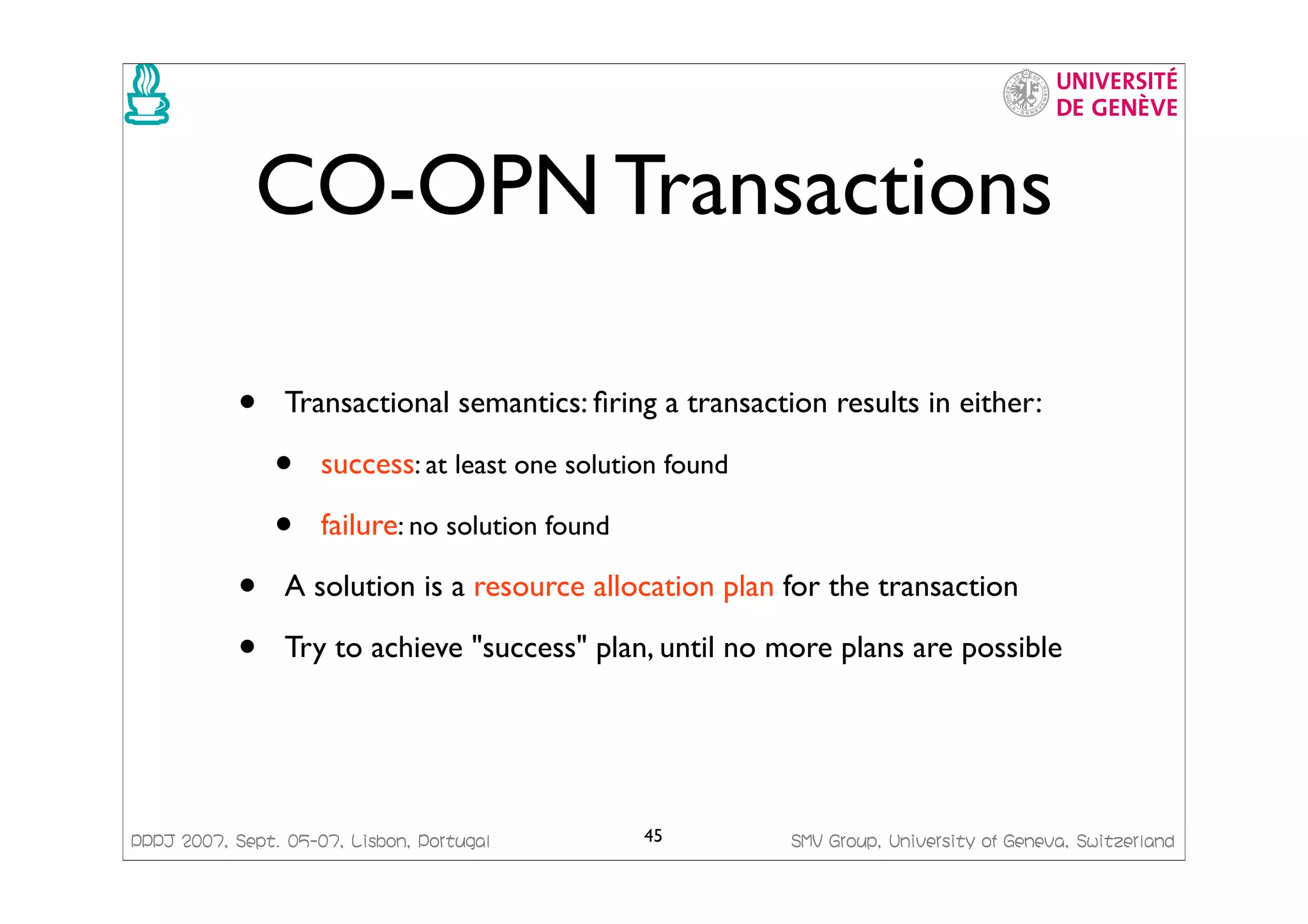
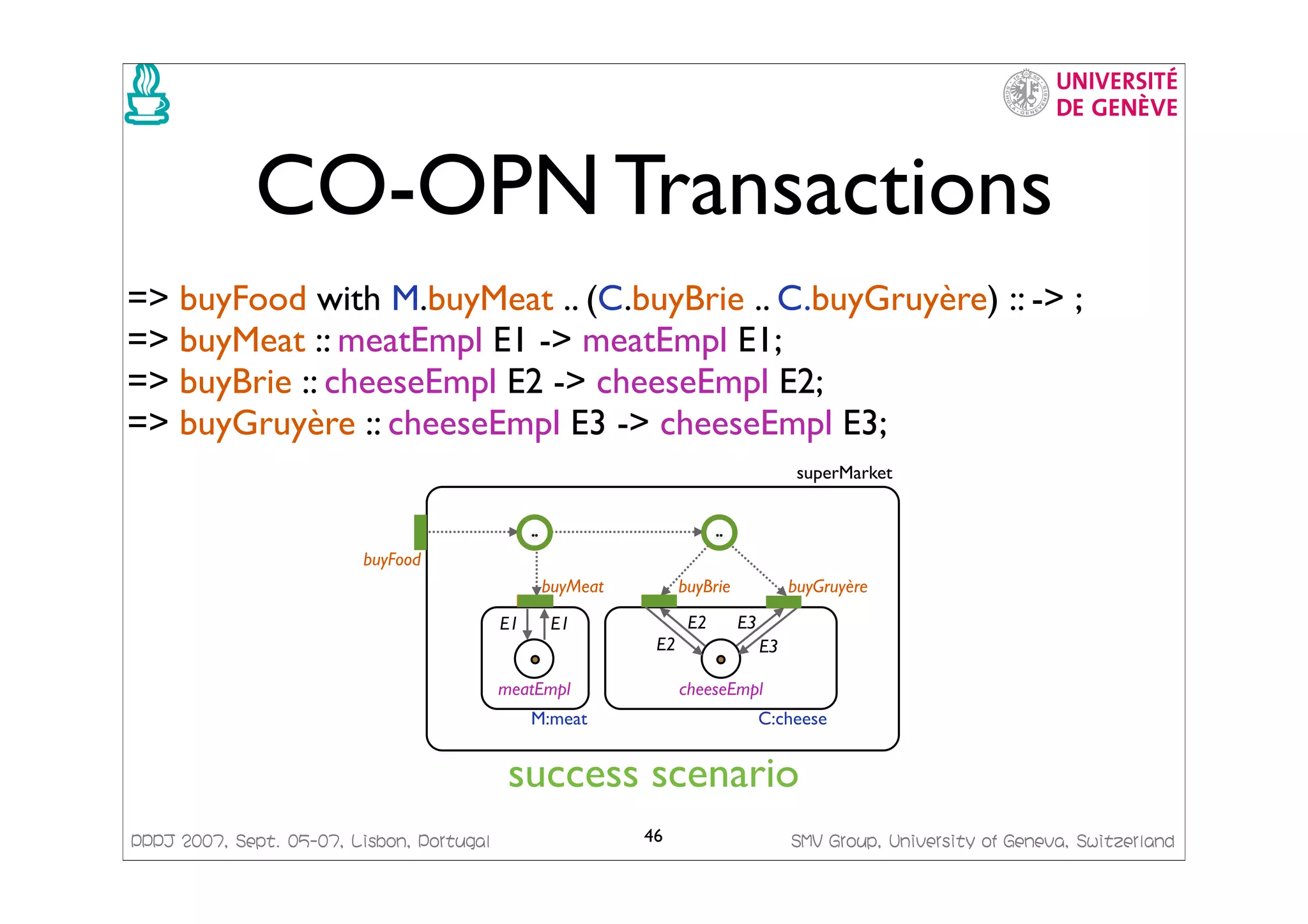
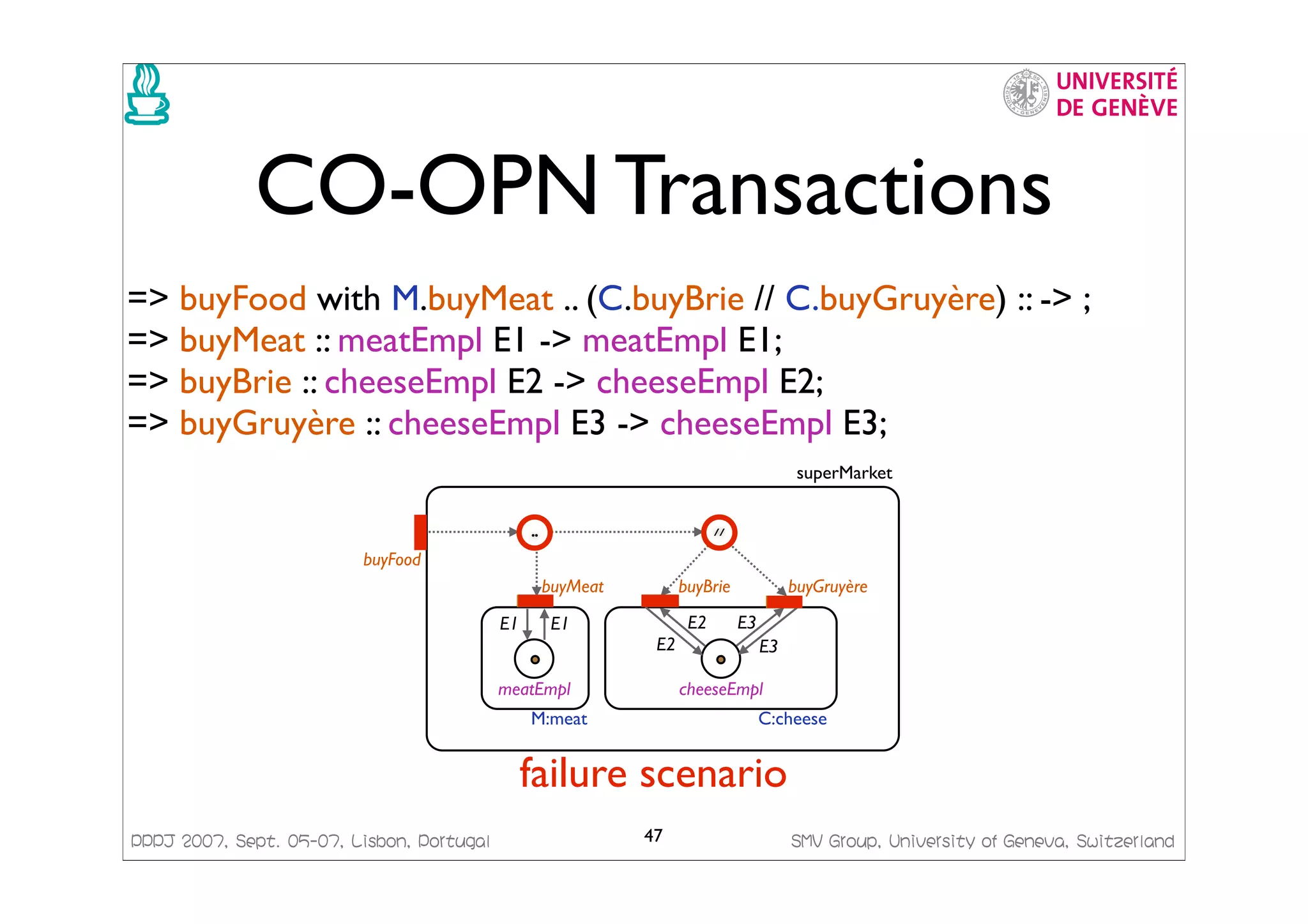
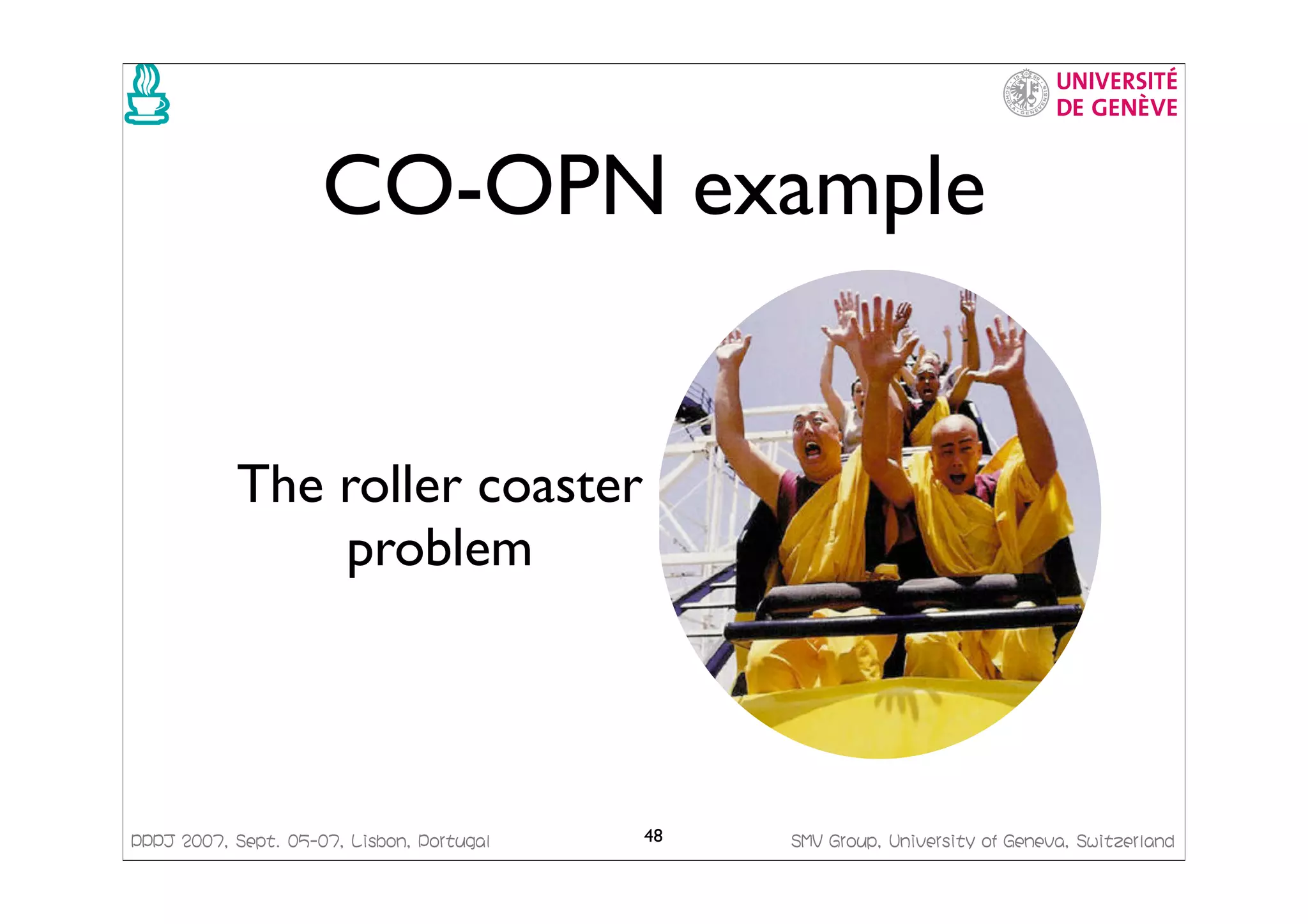
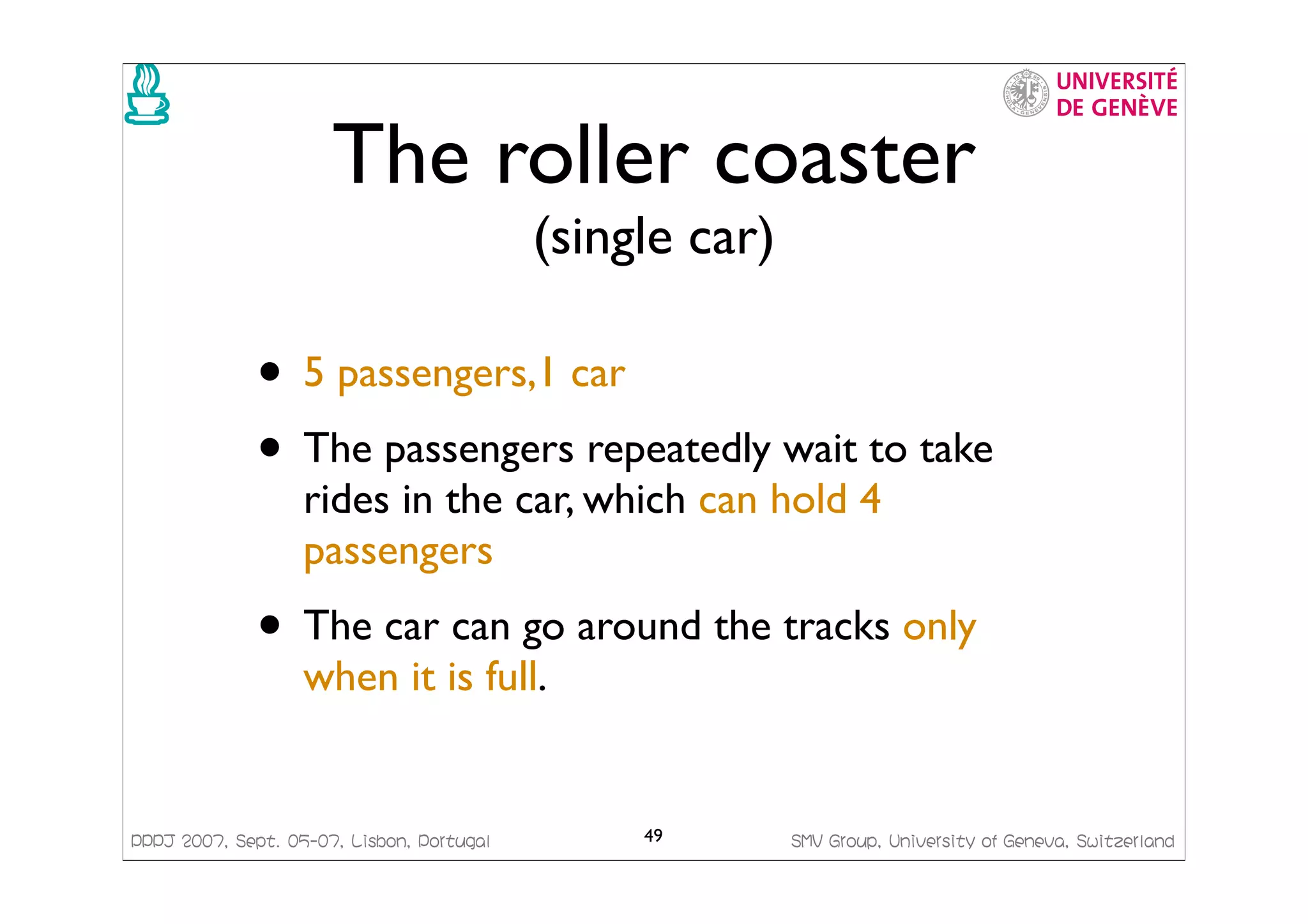
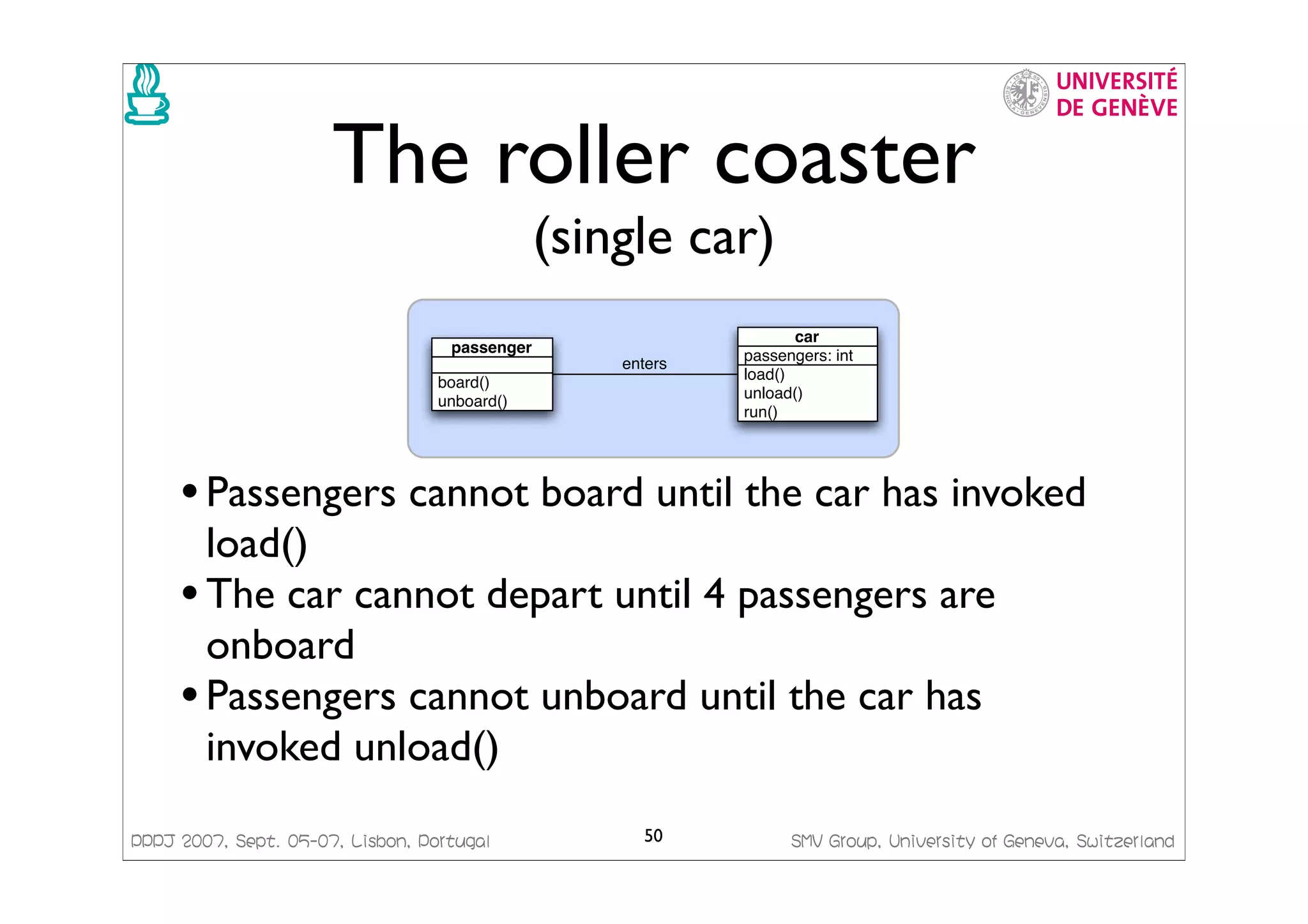
![PPPJ
2007,
Sept.
05-07,
Lisbon,
Portugal SMV
Group,
University
of
Geneva,
Switzerland The roller coaster (single car) Object diagram Passenger state machine Car state machine passengers=0 c: car p1: passenger p2: passenger p3: passenger p4: passenger p5: passenger boardedoffboard board unboard loadingunloading running load [passengers=0] run [passengers=5] unload 51](https://image.slidesharecdn.com/pppjslides-1228729955250605-8/75/Java-Code-Generation-from-Formal-Models-The-CO-OPN-Framework-51-2048.jpg)
![PPPJ
2007,
Sept.
05-07,
Lisbon,
Portugal SMV
Group,
University
of
Geneva,
Switzerland The roller coaster (in CO-OPN) C rollercoaster p1:passenger wantToExit board offboard board boarded unboard wantToEnter unboard p2:passenger wantToExit board offboard board boarded unboard wantToEnter unboard p5:passenger wantToExit board offboard board boarded unboard wantToEnter unboard [...] unload c:car run 0 runningunloading passengers exit enter load run [n=4] load [n=0] unload n n n n exit [n>0] enter [n<4] n n-1 n+1 n loading runload unload unboard _ board _ 52](https://image.slidesharecdn.com/pppjslides-1228729955250605-8/75/Java-Code-Generation-from-Formal-Models-The-CO-OPN-Framework-52-2048.jpg)
